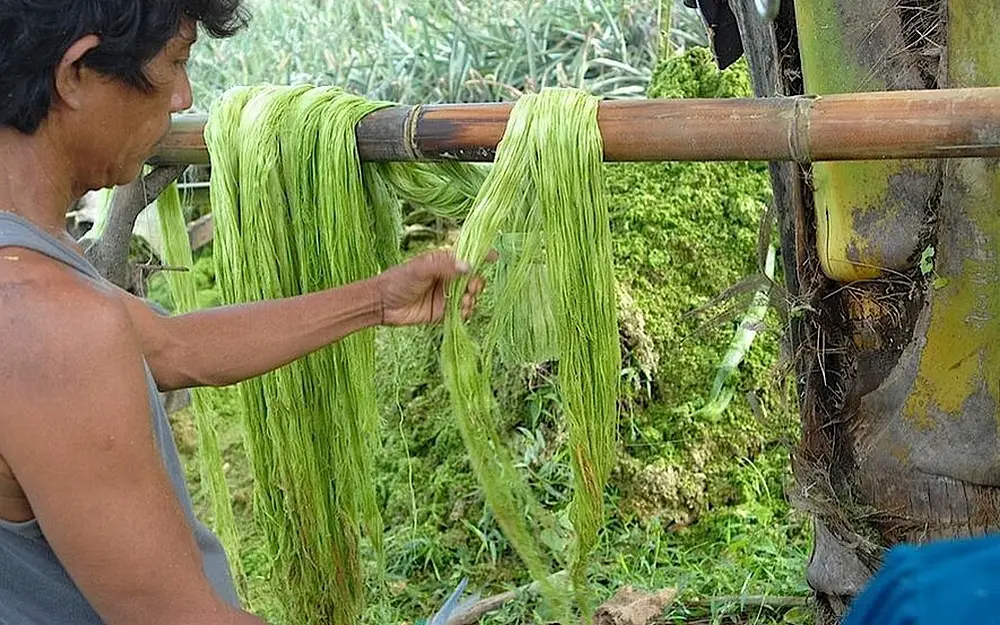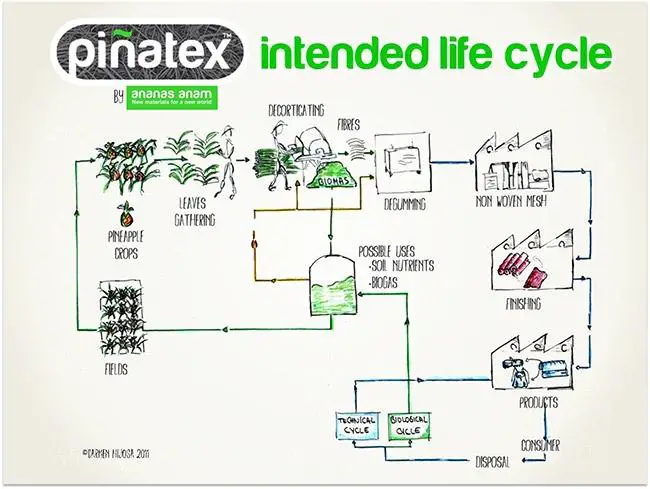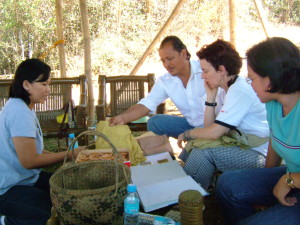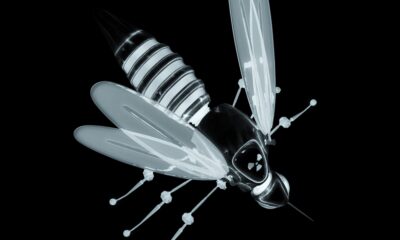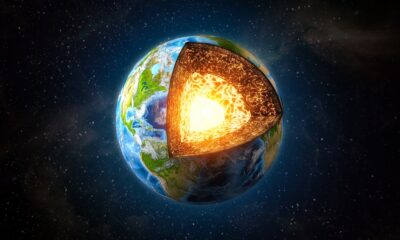Awareness
Vegan Leather is Now a Thing, And You Won’t Believe What it is Made Out Of!

As we take baby steps towards living more ethical lives, we start to notice that we are surrounded with an overwhelming list of issues that we need to address in order to thrive with nature and honestly do no harm. We may start out by reducing our meat and dairy consumption and as our sensitivity returns eventually swear it off altogether. Each of us is on our own path and is doing the best we can and that is why when a valid solution is given to a current problem we want to shout it from the mountaintops!
Leather use is still extremely common!
Leather, is an issue that many of us have been familiar with ever since we were children watching movies such as 101 Dalmations, and yet most of us don’t notice how often we use products made out of leather every day. Animal hides are easily recognized in situations such as hunting and fur coats but it is actually much more common than that. Common products such as vehicles, furniture, shoes, belts, books, shirts, some wallpaper, hats, and wallets are often made out of leather.
In a world where we would prefer to avoid plastic products as much as possible, it is awesome to know that someone has taken the time to use a recycling technique to introduce a new Vegan approved leather alternative.
Piñatex™ is the innovative product made by Ananas Anam
The new ‘leather’ was designed by Ananas Anam which has been created from a sustainable high performing natural textile which is made from plant fiber waste. Piñatex™ is located in the Philippines where they create the product out of pineapple leaf fibers.
This awesome new approach is going to help support local farmers in a whole new way. Using a common waste product from pineapple farms in these growing countries the products will be made without any extra need for fertilizer, water, land or pesticides.
What an incredible idea to use something that is just being thrown away and instead craft it into a product we could use worldwide to stop the needless killing of animals for their skin. These products could be easily used in upholstery at home and in our cars, used for fashion accessories or clothing.
Check out this awesome infographic that shows us a breakdown of how the process works.
Decortication
When the pineapple leaves have their fibers extracted this process is known as decortication. This can be done on a local level within the community providing jobs and helping the locals. The remaining plant material that isn’t extracted can be used as an organic fertilizer and returned to its proper place in the earth.
The locals can use the organic fertilizer on their crops or sell it to make an additional income that can help promote sustainable organic farming in that region of the world.
After decortication, the fibers go through a process to be made into a ‘nonwoven textile’ which is what the vegan leather is made out of.
Leather is not only starting to be recognized worldwide as unethical but it is also becoming more scarce and expensive. This is unfortunately pushing the world towards the use of more plastic materials and we all know that plastic is already a major issue worldwide.
This is why the introduction of a sustainable textile that is super versatile, is just in time to help us shift into a more conscious world.
“Our vision is to develop textiles and textile materials that use processes that enhance the well-being of the earth and its people through the entire life cycle of the products. Our inspiration is the *Cradle to Cradle® approach, which supports ecological, intelligent and innovative design policies within today’s economic environment.” -ananas-anam.com
Carmen Hijosa is the Social Entrepreneur behind this brilliant design.
Carmen Hijosa founded Ananas Anam Ltd who was known for selling leather goods in Ireland in from 1978 to 1993. Knowing the industry she decided to start searching for a new approach that would provide for the world’s needs without using the traditional leather.
Back in the 90’s Hijosa decided to take a consulting position in the Philippines where she worked in a design center with product development. This is when she learned that pineapple leaf fibers could be used for so much more than they already were.
The pineapple leaf is both strong and has a fine quality making it an ideal alternative to leather. She spent the next several years perfecting her method which is when Piñatex™ was formed.
Hijosa and the other members of the Ananas Anam Ltd tell us that they are a diverse group of people with a wide variety of skills, backgrounds, and nationalities. Their goal is to develop textiles that are not only natural but they have a positive impact on the product world.
So you may have some questions specifically about the product. Here are some important points covered on their website.
Is Piñatex™ a form of leather?
No, leather is made out of animal skin. Piñatex™ is a textile made from pineapple leaf fibers that after being finished can take on a similar texture and finish as traditional leather. This product is a vegan product that is both natural and safe.
Are you sure Piñatex™ is 100% animal free?
Yes, Piñatex™ assures us that there is no animal products or by-products used in the process of making this product.
Is this process Sustainable?
One of the most important parts of this whole plan was to create a product that is 100% sustainable. This is the founding principle of the company.
Since the pineapple leaves are a leftover byproduct of the pineapple harvesting process there are plenty of materials to go around and there is no need to plant more pineapples. This process just makes the waste products more valuable to the farmers and creates more opportunities for local farmers to support their communities.
Is the Piñatex™ product biodegradable?
Yes, as part of the research and development it was determined that this product does biodegrade, unlike many plastic materials.
What an incredible way to make a huge difference in our world. Thank you Carmen Hijosa for spending so many years of your life in search for an actual solution for the textile industry.
Sources-
Image credit: ananas-anam.com
Awareness
Genetically Modified Mosquitoes Have Been Released in the US
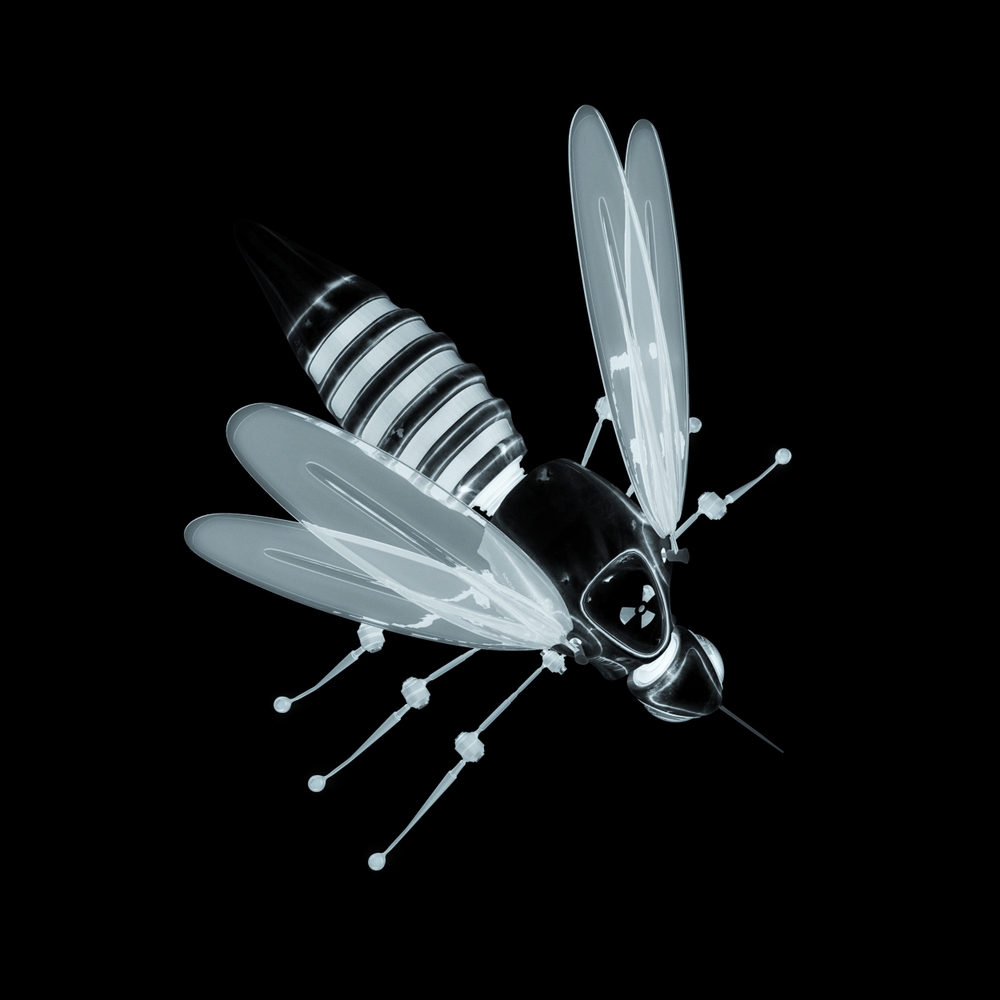
Imagine a future where humans can rewrite the very fabric of life, tinkering with nature to solve some of the world’s deadliest problems. That future isn’t decades away—it’s already here. In the US, thousands of genetically modified mosquitoes have been unleashed into the wild, their mission to combat diseases like dengue, Zika, and malaria. These tiny, gene-edited creatures are designed to self-destruct after disrupting mosquito populations, a biological trick that could reshape ecosystems and public health strategies alike.
But are we solving one problem only to create another? While advocates champion this as a breakthrough in disease control, critics warn of unintended consequences: ecological ripple effects, ethical quandaries, and the unsettling precedent of genetic experimentation in the wild. Are genetically modified mosquitoes a modern miracle—or Pandora’s box?
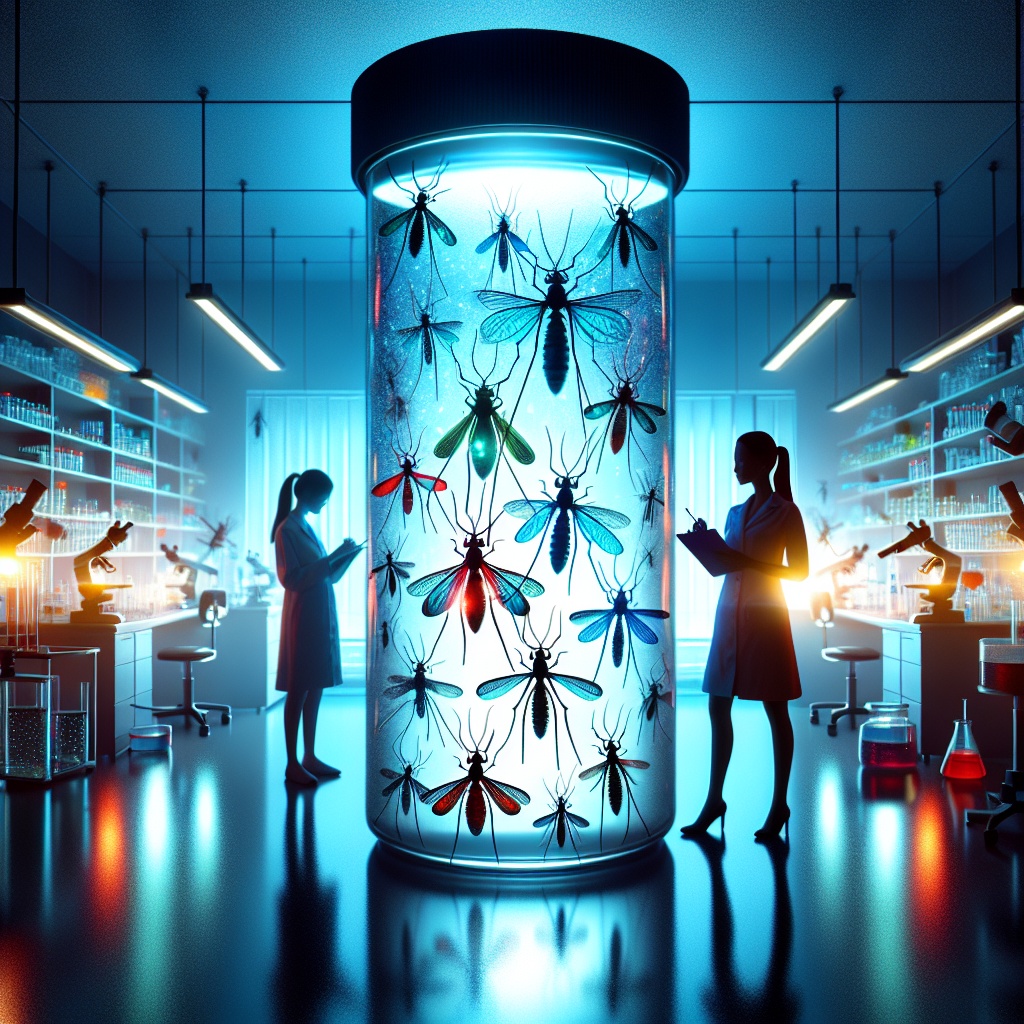
How Do Genetically Modified Mosquitoes Work?
At first glance, these modified mosquitoes appear no different from their natural counterparts. However, beneath their delicate wings lies a scientific breakthrough that turns nature against itself. Created by the biotech firm Oxitec, these mosquitoes have been engineered with a self-limiting gene designed to curb the population of Aedes aegypti—a species notorious for spreading diseases like dengue, Zika, and yellow fever.
Here’s how it works: male mosquitoes, which don’t bite or spread disease, are altered to carry a gene that ensures their offspring won’t survive to adulthood. When these genetically modified males are released into the wild, they mate with female mosquitoes. The resulting larvae inherit the lethal gene and die before they can reproduce, gradually reducing the overall mosquito population. In theory, this approach targets the root of mosquito-borne illnesses without the need for harmful pesticides.
The technology has been tested in Brazil, Panama, and other parts of the world with some success, leading to its experimental deployment in the US. Supporters hail it as a precise and environmentally friendly solution to a deadly problem. Yet, as with any biological intervention, the devil is in the details. What happens if this delicate system goes awry? And are these engineered insects as controllable as scientists claim? The answers remain as elusive as the mosquitoes themselves.
Where and Why: The Scope of the Release
The release of genetically modified mosquitoes in the United States marks a new chapter in the battle against mosquito-borne diseases. Florida and Texas, regions notorious for their warm climates and mosquito-friendly environments, have been selected as testing grounds for Oxitec’s genetically altered insects. These areas experience seasonal outbreaks of diseases like dengue and Zika, making them prime candidates for this experimental solution.
Oxitec’s program, approved by the Environmental Protection Agency (EPA), involves the release of millions of genetically modified male mosquitoes into these communities. The initiative is framed as an effort to curb the population of Aedes aegypti, a mosquito species responsible for transmitting these illnesses. By targeting this specific species, proponents argue, the approach minimizes harm to other wildlife while focusing on a major public health threat.
However, the scale and location of the release have sparked heated debate. Some residents and environmental advocates question whether adequate precautions have been taken. Could these experiments impact local ecosystems, or lead to unintended consequences for humans and wildlife? These concerns have amplified the scrutiny surrounding the program, raising questions about the balance between scientific ambition and ecological stewardship.
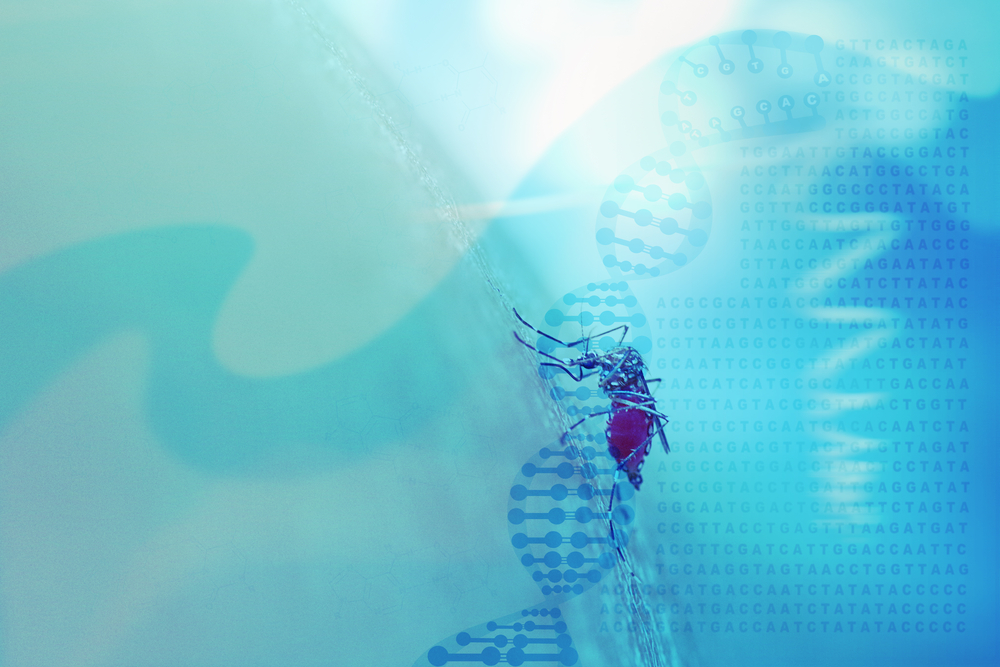
Concerns and Controversies: Ethical and Ecological Implications
Critics have voiced concerns about the potential ecological consequences of reducing or altering Aedes aegypti populations. While these mosquitoes are a public health threat, they are also part of the food chain, serving as prey for various species like birds, bats, and other insects. Disrupting their population could inadvertently affect predator species and ripple through ecosystems in ways that scientists cannot fully predict.
The challenge lies in the inherent complexity of ecosystems, which cannot be replicated in a controlled laboratory environment. “Nature is full of interdependencies,” argue ecologists, highlighting the potential for cascading effects that might arise from tampering with a single species.
The Risk of Genetic Spillover
A key concern surrounding genetically modified mosquitoes is the risk of unintended genetic interactions. If these engineered mosquitoes breed with other species, could their genetic modifications spread? While Oxitec assures the public that the self-limiting gene is designed to prevent survival in offspring, skeptics caution that nature has a way of defying human expectations.
This uncertainty raises fears about mutations or genetic spillover, which could result in unforeseen consequences. What starts as a targeted intervention could potentially lead to new challenges, creating a problem as significant as the one it aims to solve.
Ethics and Public Consent
Beyond the ecological risks, the ethical implications of these trials have sparked widespread debate. Many residents in areas like Florida and Texas have voiced their frustration over the lack of transparency and limited community input before these experimental releases began. For some, this feels like a decision imposed upon them, with insufficient regard for their consent or concerns.
Additionally, activists point out the broader ethical question: should humans have the right to manipulate nature so fundamentally? While proponents argue the approach is necessary to combat deadly diseases, critics urge caution, warning that the long-term consequences of such interventions remain unknown.
The debate surrounding genetically modified mosquitoes extends beyond science—it delves into our responsibilities as stewards of the natural world and forces us to confront the ethical boundaries of innovation.
Health Risks and Unintended Consequences
A significant concern raised by skeptics is the possibility of resistance developing within mosquito populations. If some mosquitoes manage to survive the effects of the self-limiting gene, natural selection could favor those individuals, potentially leading to a stronger, more resistant population. This raises questions about the long-term sustainability of this approach and whether it could inadvertently create a more challenging problem than the one it aims to solve.
Additionally, while Oxitec assures that the genetic modifications are designed to be specific and controlled, concerns linger about the unpredictability of nature. Critics worry that unexpected mutations could arise from the interaction of genetically modified mosquitoes with their environment, leading to consequences that have not been fully anticipated.
Impact on Human and Environmental Health
Although the modified male mosquitoes are non-biting and their gene alterations are intended to be contained within the Aedes aegypti species, doubts remain about their broader impact. Some fear the potential for unintended interactions with other species or the environment. These concerns, while largely theoretical, underscore the need for extensive, long-term studies to ensure the safety of such interventions.
Andrea Leal, the head of mosquito control in the Florida Keys, acknowledges both the promise and the uncertainty of these emerging technologies, stating, “The good news is we’ve got these emerging technologies that show great promise in reducing Aedes aegypti mosquitoes.” While this optimism is shared by some, others argue that the risks are too significant to ignore without more comprehensive research.
Ecosystem Imbalances
Another critical issue is the potential ecological imbalance that could result from targeting Aedes aegypti. As a species integral to certain ecosystems, their reduction or elimination could disrupt food chains, impacting predators like birds and bats that rely on mosquitoes as a food source. Additionally, reducing the population of Aedes aegypti might open ecological niches for other, possibly more harmful, mosquito species to thrive. This risk highlights the complexities of meddling with natural systems, even with the best intentions.
As these concerns accumulate, it becomes clear that the introduction of genetically modified mosquitoes is as much a test of ecological stewardship as it is a scientific innovation. Balancing potential benefits with these risks remains a daunting challenge for researchers and policymakers alike.
The Bigger Picture: Is This the Right Approach?
The release of genetically modified mosquitoes is touted as a breakthrough, but many view it as a reckless gamble with nature. Traditional methods like eliminating stagnant water and using biological controls such as Wolbachia bacteria have proven effective without the risks of genetic modification. Critics argue these safer alternatives are being overshadowed by corporate interests pushing untested and controversial technologies, risking ecological disruptions and public trust.
Despite claims of success, the long-term safety and effectiveness of genetically modified mosquitoes remain unverified. Andrea Leal, head of mosquito control in the Florida Keys, said, “The good news is we’ve got these emerging technologies that show great promise in reducing Aedes aegypti mosquitoes.” However, “promise” does not equate to evidence, and rushing to release these insects without full understanding risks unintended consequences that could worsen the problem.
Ethically, this project has sparked outrage over a lack of transparency and public consent. Many residents feel like unwilling participants in an experiment that could have unknown repercussions for their environment and health. Critics warn that meddling with nature at this scale risks creating new ecological imbalances while eroding public confidence in scientific oversight, making these trials more of a warning than a solution.
A Warning for the Future
The release of genetically modified mosquitoes is a stark reminder of the complexities and ethical dilemmas inherent in tampering with nature. While the intention to combat deadly diseases like dengue and malaria is noble, the risks and uncertainties surrounding this approach cannot be ignored. From potential ecological disruptions to unanswered questions about long-term safety, this experiment serves as a cautionary tale about the consequences of prioritizing rapid deployment over thorough research and public consent.
Critics argue that the rush to embrace genetic engineering reflects a dangerous overconfidence in humanity’s ability to control nature. Without clear evidence of success or a transparent process involving affected communities, these projects risk alienating the public and jeopardizing ecosystems in ways that may be irreversible. The promise of genetically modified organisms must be balanced against the real-world consequences they could unleash.
As the debate continues, it is essential to prioritize caution, transparency, and public involvement. Scientific innovation must not come at the expense of ethical responsibility or ecological integrity. The story of genetically modified mosquitoes should compel us to tread carefully, recognizing that solutions to global challenges must be as sustainable and thoughtful as the problems they aim to solve.
Sources:
- Emerging Mosquito Control Technologies | US EPA. (2024b, October 8). US EPA. https://www.epa.gov/regulation-biotechnology-under-tsca-and-fifra/emerging-mosquito-control-technologies#:~:text=In%20April%202020%2C%20EPA%20approved,mosquitoes%20at%20reducing%20local%20mosquito
Animals
X-Ray Reveals Rescue Dog Was ‘Shot in the Face’ Before Arriving at Shelter. Now, She’s Almost Ready for Adoption

Imagine walking through life with scars from battles no one could see—until one day, an X-ray reveals the truth. That’s the story of a brave rescue dog whose silent suffering came to light when shelter veterinarians uncovered a shocking secret: she had been shot in the face.
This discovery, hidden beneath her gentle demeanor, paints a picture of resilience few can fathom. How does a creature who endured such trauma still find it in her heart to trust again? Her journey from tragedy to recovery is a testament to the incredible strength of animals and the transformative power of compassion.

A Troubled Past Unveiled by an X-Ray
When this courageous rescue dog first arrived at the shelter, her past was a mystery. She walked into her new environment with a demeanor that hinted at pain but didn’t give away the gravity of what she had endured. Thin, wary, and subdued, she bore no visible signs of trauma, but there was a guardedness in her eyes that spoke volumes. It wasn’t until the shelter’s veterinarians performed a routine health check that the full weight of her story began to emerge. An X-ray revealed a horrifying discovery: fragments of metal were lodged in her skull, a stark reminder of the violence she had once faced. The images confirmed the unthinkable—she had been shot in the face.
The revelation left the shelter staff stunned and heartbroken. How could such a gentle, unassuming creature have survived such brutality? The gunshot wound, though inflicted long before her arrival, had never been treated, leaving behind not just physical scars but emotional wounds as well. Her ability to endure and adapt without any medical care was remarkable, but it also underscored the deep resilience animals often display in the face of unimaginable hardship. For the staff, it was a moment that reaffirmed their mission: they were not just rescuing a dog; they were rewriting her story, giving her a chance at the life she deserved.
Yet, despite all she had been through, there was a light in her eyes that refused to dim. It wasn’t the look of defeat or bitterness—it was survival, pure and simple. There was something profoundly inspiring about her quiet strength, the way she carried herself with a mix of caution and curiosity. Her story became a rallying cry for the shelter team, a reminder of why they do what they do. They knew they had been entrusted with a life that had been neglected and harmed, and they were determined to replace her pain with hope and healing.
From Trauma to Hope: The Shelter’s Role
The moment her story unfolded through that X-ray, the shelter’s team knew they had to act quickly. Beyond the physical injuries, there was a lifetime of emotional scars that needed addressing. The veterinarians set to work, carefully evaluating her condition to ensure she received the medical care she so desperately required. While her injuries no longer posed an immediate threat to her life, the remnants of that gunshot served as a constant reminder of her harrowing past. Pain management became a priority, as did monitoring her overall health, but the real journey was one of emotional healing.
The shelter staff, familiar with the fragility of animals who’ve suffered trauma, approached her with a mix of tenderness and patience. They understood that trust, once broken, takes time to rebuild. In the early days, her interactions were marked by hesitance. She flinched at sudden movements and kept her distance, as though bracing for harm. But with each passing day, a transformation began to take place. The consistent kindness of the staff started to chip away at her fear. Treats became a gateway to connection, and gentle words slowly coaxed her out of her shell.
Her journey to recovery wasn’t just about regaining physical strength; it was about learning to trust again. The shelter staff provided not only a safe haven but also an environment rich with love and reassurance. Volunteers spent hours sitting with her, reading quietly or simply being present, allowing her to acclimate to the idea that humans could be kind. Over time, she began to wag her tail tentatively and even approach her caretakers for affection. Her recovery became a testament to the profound resilience of animals and the power of compassion to heal even the deepest wounds.

A Glimpse into Her New Life
As the days turned into weeks, the dog began to reveal a personality hidden beneath the layers of trauma. Where there was once hesitance, there was now a growing sense of curiosity. Small gestures—like a tentative wag of her tail or the way she leaned in ever so slightly when a hand reached out to pet her—signaled the emergence of hope. Though her journey had been marked by pain, she was beginning to embrace the possibility of joy once more.
Shelter staff and volunteers often describe her as a quiet observer. She watches her surroundings intently, taking in the rhythm of daily life at the shelter. Despite her past, she shows signs of warmth and connection, especially with those who have been a constant presence in her life. Her interactions with people are growing braver; she no longer flinches at every movement. Instead, she has begun to greet familiar faces with soft nudges and a gentle wag. Her progress may be slow, but it is undeniable.
One particularly heartwarming moment occurred when a volunteer brought a plush toy into her kennel. At first, she regarded it with suspicion, sniffing cautiously. But eventually, curiosity won out, and she carried the toy to her bed—a simple, yet profound step in reclaiming the playfulness that had been stolen from her. Her recovery journey is not just about survival but about rediscovering the life she was meant to live. Every small milestone, from accepting a treat to curling up comfortably beside a volunteer, tells a story of a dog learning to trust and love again. Her resilience serves as a powerful reminder of the unyielding spirit animals possess and the difference that compassion can make in their lives.
The Dark Reality of Animal Cruelty
Her story is a stark reminder of the cruelty that countless animals endure every day. The fact that she survived a gunshot to the face and remained unnoticed, untreated, and unloved for so long highlights a much larger issue—animal abuse often goes unnoticed, hidden in the shadows where it thrives. Unfortunately, her experience is not an isolated incident. Reports from animal welfare organizations reveal alarming statistics: millions of animals are abused, abandoned, or neglected annually, with many cases never coming to light.
Her case also underscores the resilience of animals and the heartbreaking reality that so many suffer in silence. While her story has begun to take a hopeful turn, countless others are not as fortunate. Shelters across the country are inundated with animals bearing physical and emotional scars, much like hers. These organizations rely on limited resources to tackle the overwhelming task of providing care, rehabilitation, and safety to animals who have endured unimaginable cruelty.
This dog’s journey sheds light on the urgent need for greater awareness, education, and advocacy. Animal cruelty is preventable, but it requires community effort—individuals speaking up when they suspect abuse, supporting local shelters, and holding abusers accountable. Her survival is both a testament to her strength and a rallying cry to ensure no animal has to endure such suffering without help. Her story is a powerful reminder that while the scars of abuse run deep, compassion and action can change the lives of animals who desperately need a second chance.
Almost Ready for Adoption: The Journey Ahead
As the days pass, this resilient dog continues to blossom in the care of the shelter. Her physical healing has made tremendous progress, and her emotional recovery is gaining ground with each interaction. Her once-scarred face, though a constant reminder of her past, has become a symbol of her remarkable strength and endurance. She’s no longer the quiet, hesitant dog who arrived in fear; she is slowly becoming a confident, loving companion.
Her future now lies in the hands of potential adopters, but finding the right home is just as critical as her physical recovery. Shelter staff are carefully assessing her needs, looking for a family that can offer the patience, love, and understanding she requires. She has shown that she thrives in environments where she feels secure and where her emotional needs are met with gentleness. Her ideal home would be one where there are no expectations of instant perfection, but rather a willingness to allow her to settle in at her own pace.
Though the shelter is confident she will soon be ready for adoption, it is not rushing the process. They want to ensure that she finds the perfect family who will provide her with the stability and love she deserves. Whether that’s a quiet, calm home or one with another dog to be her companion, the focus is on ensuring that she is given the space to fully heal and thrive. Her journey isn’t over yet, but the finish line is in sight—and with the right adopter, she will soon experience the happiness she has waited so long for.
Awareness
Doctors Warn Cooking Oil Used By Millions May Be Fueling Explosion Of Colon Cancers In Young People

For many of us, cooking oil is an unassuming kitchen staple—a foundation for countless meals. But what if the very oils we rely on every day are quietly contributing to a growing health crisis? Recent research has uncovered a startling link between popular cooking oils and a dramatic rise in colon cancer cases, particularly among young people.
While the convenience and flavor of these oils have made them a mainstay in modern diets, scientists are now questioning their long-term impact on our health. Could the oils we trust be fueling more than just our recipes?
What Are Seed Oils and Why Are They Popular?
Seed oils are edible oils extracted from the seeds of various plants, including canola (rapeseed), sunflower, corn, and grapeseed. They have become ubiquitous in modern diets, largely due to their neutral flavor, high smoke points, and cost-effectiveness, making them ideal for cooking and as ingredients in processed foods.
Common Seed Oils:
- Canola Oil: Derived from rapeseed, canola oil is widely used for frying and baking due to its mild taste and high smoke point.
- Sunflower Oil: Extracted from sunflower seeds, this oil is popular for sautéing and as a salad dressing base.
- Corn Oil: Commonly used in frying and margarine production, corn oil is valued for its affordability.
- Grapeseed Oil: A byproduct of winemaking, grapeseed oil has a neutral flavor and is often used in dressings and high-heat cooking.
The extraction of seed oils typically involves mechanical pressing or chemical solvents. Mechanical methods include cold pressing or expeller pressing, which may retain more nutrients. Chemical extraction often uses solvents like hexane to maximize yield; however, concerns exist about potential residues and nutrient loss during refining processes.
The rise of seed oils in the American diet began in the early 20th century, with consumption increasing from about one gram per day in 1900 to approximately 80 grams by 2018. This surge is attributed to their incorporation into a wide array of processed foods, from salad dressings to baked goods, driven by their economic advantages and versatility.
Nutritional Profile: Seed oils are rich in polyunsaturated fatty acids (PUFAs), particularly omega-6 fatty acids. While these are essential fats that the body needs, excessive intake, especially in relation to omega-3 fatty acids, has raised health concerns.
Contemporary Usage: Today, seed oils are prevalent in both home kitchens and the food industry. Their high smoke points make them suitable for frying and sautéing, and their neutral flavors do not overpower dishes. However, their widespread use, especially in ultra-processed foods, has led to debates about their health implications.
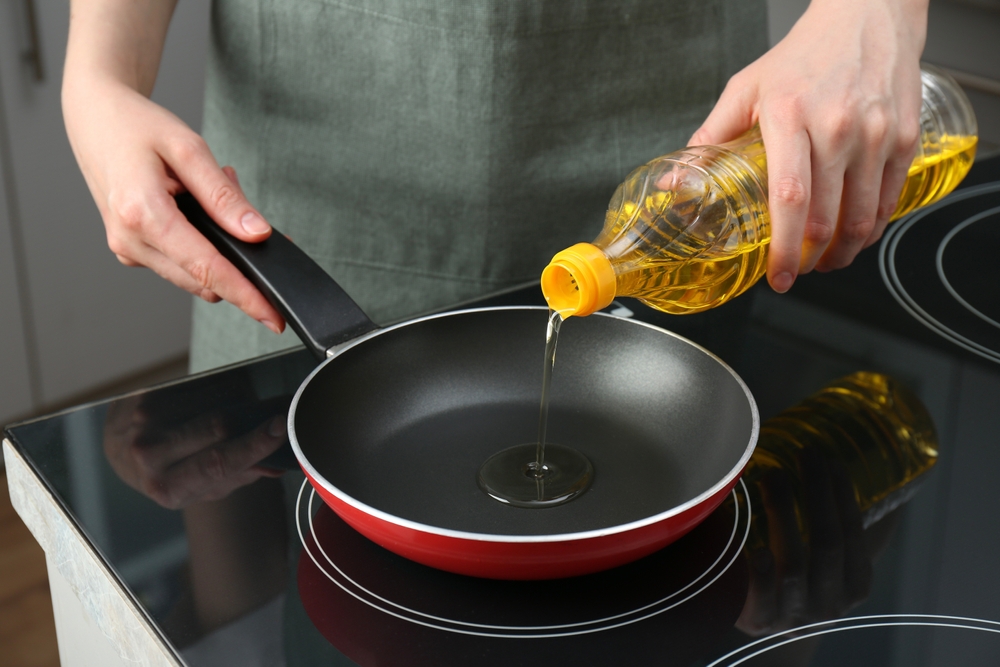
The Science Behind the Warning
Recent research has raised concerns about the potential health risks associated with certain seed oils, commonly used in cooking, and their link to the increasing incidence of colon cancer among young individuals. A study conducted by the University of South Florida and Tampa General Hospital Cancer Institute analyzed over 100 tumor samples from patients with colorectal cancer. The findings revealed elevated levels of bioactive lipids—molecules that can promote inflammation—in the tumors. These lipids are believed to originate from the metabolism of seed oils such as sunflower, canola, corn, and grapeseed.
Bioactive lipids play a dual role in cancer progression. Firstly, they promote inflammation, creating an environment conducive to tumor growth. Secondly, they suppress the body’s immune response, hindering its ability to combat cancer cells effectively. This combination facilitates the development and progression of tumors in the colon.
The study’s lead author, Dr. Timothy Yeatman, emphasized the impact of diet on inflammation and cancer development: “It is well known that patients with unhealthy diets have increased inflammation in their bodies.” He further noted, “We now see this inflammation in the colon tumors themselves, and cancer is like a chronic wound that won’t heal.”
These findings align with previous research indicating that diets high in ultra-processed foods and unhealthy fats contribute to chronic inflammation, a known risk factor for various cancers, including colorectal cancer. A study published in Cancer Prevention Research demonstrated that consumption of frying oil exacerbated colonic inflammation and tumor growth in mice, suggesting a similar mechanism may be at play in humans.
Colon Cancer Surge in Younger Populations
In recent years, a concerning trend has emerged: a significant increase in colorectal cancer diagnoses among individuals under 50. This shift has prompted extensive research into potential causes, with dietary habits, particularly the consumption of ultra-processed foods, coming under scrutiny.
A pivotal study published in The BMJ examined the association between ultra-processed food intake and colorectal cancer risk. The research revealed that men with the highest consumption of ultra-processed foods had a 29% higher risk of developing colorectal cancer compared to those with the lowest intake. Notably, this association was not observed in women.
Further supporting these findings, a study highlighted by The Times reported that England has experienced a 3.6% annual increase in bowel cancer cases among individuals aged 25 to 49 over the past decade. Experts attribute this rise to factors such as poor diet, increased consumption of ultra-processed foods, obesity, and lack of exercise.
The link between diet and colorectal cancer is further emphasized by research from the University of South Florida and Tampa General Hospital Cancer Institute. Their study found elevated levels of inflammation-causing bioactive lipids in tumor samples, which are believed to originate from the metabolism of seed oils like sunflower, canola, corn, and grapeseed. These oils are prevalent in ultra-processed foods, suggesting a connection between their consumption and increased cancer risk.

Healthy Alternatives to Seed Oils
Given the potential health risks associated with certain seed oils, incorporating healthier alternatives into your diet can be a proactive step toward reducing inflammation and supporting overall well-being. Researchers from the University of South Florida and Tampa General Hospital Cancer Institute suggest that “restoring dietary balance using healthy, unprocessed foods rich in omega-3 fatty acids” can help mitigate the adverse effects linked to seed oils.
Healthy Alternatives to Seed Oils:
- Olive Oil: Extra virgin olive oil is rich in monounsaturated fats and antioxidants, which have anti-inflammatory properties. Its use is a cornerstone of the Mediterranean diet, associated with numerous health benefits, including a reduced risk of chronic diseases.
- Avocado Oil: Similar to olive oil, avocado oil contains monounsaturated fats and vitamin E, promoting heart health and reducing inflammation. Its high smoke point makes it suitable for various cooking methods.
- Coconut Oil: Containing medium-chain triglycerides, coconut oil is easily metabolized and may offer antimicrobial benefits. However, it is high in saturated fats, so moderation is advised.
- Butter and Ghee: These traditional fats are free from trans fats and, when sourced from grass-fed cows, contain beneficial fatty acids. They are stable at high temperatures, making them suitable for cooking.
By making informed dietary choices and opting for healthier cooking oils, you can take meaningful steps toward reducing inflammation and potentially lowering the risk of conditions such as colon cancer. As always, it’s advisable to consult with healthcare professionals when making significant changes to your diet.
How to Protect Yourself
Protecting yourself from the potential risks associated with certain seed oils involves informed dietary choices and mindful consumption habits. Here are practical steps to consider:
1. Limit Consumption of Ultra-Processed Foods
Many processed foods contain seed oils high in omega-6 fatty acids, which can promote inflammation when consumed excessively. Reducing intake of these foods can help balance your fatty acid profile.
2. Read Food Labels Carefully
Identify and limit products containing oils like soybean, corn, sunflower, and canola. Being vigilant about ingredients helps you avoid unintended consumption of seed oils.
3. Prepare Meals at Home
Cooking at home allows control over the ingredients and cooking methods, enabling healthier choices and the use of preferred oils.
4. Balance Omega-6 and Omega-3 Fatty Acids
Incorporate foods rich in omega-3s, such as flaxseed oil, chia seed oil, and hempseed oil, to counterbalance omega-6 intake.
5. Be Cautious with High-Heat Cooking
Some oils can produce harmful compounds when overheated. Use oils with appropriate smoke points for your cooking methods to minimize this risk.
Taking Charge of Your Health: Small Changes, Big Impact
The potential risks associated with seed oils and ultra-processed foods underscore the importance of dietary awareness in protecting your health. While research continues to evolve, prioritizing whole, unprocessed foods and choosing healthier cooking oils can significantly reduce inflammation and lower the risk of conditions like colon cancer.
As Dr. Timothy Yeatman aptly put it, “Cancer is like a chronic wound that won’t heal.” By making informed choices, such as opting for oils rich in omega-3 fatty acids, you can support your body’s natural healing mechanisms and take proactive steps toward long-term wellness. Remember, even small, consistent changes in your diet can have a profound impact on your overall health.
Sources:
- Colorectal cancer statistics, 2020. CA Cancer J Clin 2020; https://acsjournals.onlinelibrary.wiley.com/doi/10.3322/caac.21601
- Dietary intake of omega-6 and omega-3 fatty acids and risk of colorectal cancer in a prospective cohort of U.S. men and women. Cancer Epidemiol Biomarkers Prev 2009;18:516–25. https://aacrjournals.org/cebp/article/18/2/516/166742/Dietary-Intake-of-6-and-3-Fatty-Acids-and-Risk-of
Awareness
You Can Live Permanently On A Cruise Ship! Here’s How Much It Costs

Imagine a life where the horizon is your backyard, the ocean breeze your constant companion, and each day brings a new destination to explore. For many, the idea of living permanently on a cruise ship feels like a far-fetched fantasy—a fleeting thought at the end of a vacation when returning to reality feels less than appealing. But what if it wasn’t just a dream?
Surprisingly, living on a cruise ship full-time is not only possible but has already become a reality for some adventurous souls. Whether it’s retirees seeking a life of luxury, digital nomads working with a view of endless seas, or travelers who simply crave perpetual exploration, living at sea offers a unique and intriguing lifestyle.
But how much does it cost to live aboard a cruise ship? Is it truly affordable, or is it a luxury reserved for the ultra-wealthy? And what are the challenges of turning this dream into reality?
Is Living on a Cruise Ship Really Possible?
Living on a cruise ship full-time is not only possible but has become an appealing lifestyle choice for many. Individuals like 96-year-old Morton Jablin have embraced this way of life, residing on ships such as the Regent Seven Seas Navigator for over a decade.
The World Residences at Sea, for instance, offers 165 private residences, including apartments and studio cabins, allowing residents to continuously circumnavigate the globe.
This lifestyle offers unique advantages, such as the opportunity to explore diverse destinations without the need for constant packing and unpacking. As one source notes, “Living on a cruise ship means you can easily visit places all over the world, from the Mediterranean’s historic ports to the Caribbean’s tranquil beaches.”
Additionally, the all-inclusive nature of cruise living covers essentials like meals, entertainment, and activities, providing a hassle-free experience. However, it’s essential to consider factors such as the cost, which can range from $60,000 to $100,000 annually, and the need for meticulous planning to ensure a seamless transition to this unconventional lifestyle.
Cruise Ships Designed for Permanent Living
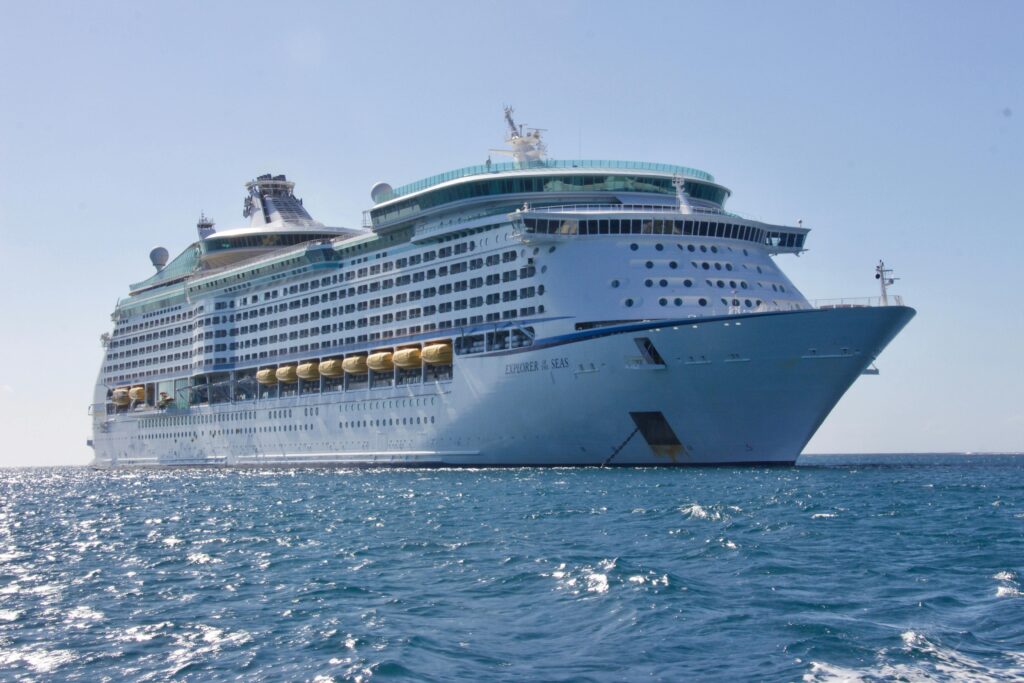
Living permanently on a cruise ship is an enticing concept that has been transformed into reality by several innovative residential vessels. These ships are specifically designed to offer the comforts of home combined with the luxury and adventure of continuous global travel.
Launched in 2002, The World is the largest private residential cruise ship, featuring 165 residences ranging from studios to expansive apartments. This ship continuously circumnavigates the globe, with residents actively participating in itinerary decisions, creating a dynamic and personalized living experience. Onboard amenities include a supermarket, six restaurants, a fitness center, a golf simulator, and various cultural and educational facilities, ensuring that residents have access to a wide range of services and activities.
Set to launch in 2027, the MV Narrative by Storylines is a forthcoming residential cruise ship offering 530 fully furnished residences, including studios and multi-bedroom apartments. Designed for sustainable living, the ship will be powered by liquefied natural gas (LNG) and is planned to sail across six continents. Amenities on board are extensive, featuring 20 restaurants and bars, a microbrewery, three pools, a bowling alley, fitness and medical facilities, and a youth education program, catering to a diverse community of residents.
Launching in May 2024, Villa Vie Residences offers a unique opportunity for those seeking a permanent life at sea. The ship boasts a 3.5-year itinerary, visiting over 420 ports in 147 countries, and will continuously circle the globe. Prospective residents can purchase cabins, with prices starting from $99,999 for an inside cabin, accompanied by monthly fees of $3,499 for two people. This all-inclusive living arrangement covers high-speed internet and the option to invite guests on board, providing a comprehensive and flexible lifestyle for its inhabitants.
Living on Traditional Cruise Ships
Living full-time on traditional cruise ships is a practical and increasingly popular option for those seeking a nomadic lifestyle at sea. This approach involves booking consecutive voyages on standard cruise liners, allowing individuals to enjoy continuous travel without the commitment of purchasing a residence on a dedicated residential ship.
Cost Considerations
Financially, this method can be more accessible compared to investing in a private residence on a residential cruise ship. According to Cruise Mummy, “In theory, you could cruise on traditional cruise ships for around $35,000 per year, if you choose a basic cruise.”
This estimate includes accommodation, meals, and entertainment, making it a cost-effective alternative to traditional living expenses on land.
Lifestyle and Logistics
Adopting this lifestyle requires careful planning and flexibility. Cruise Mummy notes that “moving cabins might not be the end of the world – but it would be a lot easier if you didn’t have to pack and unpack at the start of every new itinerary.”
Additionally, some cruise lines may require passengers to disembark and re-board between itineraries, which can be a logistical consideration.
Real-Life Example
A notable example of someone embracing this lifestyle is Mario Salcedo, known as “Super Mario,” who has been living on Royal Caribbean International cruise ships since 2000. He spends approximately 15 days on land each year, fully immersing himself in the cruising lifestyle.
Salcedo describes his experience: “I’m so used to being on ships that it feels more comfortable to me than being on land.”
Considerations
While living on traditional cruise ships offers a unique and adventurous lifestyle, it’s essential to consider factors such as the need to frequently change cabins, potential requirements to disembark between cruises, and the importance of meticulous planning to ensure continuous accommodation. Despite these challenges, for many, the opportunity to explore the world from the comfort of a cruise ship makes this an appealing and viable option.
How Much Does It Really Cost to Live on a Cruise Ship?

Living permanently on a cruise ship is a unique lifestyle choice that comes with various costs, depending on factors such as the cruise line, accommodation type, and duration of stay. Here’s a breakdown of the expenses involved:
1. Accommodation Costs: Living on traditional cruise ships can cost between $2,800 and $6,000 per month, which typically includes accommodation, meals, drinks packages, and WiFi. For those seeking more upscale experiences, luxury cruise lines offer suites that can cost up to $40,000 per month. Some ships are specifically designed for permanent living, offering residences ranging from 1,439 to 6,500 square feet. Prices for these residences can range from $4 million to $36 million.
2. Additional Expenses: These are additional charges that vary depending on the itinerary and ports of call. For example, living on a cruise ship for a year can incur total costs of approximately $193,907 for a couple, including tickets, port fees, taxes, gratuities, and onboard spending. Service charges for the crew are often not included in the base price and can add up over time. Expenses for specialty dining, excursions, and other personal purchases should be factored into the budget.
3. Case Study: Mario Salcedo: Mario Salcedo, known as “Super Mario,” has been living on Royal Caribbean cruise ships for over two decades. He estimates his annual expenses to be around $60,000, which covers his cabin, meals, and other onboard services.
4. Considerations: It’s essential to have comprehensive health insurance that covers medical expenses both onboard and during shore visits. These services are usually available but may come at an extra cost.
Tips to Live on a Cruise Ship Cheaply
Living on a cruise ship doesn’t have to be prohibitively expensive. With strategic planning and mindful spending, it’s possible to enjoy life at sea without overspending. Here are some tips to help you live on a cruise ship more economically:
- Book Repositioning Cruises: Repositioning cruises occur when ships move from one region to another, often between seasons. These voyages are typically longer and offered at reduced rates, providing a cost-effective way to spend extended time aboard.
- Choose Interior Cabins: Opting for interior cabins can significantly reduce costs compared to balcony or ocean-view rooms. While they lack natural light, the savings can be substantial.
- Leverage Loyalty Programs: Many cruise lines offer loyalty programs that provide discounts, onboard credits, and other perks to frequent cruisers. For example, Royal Caribbean’s Crown & Anchor Society offers benefits that can enhance your cruising experience.
- Monitor Last-Minute Deals: Cruise lines often reduce prices to fill unsold cabins as departure dates approach. Keeping an eye on these deals can lead to significant savings.
- Limit Onboard Spending: Be mindful of extra expenses such as specialty dining, alcoholic beverages, and shore excursions. Sticking to included amenities and activities can help keep costs down.
- Consider Long-Term Voyage Packages: Some cruise lines offer extended voyage packages at discounted rates, which can be more economical than booking multiple shorter cruises.
- Utilize Onboard Amenities: Take full advantage of complimentary services and entertainment options included in your fare to maximize value.
Who is This Lifestyle For?
Many retirees are drawn to cruise ship living for its all-inclusive nature, providing accommodation, meals, entertainment, and medical services. This setup simplifies daily life and offers the opportunity to explore multiple destinations without the need for constant travel planning. As noted, “Living on a cruise ship is a viable option for many people including retirees and digital nomads.”
With the rise of remote work, some digital nomads consider cruise ships as a base, benefiting from amenities like internet access, coworking spaces, and the chance to visit various ports. However, reliable internet connectivity can be a concern, and it’s crucial to ensure that the ship’s facilities meet work requirements.
Living at Sea – A Dream Worth Pursuing?
Living permanently on a cruise ship is not just an extravagant fantasy but a tangible lifestyle for those with a spirit of adventure, financial stability, and a willingness to adapt. Whether it’s retirees seeking an all-inclusive global retirement plan or digital nomads blending work and exploration, the allure of constant travel and a simplified way of life remains unmatched.
However, this unique lifestyle comes with trade-offs: limited personal space, logistical hurdles, and significant financial considerations. For some, the benefits — endless ocean views, new destinations, and a vibrant onboard community — far outweigh the challenges. For others, the repetitive nature of cruising and health concerns might be deal-breakers.
Ultimately, living at sea is about freedom — freedom from routine, freedom to explore, and freedom to design a life outside the ordinary. If the thought of waking up to a new horizon every day excites you, then maybe life on the high seas could be your perfect adventure.
Awareness
Marathon runner diagnosed with terminal cancer urges people not to dismiss small symptom he experienced

When Lee Rawlinson, a 51-year-old marathon runner and devoted father, began experiencing a minor discomfort in his stomach, he brushed it off as nothing serious. After all, how could something so small disrupt the life of someone so strong and active? But that seemingly harmless symptom turned out to be a warning sign of something far more devastating.
Now, as Lee faces an unimaginable reality, he’s sharing his story with one urgent message: don’t ignore your body’s signals—no matter how insignificant they seem. His journey is a powerful reminder that sometimes, the smallest symptoms can hide the biggest truths.
The Symptom That Was Easy to Overlook
In January, Lee Rawlinson began experiencing a persistent dull ache in his lower abdomen. As a seasoned marathon runner, he attributed this discomfort to stress or perhaps his rigorous training regimen. “I just thought it was stress-related,” Lee admitted.
However, by September, the pain had intensified to an unbearable degree. “I was taking painkillers every day, and co-codamol, and it wasn’t touching the sides,” he recalled. “If you can imagine a scaffolding pole and someone slowly pushing it through you, right through to your back, it was like that.”
This escalation led Lee to seek emergency medical attention, where he received the devastating diagnosis of terminal pancreatic cancer. The cancer had already spread to his liver, making it inoperable and leaving him with only months to live.
Lee’s experience underscores a critical issue: the early symptoms of pancreatic cancer are often subtle and easily dismissed. According to the Mayo Clinic, pancreatic cancer often doesn’t cause symptoms until the disease is advanced. When they do occur, signs and symptoms may include abdominal pain that radiates to the back, loss of appetite, weight loss, jaundice, light-colored stools, and dark-colored urine.
A study published by the American Cancer Society highlights the challenges in early detection, noting that pancreatic cancer is hard to find early. The pancreas is deep inside the body, so early tumors can’t be seen or felt during routine physical exams. People usually have no symptoms until the cancer has become very large or has already spread to other organs.
Understanding Pancreatic Cancer
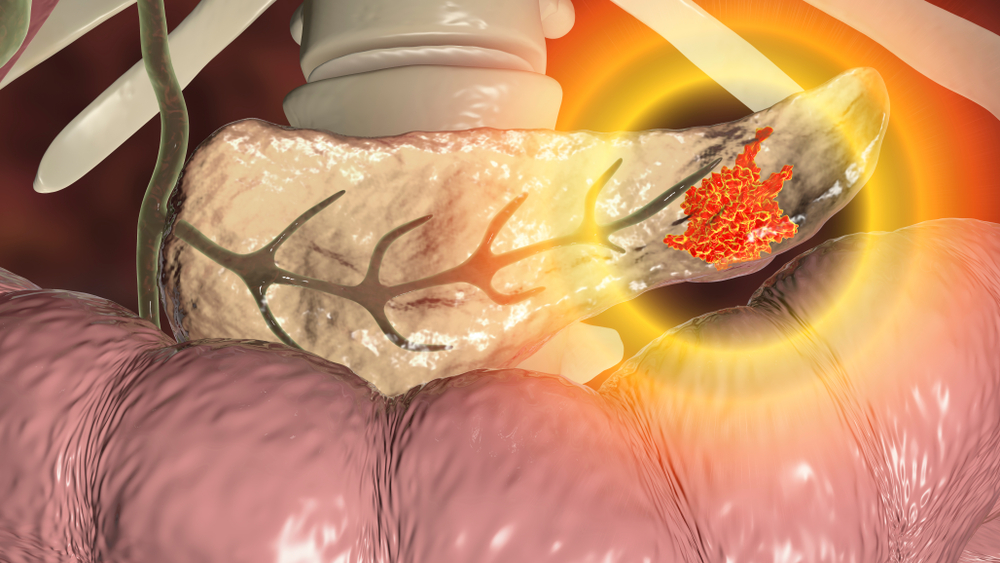
Pancreatic cancer arises when cells in the pancreas grow uncontrollably, forming a tumor. The pancreas, located behind the stomach, plays a crucial role in digestion and blood sugar regulation. This type of cancer is particularly aggressive and often goes undetected until it has reached an advanced stage.
Types of Pancreatic Cancer
There are two primary types of pancreatic cancer:
- Exocrine Tumors: The most common form, accounting for about 95% of cases. These tumors affect the exocrine glands responsible for producing digestive enzymes.
- Neuroendocrine Tumors (NETs): Less common, these tumors develop in the endocrine cells that produce hormones like insulin. NETs tend to have a better prognosis compared to exocrine tumors.
Pancreatic cancer is often dubbed the “silent killer” because its early symptoms are subtle and easily overlooked. Common signs include:
- Abdominal Pain: Discomfort in the upper abdomen that may radiate to the back. Lee Rawlinson described his pain as feeling like “a scaffolding pole and someone slowly pushing it through you, right through to your back.”
- Unexplained Weight Loss: Significant weight loss without changes in diet or exercise.
- Jaundice: Yellowing of the skin and eyes, often without accompanying pain.
- Digestive Issues: Loss of appetite, nausea, vomiting, and changes in stool.
These symptoms are often mistaken for less severe conditions, leading to delays in diagnosis. According to Cancer Research UK, pancreatic cancer is the 10th most common cancer in the UK, with around 10,500 people diagnosed each year. However, it is the fifth leading cause of cancer-related deaths, underscoring its severity.
Several factors can increase the risk of developing pancreatic cancer:
- Age: More than 45% of cases are diagnosed in individuals aged 75 and over.
- Smoking: Tobacco use significantly elevates risk.
- Chronic Pancreatitis: Long-term inflammation of the pancreas.
- Family History: A history of pancreatic cancer in close relatives.
- Obesity: Excess body weight has been linked to a higher incidence of pancreatic cancer.
Pancreatic cancer has one of the lowest survival rates among major cancers. The five-year survival rate is approximately 7-9%, largely due to late-stage diagnoses. Early detection is critical but challenging, emphasizing the importance of awareness and prompt medical attention for persistent, unexplained symptoms.
Lee’s Message: Don’t Ignore Small Signs

Image Credits: Instagram @rawly2010
Lee Rawlinson’s journey from experiencing a minor abdominal ache to facing terminal pancreatic cancer serves as a poignant reminder of the importance of heeding our body’s signals, no matter how insignificant they may seem. Initially dismissing his discomfort as stress-related, Lee now reflects on the consequences of overlooking such symptoms.
“I just thought it was stress-related,” Lee admitted, recalling the dull ache that began in January. By September, the pain had intensified to an unbearable degree, leading to his diagnosis on Halloween. “If you can imagine a scaffolding pole and someone slowly pushing it through you, right through to your back, it was like that,” he described.
Lee’s experience underscores a critical issue: the early symptoms of pancreatic cancer are often subtle and easily dismissed. According to Cancer Research UK, pancreatic cancer is the 10th most common cancer in the UK, with around 10,500 people diagnosed each year. However, it is the fifth leading cause of cancer-related deaths, underscoring its severity.
Lee’s story serves as a poignant reminder of the importance of paying attention to persistent, u, no matter how minor they may seem. Early detection is crucial in improving outcomes for pancreatic cancer, a disease that remains one of the deadliest forms of cancer.
In light of his experience, Lee urges others to be vigilant and proactive about their health. le to sit up and listen and think, what can we do for this not to destroy another young family’s life?” he emphasized.
His message is clear:
- Listen to Your Body: Don’t dismiss persistent symptoms as trivial.
- Seek Medical Advice: Consult healthcare professionals when something feels off.
- Advocate for Early Detection: Early diagnosis can significantly improve treatment outcomes.
By sharing his story, Lee hopes to raise awareness about the subtle signs of pancreatic cancer and encourage others to take prompt action, potentially saving lives and preventing other families from facing similar heartbreak.
Making the Most of Time Left
Facing a terminal diagnosis, Lee Rawlinson is channeling his energy into creating cherished memories with his family. Determined to make his remaining time meaningful, he has planned special experiences for his wife, Faye, and their children, Darcey and Marley.
One of the family’s most anticipated adventures is a trip to Lapland. Lee shared his excitement: “The kids have never been on a plane before, so they’re going to fly for the first time and look out the window and see snow, and I’m going to see their reaction. It’s going to be amazing.”
In addition to the Lapland trip, the family has received VIP tickets to an Arsenal football match, allowing them to share in one of Lee’s passions. These experiences are not just about the activities themselves but about the lasting memories they will create together.
Lee’s focus on family time aligns with research highlighting the importance of quality of life for terminally ill patients. Studies have shown that engaging in meaningful activities and spending time with loved ones can significantly enhance emotional well-being during end-of-life care.
Despite the challenges, Lee remains resolute in his mission to raise awareness about pancreatic cancer. He hopes that by sharing his story, others will be prompted to seek medical advice for unusual symptoms, potentially leading to earlier diagnoses and better outcomes. “I want to get people to sit up and listen and think, what can we do for this not to destroy another young family’s life?” he emphasized.
Raising Awareness for Change
Confronted with a terminal diagnosis, Lee Rawlinson has transformed his personal battle into a mission to raise awareness about pancreatic cancer. He emphasizes the critical need for early detection and advocates for increased research funding to combat this aggressive disease.
“Survival for pancreatic cancer has barely improved since the 1970s, and it’s got to change,” Lee stated. “I want to get people to sit up and listen and think, what can we do for this not to destroy another young family’s life?”
Pancreatic cancer remains one of the deadliest cancers, with a five-year survival rate of only 11%.
This high mortality rate is largely due to late-stage diagnoses, as early symptoms are often subtle and overlooked.
Efforts to improve early detection are underway. For instance, the Early Diagnosis Research Alliance, established in 2018, brings together experts aiming to develop new tools for the early detection of pancreatic cancer.
Additionally, the Pancreatic Cancer Early Detection (PRECEDE) Consortium focuses on identifying high-risk individuals and advancing early diagnosis research.
An Unforgettable Message for Us All
Lee Rawlinson’s story is one of courage, resilience, and love. Faced with terminal pancreatic cancer, Lee has chosen to use his remaining time to make lasting memories with his family while spreading a critical message: no symptom is too small to ignore.
His plea resonates deeply: “Survival for pancreatic cancer has barely improved since the 1970s, and it’s got to change. I want people to sit up and listen and think, what can we do for this not to destroy another young family’s life?” Lee’s bravery in raising awareness for this deadly disease highlights the urgent need for better research, early detection tools, and increased public understanding.
Though his time may be limited, Lee’s mission to inspire others to act on even the smallest signs of illness leaves behind a legacy of awareness and hope—a gift that could save lives.
His story serves as a reminder to listen to your body, cherish every moment, and advocate for change.
Featured image from Instagram @rawly2010
Awareness
Sperm Count Has Declined Almost 50% In Men Across The Globe In Recent Decades
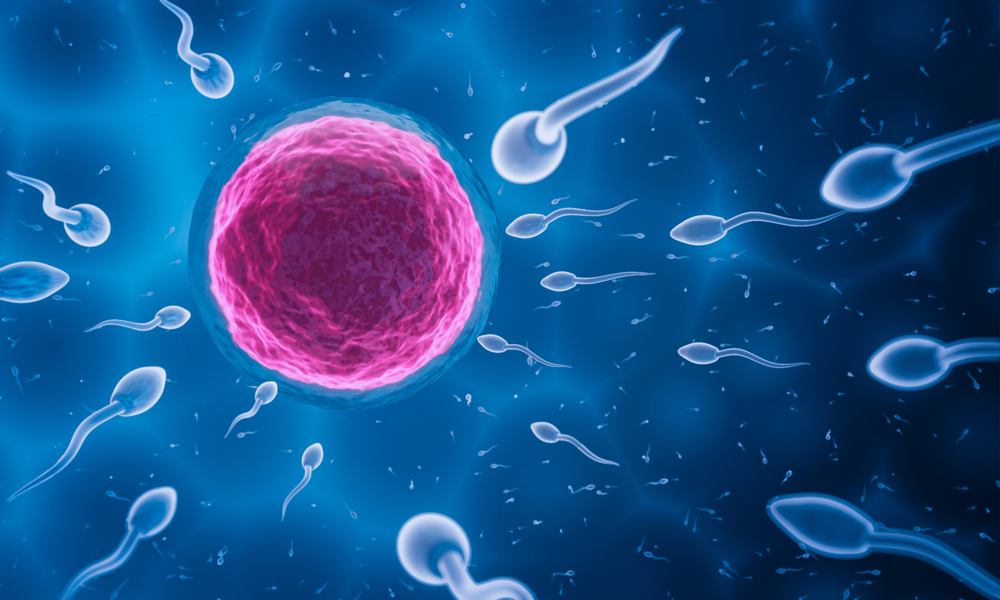
Imagine if humanity’s future were slipping through our fingers—literally. For decades, the world has been fixated on the threats we can see: climate change, pandemics, economic upheaval. Yet, quietly, an invisible crisis has been brewing inside our bodies. Sperm counts in men have plummeted by nearly 50% worldwide in just a few decades. This isn’t science fiction; it’s happening right now.
The implications are staggering. Fertility rates are dropping, and with them, questions about the long-term health of the human race loom larger than ever. Dr. Hagai Levine, a leading researcher on the subject, called it a “canary in a coal mine” moment, warning, “We have a serious problem on our hands that could threaten the survival of humanity.”
But why is this happening? And what can we do about it? To understand the gravity of this issue, we need to look at the numbers, the causes, and most importantly, the solutions. This isn’t just a men’s health crisis—it’s a call for global action.
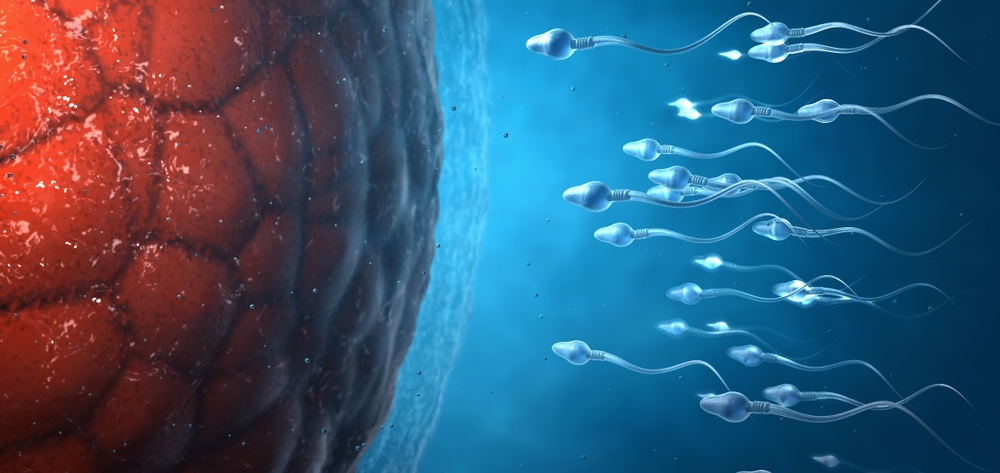
How Big Is the Problem? The Numbers Don’t Lie
The numbers are as stark as they are shocking. According to a comprehensive 2022 meta-analysis led by Dr. Hagai Levine and published in the journal Human Reproduction Update, sperm counts among men worldwide have declined by an alarming 51.6% between 1973 and 2018. This means that within just a few decades, average sperm counts have dropped from 101 million per milliliter to 49 million per milliliter—a figure perilously close to the threshold of infertility.
What’s even more concerning is the pace at which this decline is accelerating. Between 1973 and 2000, sperm counts were dropping by approximately 1.1% per year. However, since 2000, that rate has more than doubled, with an annual decline of 2.6%. As Dr. Levine explains, “This is a major public health crisis that demands urgent global action.”
A Worldwide Phenomenon
What makes this trend particularly alarming is its global scale. Initially, research focused primarily on men from Western countries like the United States and Europe, but recent studies have confirmed that this decline is not confined to one region. Men from South America, Asia, and Africa are also experiencing significant reductions in sperm count.
While the numbers vary slightly between regions, the downward trend remains consistent, signaling a universal issue rather than an isolated anomaly. This global reach underscores the urgency of understanding what is driving the decline and what can be done to address it.
Beyond the Numbers
The implications of this decline extend far beyond fertility concerns. Sperm count has long been considered a biomarker for overall male health. A lower count can often signal underlying health problems, including hormonal imbalances, chronic diseases, and even an increased risk of mortality. In other words, the sperm crisis isn’t just about reproduction—it’s a reflection of men’s declining health worldwide.
But why is this happening? What factors are conspiring to drive this unprecedented drop in sperm counts across the globe? To understand the full scope of this crisis, we need to look deeper into the environmental, lifestyle, and societal factors at play.
Unpacking the Causes: What’s Really Going On?
The dramatic decline in sperm counts isn’t just a biological curiosity—it’s a symptom of deeper systemic issues tied to our environment, lifestyle, and modern habits. While researchers are still piecing together the full puzzle, several key factors have emerged as likely culprits behind this global crisis. One of the most pressing concerns is the increasing presence of endocrine-disrupting chemicals (EDCs) in our everyday lives. Found in plastics, pesticides, and even personal care products, EDCs interfere with the body’s hormonal balance.
Substances like bisphenol A (BPA) and phthalates mimic or block hormones, particularly testosterone, which is critical for sperm production. Dr. Shanna Swan, a prominent epidemiologist, highlights this issue in her work, stating that exposure to these chemicals during fetal development can have lasting effects on male fertility. Lifestyle factors also play a significant role. Rising levels of obesity, poor diets, and sedentary habits have created a perfect storm for declining reproductive health. High-fat, processed foods, coupled with low physical activity, can lead to metabolic issues that negatively impact sperm quality.
Stress and poor sleep habits further exacerbate the problem, contributing to hormonal imbalances that disrupt sperm production. Environmental pollution adds another layer of complexity. Airborne toxins, heavy metals, and microplastics are increasingly linked to reproductive health issues. Studies have shown that men living in heavily polluted areas often have significantly lower sperm counts compared to those in cleaner environments. This suggests that environmental degradation is not only a global problem but also a deeply personal one affecting human health.
While these factors highlight individual vulnerabilities, the broader societal implications cannot be ignored. Modern conveniences and industrial advancements have come at a cost, introducing chemicals and pollutants into every facet of daily life. The result? A steady decline in male reproductive health that mirrors humanity’s larger environmental struggles. The causes may be varied, but they point to one undeniable truth: this crisis is largely man-made. Understanding the underlying factors is the first step toward addressing them—but solutions will require sweeping changes in how we interact with our bodies and our environment.
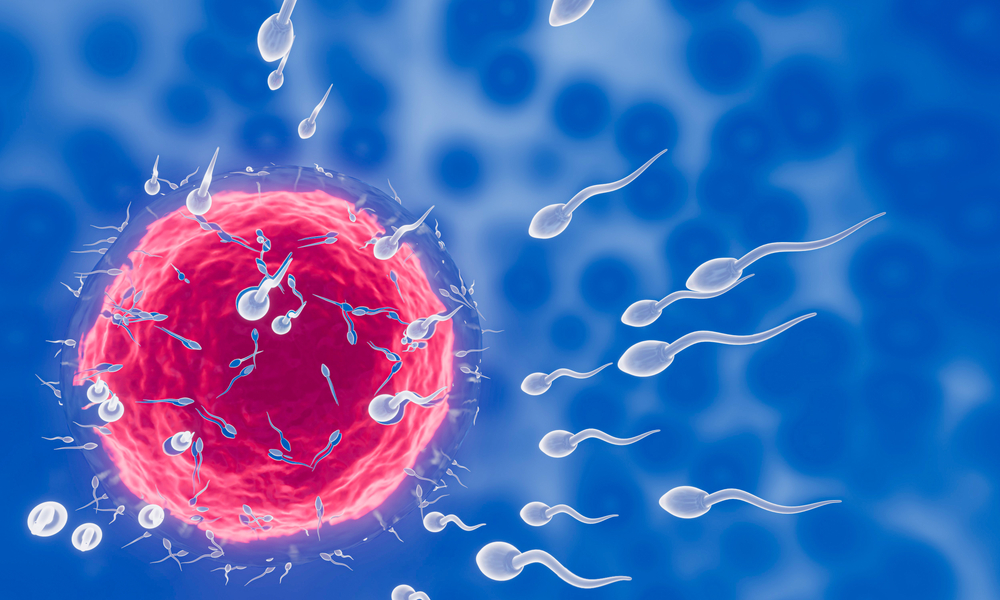
Why Should You Care? The Bigger Picture
The steep decline in sperm count goes far beyond fertility issues—it reflects a deeper crisis in public health and societal stability. Studies have shown that low sperm counts often correlate with other health problems, including reduced testosterone levels, obesity, and an increased risk of chronic conditions like cardiovascular disease and type 2 diabetes. These associations suggest that declining sperm health is not just an isolated problem but part of a broader pattern of declining male health.
On a societal level, the implications are equally concerning. Falling fertility rates are already straining economies in countries like Japan and South Korea, where aging populations outnumber younger generations. If sperm counts continue to decline at their current pace, more nations may face similar demographic challenges, leading to labor shortages, reduced economic growth, and increasing pressure on healthcare systems.
This isn’t just a men’s health crisis—it’s a global health concern that touches everyone. Addressing the root causes is essential, not just for preserving fertility but for safeguarding the health and well-being of future generations. The decline in sperm count is a wake-up call that demands immediate attention, both on an individual and systemic level.
What Can Be Done? Practical Steps and Solutions
The alarming decline in sperm count may seem overwhelming, but there are actionable steps individuals and societies can take to address the issue. While reversing decades of environmental and lifestyle changes will take time, small shifts can make a significant difference.
On a personal level, lifestyle improvements are key. A balanced diet rich in antioxidants, healthy fats, and essential nutrients can promote sperm health. Foods like nuts, seeds, fish, and vegetables have been shown to support reproductive health. Regular exercise, managing stress, and avoiding smoking or excessive alcohol consumption are also critical in maintaining hormonal balance and sperm quality.
Reducing exposure to harmful chemicals is another essential step. Endocrine-disrupting chemicals (EDCs), found in plastics, pesticides, and even cosmetics, are major contributors to declining fertility. Simple changes, such as using glass containers instead of plastic, eating organic produce, and choosing natural personal care products, can help minimize exposure.
At a societal level, stricter regulation of harmful substances is crucial. Governments and industries need to prioritize reducing the use of chemicals like BPA and phthalates, which disrupt hormonal health. Public health campaigns that raise awareness about the impact of pollution and unhealthy lifestyles on fertility are also essential for driving collective action.
Turning Awareness Into Action
The decline in sperm count is a complex and urgent challenge, but it’s also an opportunity to make meaningful changes. This issue is not just about reproductive health; it reflects the broader impact of modern lifestyles and environmental choices on human well-being. By addressing the root causes—chemical exposure, poor lifestyle habits, and environmental degradation—we can pave the way for a healthier future.
Experts like Dr. Shanna Swan and Dr. Hagai Levine emphasize the need for global action, not just on a personal level but through systemic change. Governments must regulate harmful substances more strictly, industries need to adopt safer practices, and individuals can play their part by making healthier lifestyle choices.
The path forward requires awareness, collaboration, and decisive action. The crisis of declining sperm counts is a warning, but it’s also a chance to rewrite our future. Humanity has faced monumental challenges before, and with the right steps, this too can be addressed. The time to act is now—for the health of individuals, families, and the generations to come.
Sources:
- Levine, H., Jørgensen, N., Martino-Andrade, A., Mendiola, J., Weksler-Derri, D., Mindlis, I., Pinotti, R., & Swan, S. H. (2017). Temporal trends in sperm count: a systematic review and meta-regression analysis. Human Reproduction Update, 23(6), 646–659. https://doi.org/10.1093/humupd/dmx022
- Najafi, T. F., Roudsari, R. L., Namvar, F., Ghanbarabadi, V. G., Talasaz, Z. H., & Esmaeli, M. (2015). Air Pollution and Quality of Sperm: A Meta-Analysis. Iranian Red Crescent Medical Journal, 17(4). https://doi.org/10.5812/ircmj.17(4)2015.26930
- Del Giudice, F., Kasman, A. M., Ferro, M., Sciarra, A., De Berardinis, E., Belladelli, F., Salonia, A., & Eisenberg, M. L. (2020). Clinical correlation among male infertility and overall male health: A systematic review of the literature. Investigative and Clinical Urology, 61(4), 355. https://doi.org/10.4111/icu.2020.61.4.355
Animals
The Death Of A Pet Should Be Taken More Seriously By Counselors

Pets hold a special place in our lives, often becoming as cherished as any family member. Yet, when we face the heartbreak of losing these beloved companions, the depth of our grief is frequently underestimated and misunderstood, not only by those around us but also by some professionals who guide us through our darkest times. Why is the death of a pet often not taken as seriously as the loss of a human? This article explores the critical role that counselors can play in recognizing and addressing the profound psychological impact of pet loss, urging a reevaluation of how this grief is handled in therapeutic settings.
The Psychological Impact of Pet Loss
The grief experienced after the loss of a pet is profound and often mirrors the emotional intensity associated with losing a human loved one. This grief is characterized by deep sadness, loneliness, and sometimes even depression. Researchers emphasize the importance of recognizing the strength of the human-animal bond, which can significantly impact an individual’s mental and emotional well-being. The bond with a pet is not merely emotional but also psychologically stabilizing, providing companionship, unconditional love, and a sense of purpose.
When a pet passes away, the owner may experience a range of intense emotions that can affect their psychological health. This type of grief, often referred to as disenfranchised grief, lacks societal recognition and validation, leaving individuals to cope with their loss in isolation. This lack of acknowledgment can complicate the grieving process, making it harder for pet owners to seek and receive support. Studies have shown that pet owners often turn to their pets for emotional support more frequently than to family or friends, highlighting the significant role pets play in their lives.
In therapy, recognizing the validity of grief associated with pet loss is crucial. Counselors and therapists are encouraged to treat pet bereavement with the same seriousness as the loss of a human. This approach not only validates the client’s feelings but also opens pathways for healing and recovery. Therapeutic interventions might include talking through the loss, creating memorials, or expressing feelings through art, which helps in acknowledging and processing the grief.
Moreover, societal attitudes towards pet loss are slowly evolving, with increasing recognition of the deep emotional bonds formed between humans and animals. This shift highlights the need for mental health professionals to develop strategies and interventions specifically tailored to help individuals cope with pet loss effectively.
Role of Counselors in Pet Bereavement

Counselors play a crucial role in supporting individuals through the grieving process of losing a pet, a role that requires sensitivity and recognition of the deep emotional impact involved. The grief experienced from pet loss can be as intense and profound as the loss of a human, which necessitates a specialized approach in counseling practice.
Understanding and Validating Grief
Counselors are tasked with understanding the unique bond between pets and their owners and recognizing that the loss can lead to significant emotional distress. It is essential for mental health professionals to validate these feelings rather than minimize them. Validation helps individuals feel understood and supported, which is a critical component in the healing process.
Therapeutic Interventions
Effective counseling for pet bereavement might include creating a space where individuals can express their grief without judgment. This could involve discussing the pet’s role in their life, memories, and the feelings of emptiness that might follow the pet’s death. Therapists can use various interventions such as grief counseling techniques tailored specifically for pet loss, which may not be covered extensively in traditional grief counseling settings.
Education and Awareness
There is also a need for increased awareness and education among counselors regarding the significance of pet loss. Training programs and continuing education courses should include modules that focus on the psychological effects of losing a pet and strategies for providing effective support.
Supportive Practices
Incorporating the recognition of pet loss into therapeutic practices can significantly aid in normalizing these feelings and fostering a better coping environment. Counselors can guide clients in finding or forming support groups specifically for pet bereavement, which can provide additional communal support and decrease feelings of isolation.
Strategies for Counseling Pet Loss
Effective counseling strategies for pet loss involve recognizing the unique grief that comes with the death of a pet and providing support that acknowledges this significant emotional loss. Here are some tailored approaches that counselors can use to support grieving pet owners:
1. Validation of Grief
Counselors should begin by validating the client’s grief, affirming that their feelings of loss are both real and significant. Acknowledging the depth of the bond between the client and their pet helps to legitimize the grief process and can facilitate healing.
2. Educational Support
Providing educational materials that discuss pet loss and its impact can be incredibly helpful. Counselors can offer resources that explain the stages of grief specific to pet loss, which helps normalize the feelings that pet owners experience.
3. Therapeutic Techniques
Specific therapeutic techniques can be effective, including:
- Memory Boxes: Creating a physical box filled with mementos of the pet, such as collars, toys, and photos, can help clients process their grief by celebrating the life of their pet.
- Writing Letters: Encouraging clients to write letters to their deceased pets can facilitate expressing unresolved feelings and foster a sense of closure.
- Narrative Therapy: This involves helping clients tell their story of the pet’s life and death, which can aid in contextualizing the loss and its impact on their life.
4. Group Therapy
Group therapy sessions with other individuals who have experienced pet loss can provide a support network that helps diminish feelings of isolation. Sharing experiences with others who understand the unique nature of pet loss can be incredibly validating and healing.
5. Incorporate Rituals
Supporting clients in creating rituals to honor their pet’s memory can be therapeutic. Whether it’s a small ceremony, planting a tree, or creating an online memorial, these acts can help in the grieving process.
6. Support for Decision-Making
Counselors can also play a crucial role in helping pet owners make difficult decisions towards the end of a pet’s life, such as euthanasia. Providing a space to discuss these choices and the emotions surrounding them can be crucial.
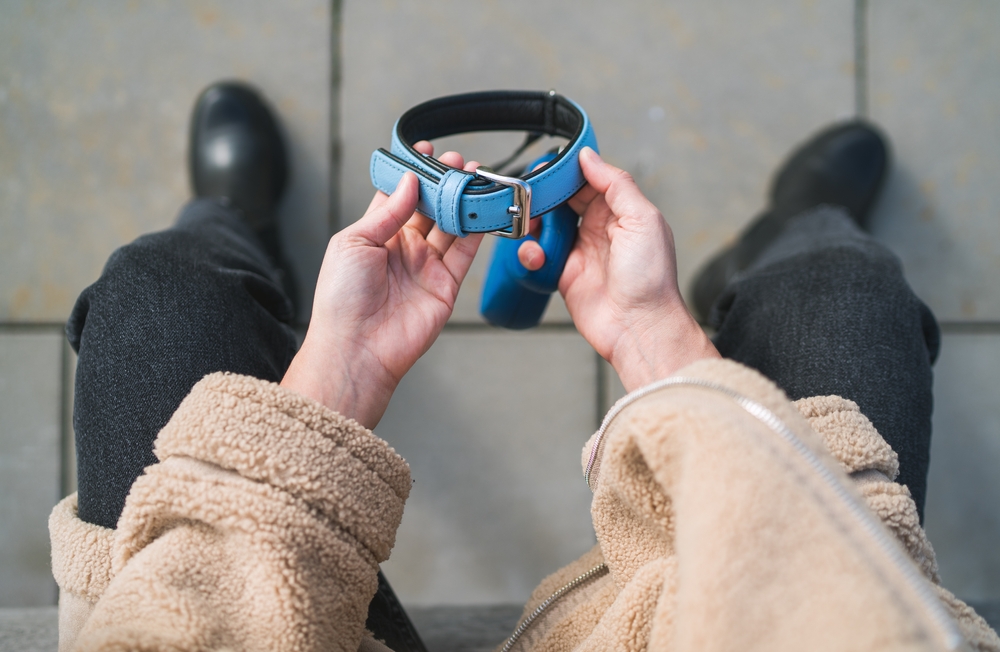
Challenges in the Current Counseling Approach
The current approach to counseling for pet bereavement faces several challenges that can impede effective support for individuals experiencing the loss of a pet.
- Lack of Standardized Training: One significant challenge is the lack of standardized training and resources for counselors on how to handle pet loss effectively. While grief counseling is a well-established field, specific strategies and programs focusing on pet bereavement are not commonly included in standard counseling curricula. This gap can leave counselors unprepared to address the unique aspects of grief associated with pet loss.
- Societal Underrecognition: Another challenge is the societal underrecognition of pet loss as a legitimate form of grief. This societal stance can influence how professionals approach pet bereavement, potentially leading to minimized responses to such losses. When the grief over a pet is not seen as valid by society, it can create a barrier for those seeking help, as they may feel their emotions are not justified or understood.
- Psychological Complexities: The emotional complexities associated with pet loss also pose a challenge for counseling. Unlike human relationships, the bond with a pet is often devoid of the conflicts and complexities that characterize human interactions, which can make the grief feel more profound and unalloyed. Counselors need to navigate these deep emotional territories while acknowledging the purity and intensity of the bond, which might not be addressed in general grief counseling protocols.
- Need for Specialized Approaches: The counseling field needs more specialized approaches that recognize the significant emotional impact of pet loss and the necessity for targeted therapeutic interventions. Effective grief counseling for pet loss should include elements such as validation of the client’s feelings, exploration of the pet’s role in the client’s life, and assistance with developing new coping mechanisms.
A Call to Recognize Pet Loss in Counseling
As we navigate the complexities of human emotions, the loss of a pet presents a significant, yet often overlooked, challenge. Counselors play a crucial role in addressing this unique form of grief, fostering an environment where pet owners feel validated and supported. The death of a pet can trigger profound grief that is every bit as intense as the loss of a human loved one, yet societal recognition remains insufficient. This article underscores the importance of developing specialized training for counselors, enhancing therapeutic approaches, and promoting societal acknowledgment of pet bereavement.
Integrating tailored counseling strategies, such as validation of grief, educational support, and therapeutic techniques, can significantly aid in the healing process. Moreover, the formation of support groups and the encouragement of commemorative rituals can offer additional comfort and community support to those in mourning.
Recognizing pet loss as a serious bereavement issue not only legitimizes the deep emotional bonds formed between humans and their pets but also advances the field of mental health to encompass all forms of familial loss. It is time for counseling practices to evolve and adapt, ensuring that every individual receives the empathetic support they need during times of profound loss.
Awareness
‘Bleeding Eye’ Virus Sparks Travel Warning and Worldwide Concern – What Is the Incurable Disease?

A mysterious and deadly virus is capturing global attention, sparking urgent travel warnings and widespread concern. Known for its unsettling nickname the “Bleeding Eye” virus, this disease has not only shaken the health sector but also left travelers and governments on high alert. Its symptoms are as alarming as its name, and its impact has already been felt in multiple regions.
What is this incurable disease that has the world watching so closely? How did it emerge, and why is it spreading so rapidly?
What Is the Bleeding Eye Virus?
The “bleeding eye” or Marburg virus is a highly virulent pathogen responsible for Marburg virus disease (MVD), a severe hemorrhagic fever in humans. First identified in 1967 during simultaneous outbreaks in Marburg and Frankfurt in Germany and Belgrade in Serbia, the virus was traced back to African green monkeys imported from Uganda for research purposes. This initial outbreak resulted in several fatalities among laboratory workers, marking the virus’s alarming entry into the human population.
Marburg virus is closely related to the Ebola virus, sharing similar structural characteristics and disease manifestations. Both viruses are filamentous and contain single-stranded RNA genomes, leading to severe hemorrhagic fevers with high mortality rates. The natural reservoir for the Marburg virus is the Egyptian fruit bat (Rousettus aegyptiacus), with human infections typically resulting from prolonged exposure to mines or caves inhabited by these bats.
Transmission to humans occurs through direct contact with the blood, secretions, organs, or other bodily fluids of infected individuals or animals. Human-to-human transmission is facilitated by direct contact with broken skin or mucous membranes, as well as contact with surfaces and materials contaminated with these fluids, such as bedding and clothing.
The World Health Organization notes that the average case fatality rate for MVD is around 50%, with rates varying from 24% to 88% in past outbreaks, depending on virus strain and case management. Currently, there are no approved vaccines or antiviral treatments for MVD.
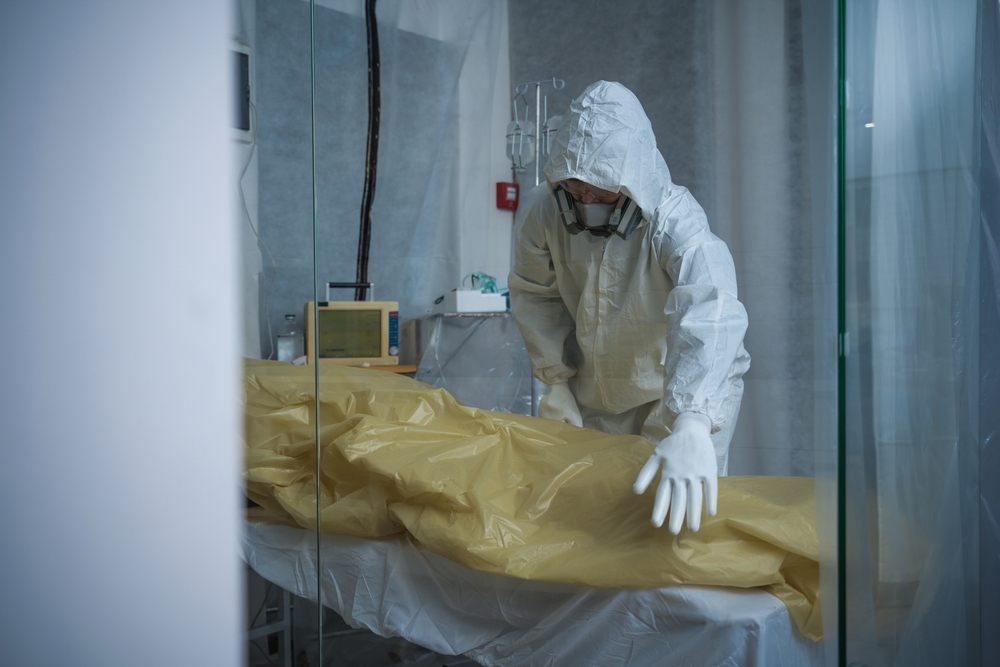
Recent Outbreak and Current Status of Marburg Virus
Since the first recognized outbreak in Marburg, Germany, in 1967, Marburg virus disease (MVD) has primarily surfaced in African nations, with recent outbreaks reported in Ghana (2022), Tanzania (2023), and now Rwanda.
The Rwandan Ministry of Health confirmed its first case of the Marburg virus in September 2024, with the country reporting a total of 66 cases and 15 deaths by November 29, 2024. The outbreak prompted the U.S. State Department to issue a travel advisory on November 22, urging “increased caution” for travelers to Rwanda due to the virus. This advisory highlighted potential additional health screenings for travelers entering and exiting the country.
As of the last update, approximately 75% of reported Marburg patients in Rwanda have recovered, with the last known patient being discharged on November 8, 2024, after testing negative for the virus. Following this, the World Health Organization began a 42-day countdown on November 9, 2024, to potentially declare the end of the outbreak. If no new cases are reported during this period, the outbreak could officially be declared over by December 22, 2024. The Centers for Disease Control and Prevention (CDC) has maintained a Level 2 travel advisory (Practice Enhanced Precautions) for Rwanda and continues to monitor the situation closely in collaboration with international partners.
This recent episode in Rwanda highlights the persistent threat posed by hemorrhagic fevers like Marburg. There is a need for vigilant health surveillance, rapid response capabilities, and international cooperation to manage outbreaks effectively.
How Does the Bleeding Eye Virus Spread?
Marburg virus disease is a severe and often fatal illness characterized by a rapid onset of symptoms that can escalate swiftly. Below is the progression of the symptoms for early detection and improving survival rates.
- Incubation Period: The incubation period for MVD ranges from 2 to 21 days, with symptoms typically appearing abruptly.
- Initial Symptoms: The disease begins suddenly with high fever, severe headache, and malaise. Muscle aches and pains are common.
- Gastrointestinal Phase: By the third day, patients may experience severe watery diarrhea, abdominal pain and cramping, nausea, and vomiting. This phase can last for a week, and patients have been described as having “ghost-like” drawn features, deep-set eyes, expressionless faces, and extreme lethargy.
- Hemorrhagic Manifestations: Between days 5 and 7, hemorrhagic symptoms may develop, including:
- Bleeding from the nose, gums, and injection sites
- Blood in vomit and feces
- Spontaneous bleeding from the eyes, leading to the “bleeding eye” nickname
- Notably, “because it’s hemorrhagic, it ‘damages blood vessels and causes bleeding’ — often from the eyes, nose, mouth, or vagina.”
- Neurological Symptoms:
- In later stages, patients may exhibit neurological symptoms such as confusion, irritability, and aggression.
- Fatal Outcomes:
- In fatal cases, death usually occurs between 8 and 9 days after symptom onset, often preceded by severe blood loss and shock.
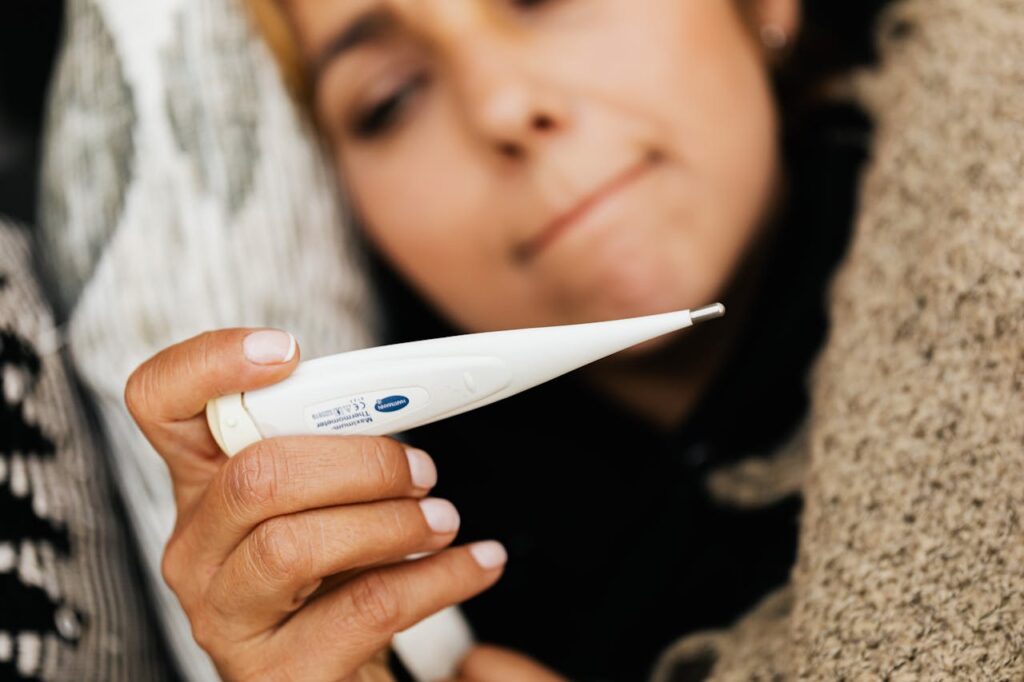
How Can the Spread Be Prevented?
For those in high-risk areas, such as caves or mines where bats are common, wearing protective clothing like gloves and masks is essential to avoid transmission from bats to humans.
During an outbreak, it’s vital to handle food safely by thoroughly cooking all animal products. Human-to-human transmission can be significantly reduced by avoiding direct contact with the bodily fluids of infected individuals. This includes not handling items like bedding and clothing that may have come into contact with the virus.
Isolation of suspected or confirmed cases is crucial, and monitoring anyone who has been exposed to the virus for 21 days can help prevent further spread. Safe burial practices are equally important, as the handling of bodies can lead to transmission.
For personal safety, avoid contact with potential animal carriers of the virus, such as Egyptian rousette bats and non-human primates in affected regions.
Should You Be Worried About Marburg Virus in the US?
As the Marburg virus captures headlines with its outbreak in Rwanda, it’s natural to wonder about the implications closer to home in the U.S. The good news, according to the CDC, is that the risk to the general U.S. population remains “low,” and this assessment is made with “moderate confidence.” So, what does this mean for those in the US?
The outbreak in Rwanda has been largely contained to specific clusters and has not shown signs of wider community spread. Additionally, measures are in place to monitor those who might bring the virus stateside. While the notion of the virus reaching the U.S. might seem concerning, the structure of travel from Rwanda to the U.S.—including the lack of direct flights and relatively few travelers—significantly reduces the likelihood of Marburg making its way here.
Furthermore, should the virus somehow enter the U.S., CDC reassures that the country’s public health system is prepared to handle it. Remember the Ebola outbreak in 2014-2015? It’s a similar scenario: despite the high stakes, only two infections occurred in the U.S., and both were contained without community spread.
For those without travel plans to Rwanda, the situation is more about staying informed than actively worrying. However, if you’ve recently been to Rwanda or know someone who has, it’s wise to be vigilant about health and follow the guidelines set by health authorities. Keeping informed through reliable sources and trusting our health systems are our best moves as we watch how this situation unfolds overseas.
Is There a Cure or Vaccine for Marburg Virus?
Currently, there is no approved cure or vaccine for Marburg virus disease (MVD). The WHO and various health agencies recognize the critical need for effective treatments and have reported that several vaccine and drug therapies are in the development stages. The Sabin Vaccine Institute and the International AIDS Vaccine Initiative (IAVI) are among the organizations actively working on potential vaccines. Additionally, researchers at Oxford University, known for developing the AstraZeneca COVID-19 vaccine, began trials in the UK this summer using similar technology for a Marburg vaccine candidate.
Despite these efforts, healthcare professionals must rely on supportive care measures, such as rehydration and symptom management, which have been shown to improve survival rates.
Diagnosing MVD is also challenging as its symptoms are similar to those of many other infectious diseases, including malaria and other viral hemorrhagic fevers. Confirmation of the Marburg virus infection relies on specialized diagnostic methods such as the antibody-capture enzyme-linked immunosorbent assay (ELISA).
Staying Vigilant Against the Marburg Threat
The Marburg virus, with its devastating impact and high mortality rate, remains a pressing global health concern. From its alarming symptoms to its rapid transmission, understanding this disease is vital for prevention and containment. While recent outbreaks have highlighted the challenges in managing this deadly virus, they have also spurred coordinated international efforts to enhance surveillance, enforce preventive measures, and develop potential treatments.
Staying informed, practicing good hygiene, and adhering to travel advisories are essential for mitigating risks, especially for those in or traveling to affected regions. By prioritizing education and vigilance, we can collectively work toward minimizing the spread of the Marburg virus and safeguarding public health.
Awareness
This Woman Has a Higher IQ Than Einstein, Stephen Hawking, and Elon Musk, but Was Ridiculed for This Reason
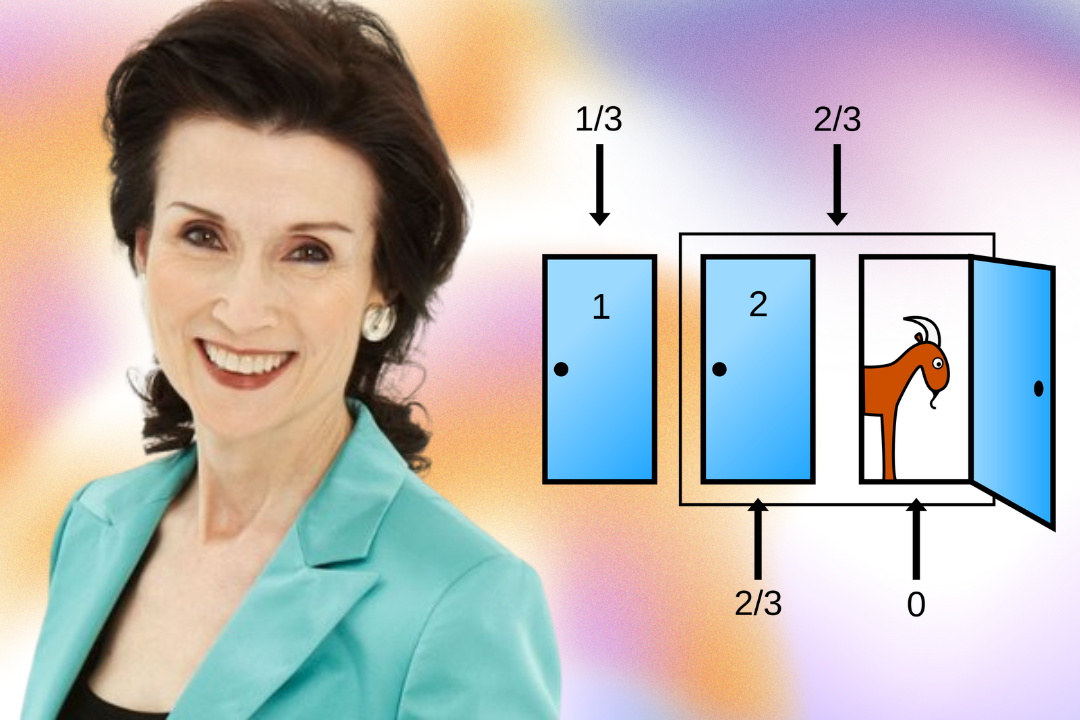
In a world where intelligence often equates to acclaim, one woman’s extraordinary IQ score—higher than those of Einstein, Stephen Hawking, and Elon Musk—should have made her a universal icon. Yet, despite setting a record that still stands unmatched, her correct answer to a seemingly straightforward question sparked an avalanche of ridicule that overshadowed her brilliance. This is the woman with the highest recorded IQ who, in spite of the fact, found herself at the center of a controversy that questioned more than just her intelligence. What was the question, and why did it provoke such outrage?
The Infamous Monty Hall Problem
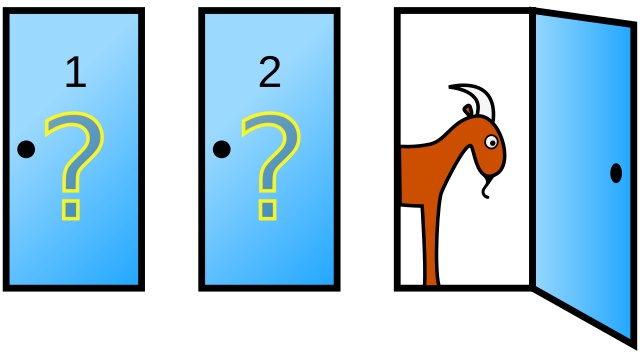
The Monty Hall Problem is one of the most fascinating riddles in the history of brainteasers. This mathematical puzzle, which takes its name from the host of the well-known game show “Let’s Make A Deal,” captures a situation that seems straightforward at first glance but is full of unexpected options.
Here’s the essence of the problem, as sent by a reader to the “Ask Marilyn” column in Parade in 1991:
“Suppose you’re on a game show, and you’re given the choice of three doors: Behind one door is a car; behind the others, goats. You pick a door, say No. 1, and the host, who knows what’s behind the other doors, opens another door, say No. 3, which has a goat. He then asks you, ‘Do you want to switch to door No. 2?’ Is it to your advantage to switch your choice?”
The roots of the problem trace back to its namesake, Monty Hall, and the game show dynamics where contestants faced similar choices, albeit without explicit reference to the underlying probabilities. The puzzle taps into fundamental aspects of probability and human psychology, where the correct choice defies our intuitive expectations.
The puzzle’s ongoing appeal stems from its defiance of common sense; although mathematical analysis shows that switching doors really doubles the likelihood of winning the car, intuition indicates that there is no benefit to doing so. Because of its illogical solution, the Monty Hall Problem is frequently discussed and examined in both scholarly and popular contexts.
A Woman’s Answer That Sparked a Firestorm of Ridicule
Marilyn Vos Savant, the woman behind the popular “Ask Marilyn” column, inadvertently ignited a firestorm with her straightforward response to the Monty Hall problem. When posed with the dilemma of whether to switch doors on a game show, she replied confidently: “Yes, you should switch. The first door has a 1/3 chance of winning the car, but the second has a 2/3 chance of winning the car.” This advice, however, did not sit well with a broad swath of her audience.
The backlash was quick and severe. Vos Savant’s column typically addressed a wide array of questions with crisp, clear logic, but this particular answer drew unprecedented ire. Over 10,000 letters poured in, many from incensed readers who vehemently disagreed with her logic. The criticism ranged from pedantic corrections to outright insults.
One particularly harsh letter stated, “You blew it, and you blew it big! Since you seem to have difficulty grasping the basic principle at work here, I’ll explain.”
Moreover, the controversy wasn’t limited to lay readers. A The New York Times article noted that among the disparaging responses, “close to 1,000 carried signatures with Ph.D.’s, and many were on letterheads of mathematics and science departments.”
“Your logic is in error, and I am sure you will receive many letters on this topic from high school and college students. Perhaps you should keep a few addresses for help with future columns,” read one letter from Georgia State University.
Another letter from Georgetown University said, “If you can admit your error you will have contributed constructively toward the solution of a deplorable situation. How many irate mathematicians are needed to get you to change your mind?”
A PhD doctor from the University of Michigan even invoked the Father of Modern Physics, saying, “Albert Einstein earned a dearer place in the hearts of people after he admitted his errors.”
This academic uproar reflected not just a misunderstanding of the problem’s underlying statistics but also deeper biases.
One letter even suggested a gendered difference in mathematical reasoning: “Maybe women look at math problems differently than men.” Another simply insulted her, proclaiming, “You are the goat!”
She Was Right All Along
The response Marilyn Vos Savant gave to the Monty Hall problem caused an uproar that necessitated not just one, but three follow-up columns to clarify her reasoning.
When initially presented with three doors, the chances of choosing the car were 1 in 3. After the host, who knows what’s behind each door, opens one to reveal a goat, the likelihood doesn’t split evenly between the remaining two doors as intuition might suggest. Instead, Vos Savant explained, “The winning odds of 1/3 on the first choice can’t go up to 1/2 just because the host opens a losing door.” Mapping out various scenarios reveals that switching doors indeed offers a two-thirds (66.6%) chance of winning, while sticking with the original choice gives only a one-third (33.3%) chance.
This counterintuitive outcome is better understood through a more exaggerated illustration. Imagine the game show presented you with 100 doors. You pick door #1, giving you a 1/100 chance of finding the car. The host then opens 98 other doors, all hiding goats, leaving just door #1 and another, say door #100. Although it might seem your odds have improved with fewer doors, the probability that the car is behind door #100 is now 99/100, significantly higher than the slim 1/100 chance that it remains behind your initial pick.
Monty Hall himself commented on the psychological aspects of the game, which further complicate player decisions. He noted that the more he offered contestants cash not to switch, the more convinced they became that their initial choice was correct—a psychological anchoring effect that clouded their judgment.
This cognitive dissonance—where new information (like the improved odds of switching doors) conflicts with existing beliefs (that each remaining door has equal probability)—explains much of the resistance to Vos Savant’s correct explanation. People tend to cling to their initial beliefs, even in the face of contradictory evidence, leading to widespread public and academic error.
Ultimately, computer simulations and classroom demonstrations across the country validated Vos Savant’s logic. Over time, the tide of opinion shifted dramatically: by the end of 1992, support among readers rose from 8% to 56%, and among academics from 35% to 71%.
Robert Sachs, a math professor who initially criticized Vos Savant, epitomized the changing attitudes when he later wrote to her, acknowledging his mistake: “After removing my foot from my mouth I’m now eating humble pie,” he admitted, vowing to personally respond to those he had led astray. “I vowed as penance to answer all the people who wrote to castigate me. It’s been an intense professional embarrassment.”
Getting to Know Marilyn Vos Savant

Marilyn Vos Savant, who gained widespread recognition not only for her prolific “Ask Marilyn” column but also for recording the highest IQ according to the Guinness Book of World Records, has been a subject of fascination and respect. Her IQ, reportedly higher than historical geniuses like Albert Einstein, Stephen Hawking, and contemporaries such as Elon Musk, places her in a unique position within the public and academic spheres.
Born in 1946 in St. Louis, Missouri, Vos Savant made headlines in the mid-1980s when her intellectual achievements were first publicized. Her exceptional cognitive abilities became the cornerstone for her weekly column in Parade magazine, where she solved complex mathematical problems and answered queries from readers about various subjects, demonstrating her broad range of knowledge and analytical prowess.
The Monty Hall problem brought her an unusual kind of celebrity, primarily due to the overwhelming flood of criticism following her counterintuitive but correct solution. Despite being correct, her response drew sharp rebukes from both the public and professionals in the fields of mathematics and science. The criticism was often harsh and personal, challenging her intellectual capacity and integrity. Yet, Vos Savant handled the situation with remarkable grace and patience.
In addressing the criticism, Vos Savant maintained a composed and educative tone, using the opportunity to further elucidate her reasoning in subsequent columns. Her responses were clear, methodical, and maintained a focus on educating her detractors, rather than defending her ego. She illustrated the principles of probability with simple, understandable examples, and invited readers to test the scenario themselves, promoting a deeper understanding of the problem.
Vos Savant’s demeanor during this period exemplified her grace in rational discourse and education. Rather than retreating or responding in kind to often vitriolic attacks, she continued to engage with her audience, patiently explaining and expanding on her reasoning and standing firm on her analysis. Her approach not only underscored her intellectual integrity but also highlighted her role as a public educator.
Beyond the Monty Hall controversy, Marilyn vos Savant has authored several books, imparting her wisdom on topics ranging from general intelligence to personal philosophy. Her work continues to inspire those who value intellect and reason, and her life remains a testament to the virtues of intelligence, patience, and resilience in the face of public scrutiny.
Inspiration From a Woman’s Triumph
Marilyn vos Savant’s encounter with the Monty Hall problem not only showed a fascinating statistical puzzle but also spotlighted deeper societal issues, such as the persistence of sexism and misogyny, even within educated and intellectual communities. The backlash she faced, steeped in gender bias, as evident from dismissive comments about “female logic” and overly personal critiques, underscored a troubling reality: intellectual arenas are not immune to the biases that pervade society at large.
Despite the storm of criticism, vos Savant navigated the controversy with remarkable grace and steadfastness, focusing on educating rather than retaliating. Her method of dealing with criticism—utilizing clarity to explain her reasoning and encouraging skeptics to test the problem themselves—transformed a contentious debate into a valuable teachable moment. This approach not only demonstrated the power of education in overcoming misinformation but also reinforced the importance of standing by one’s understanding and knowledge, even when faced with overwhelming opposition.
This goes to show that her story is a compelling chapter in the broader narrative of women in science and academia, offering inspiration and important lessons on resilience, clarity, and integrity in the pursuit of truth.
Featured image via @VirtualMvS on X
Awareness
If Facebook Isn’t Spying on Me, Why Did I Get Ads for What I Just Spoke About?

Imagine sitting with friends, chatting about your dream vacation to Bali. A few hours later, you scroll through Facebook and—bam!—ads for tropical resorts and yoga retreats flood your feed. Coincidence? Maybe. But it’s hard to shake the feeling that someone—or something—is listening.
This unsettling experience is so common it’s almost a digital urban legend: Facebook spying on your conversations through your phone’s microphone. Denials from tech giants haven’t silenced the whispers of suspicion, nor have they stopped the steady stream of eerily accurate ads. Is it possible that algorithms have grown so sophisticated they can predict our desires before we’ve even typed them out? Or is there something more invasive at play?
In an age where every click, swipe, and search is tracked, the line between coincidence and surveillance feels increasingly blurred. Are we paranoid—or justified in our concerns?
The Ubiquity of Creepy Ads

We’ve all experienced that eerie moment: you mention something in passing—a new gadget, a dream destination, or even a quirky hobby—and within hours, your social media feed is flooded with ads tailored to that exact topic. It feels as if someone is eavesdropping on your every word. Stories of these hyper-specific ad appearances have spread like wildfire, with countless anecdotes fueling suspicions that platforms like Facebook are secretly listening through our devices. While some dismiss these occurrences as mere coincidences, the uncanny accuracy of these ads makes the theory hard to ignore.
What’s particularly unsettling is the personal nature of these advertisements. They don’t feel like random suggestions but rather intimate recommendations perfectly aligned with your recent conversations. It’s one thing to receive ads based on your browsing history or recent online purchases, but when it seems tied to words spoken aloud, it touches a nerve. It’s an experience that feels invasive, raising unsettling questions about how much of our private lives is truly private. Are these moments proof of advanced technological surveillance, or is there a less sinister explanation?
Facebook’s Official Stance
Despite the widespread belief that Facebook is secretly eavesdropping on users, the company has consistently denied these allegations. Facebook executives have publicly stated that the platform does not use microphones to listen to conversations for advertising purposes. In fact, the company has repeatedly emphasized that such practices would not only violate its own policies but also be impractical given the vast scale of its operations. According to Facebook, the notion of live audio surveillance for ad targeting is not only unnecessary but also inefficient compared to their existing data-driven methods.
Rob Goldman, Facebook’s VP of Ads, has categorically stated, “We don’t use your microphone for ads. Just not true.” Furthermore, Facebook’s privacy policy outlines stringent controls over user permissions, giving users the power to manage which apps have access to their microphones and other data. However, these reassurances have done little to quiet the public’s skepticism. For many, the coincidence of seeing ads that perfectly match their spoken words feels too specific to be explained away, making it harder to accept the official narrative without question.
The Role of Data Tracking in Advertising
The unsettling truth about targeted ads lies not in microphones, but in the immense power of data tracking and predictive algorithms. Every action users take online—whether it’s a Google search, a website visit, or a social media like—feeds into a vast network of data collection. This information is meticulously analyzed by algorithms designed to predict your preferences and behaviors with uncanny accuracy.
Platforms like Facebook don’t need to listen to your conversations; they already know more about you than you might realize. Advanced algorithms work behind the scenes to connect the dots, using everything from your browsing history to your social media interactions to predict your interests. For instance, if you recently followed a travel page, Googled flights, or liked a friend’s vacation photo, the system might deduce that you’re planning a trip and start serving ads accordingly.
Moreover, companies rely on external data sources, such as third-party brokers, to create even more detailed profiles of their users. These data-sharing practices allow advertisers to target users with astonishing precision, crafting ads that feel personal and timely. What might seem like an invasion of privacy is often just the result of incredibly sophisticated data analytics working exactly as intended.
Psychological Bias and Perception
Even when ads feel like they’re listening, the real explanation might lie in the quirks of human psychology. People are naturally inclined to notice patterns, especially when something unexpected or unusual occurs. This tendency, known as confirmation bias, leads us to focus on instances where ads align with our conversations while overlooking all the unrelated ads we see daily. Over time, this selective attention creates the illusion that platforms are constantly spying on us.
Another factor at play is memory distortion. The human brain is notoriously unreliable when it comes to sequencing events. You might recall discussing a product before seeing an ad, but in reality, the ad may have appeared first, subtly influencing your conversation. Combined with algorithms that deliver eerily accurate predictions, these psychological effects can make it feel like social media platforms are reading your mind—or worse, listening to your private discussions.
It’s also worth noting that advertising systems are designed to anticipate your needs before you’re even aware of them. This predictive capability, while impressive, can come across as invasive. To the average user, the timing of these ads feels too perfect to be coincidental, adding fuel to the fire of surveillance fears.
Third-Party Apps and Data Sharing
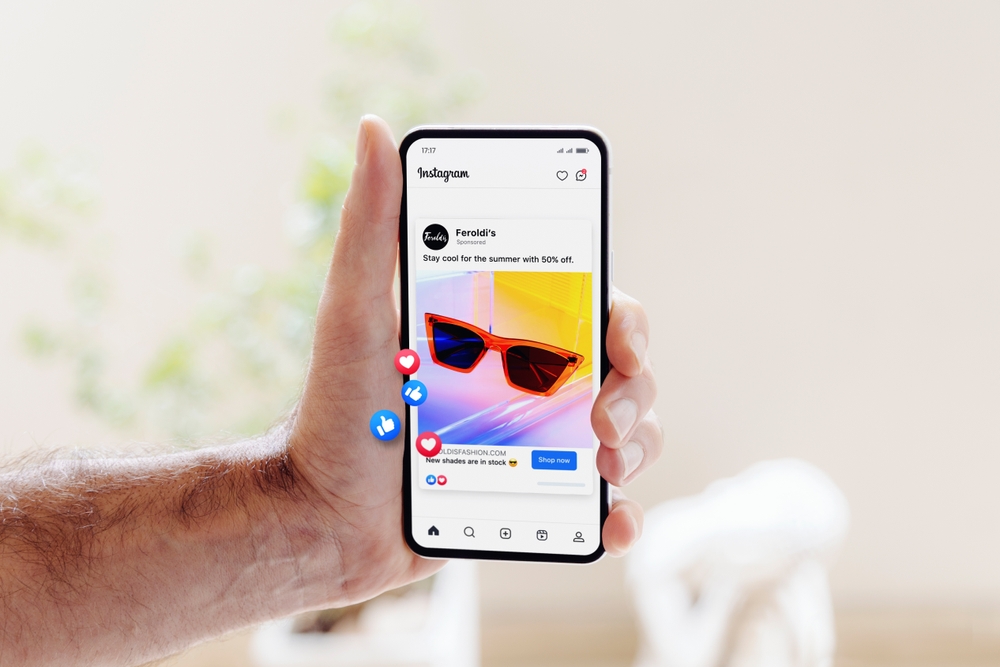
While Facebook itself may not be listening, third-party apps and their data-sharing practices introduce another layer of complexity. Many apps collect vast amounts of user data, often through permissions that users agree to without a second thought. These permissions can include access to your location, browsing activity, and, in some cases, even your microphone. Once collected, this data doesn’t stay within the app—it’s often shared with advertisers or sold to third-party brokers.
The interconnected nature of digital ecosystems means that data collected by one app can be used to influence ad targeting on another platform. For example, if an app with microphone access detects specific keywords, that data could theoretically be passed on to advertising networks. While there’s little concrete evidence to prove this practice on a widespread scale, it highlights the murkiness of digital privacy and the potential risks of granting broad permissions to apps.
These practices reveal just how deeply intertwined our digital lives have become. Even if Facebook isn’t directly eavesdropping, the vast web of third-party data collection can create the illusion that it is, blurring the lines between reality and perception in the realm of targeted advertising.
The Ethical and Privacy Concerns
The debate over whether Facebook is spying underscores a much larger issue: the erosion of privacy in the digital age. Even if platforms aren’t actively listening, the sheer volume of personal data they collect and use for targeted advertising raises significant ethical questions. For many users, the realization that their online behavior is constantly monitored and monetized feels deeply invasive, even if it’s framed as a trade-off for free services.
This discomfort is compounded by the lack of transparency around how data is collected, shared, and used. While privacy policies outline these practices, the language is often so complex that most users don’t fully understand what they’re agreeing to. This dynamic creates an imbalance of power, where corporations wield enormous influence over personal information with minimal accountability.
Governments and advocacy groups are increasingly calling for stricter regulations on data collection and greater transparency from tech companies. However, progress has been slow, leaving users to grapple with the ethical implications of living in a data-driven world. The real question isn’t just whether platforms are spying—it’s how much control we have over our own digital identities and how far companies should be allowed to go in the pursuit of profit.
Are We Truly Being Spied On?
The uncanny precision of targeted ads often feels like undeniable proof that platforms like Facebook are listening to our conversations. However, the reality is less cloak-and-dagger and more algorithmic wizardry. These platforms don’t need to spy; they rely on the data we freely or unknowingly provide. Every click, search, and app interaction feeds sophisticated algorithms that predict our desires with astonishing accuracy.
What’s truly unsettling isn’t the possibility of microphones picking up our voices but the vast scale of data collection happening behind the scenes. From location pings to browsing habits, a sprawling network of apps, data brokers, and advertising systems harvests and monetizes our digital lives—often without our explicit consent. This system, though driven by impersonal algorithms, feels deeply personal and invasive.
The real issue isn’t whether Facebook is directly spying on us but how much control we’ve ceded in exchange for convenience. The targeted ads we see are a stark reminder of the trade-offs we’ve made in a world increasingly shaped by data capitalism.
Awareness
7-year-old girl dies after being buried alive in a sand hole she was digging at the beach
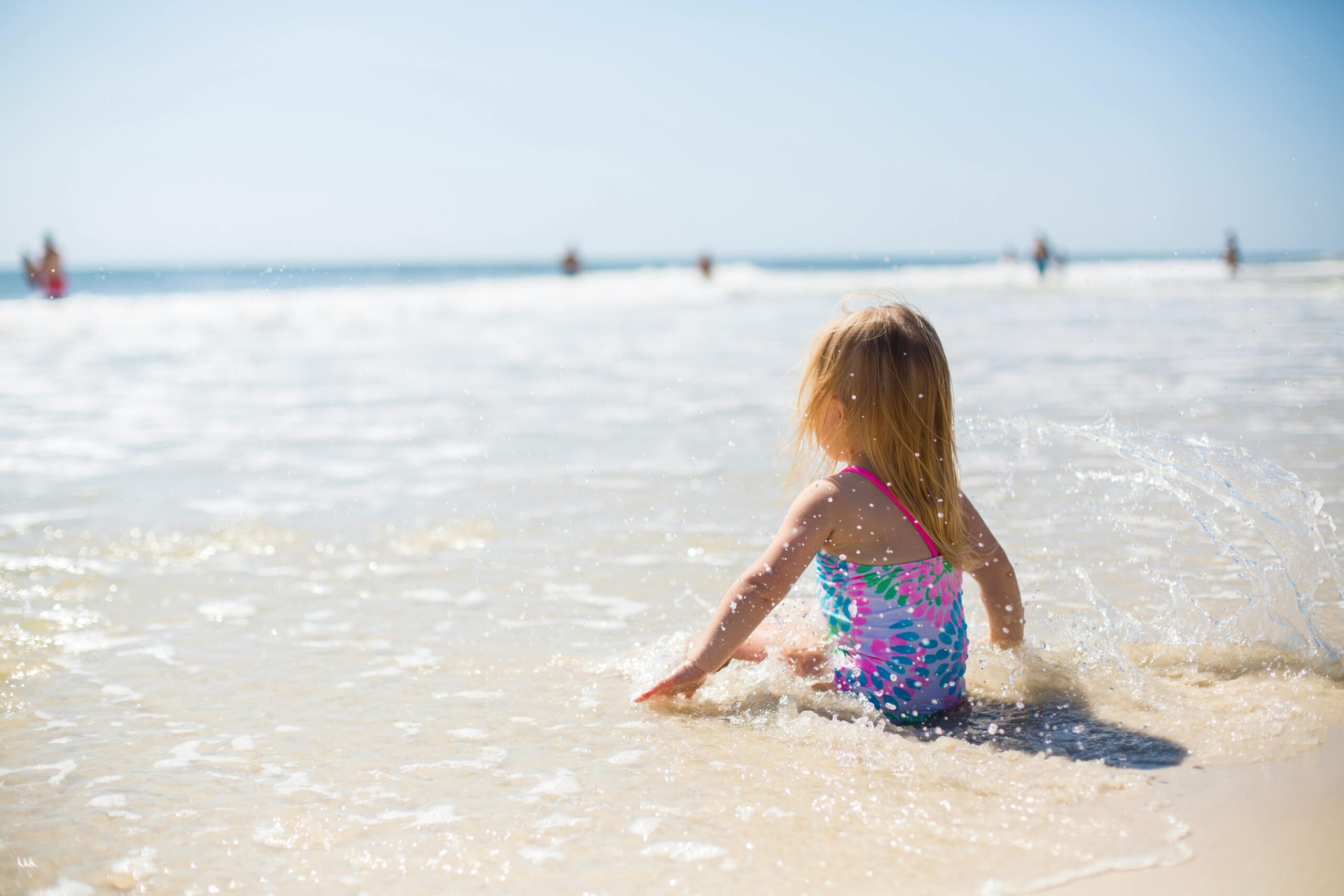
Beaches are a beloved destination for families seeking relaxation and fun, but beneath the sun-soaked sands can lurk unexpected dangers. For the Mattingly family, a rare vacation to Florida turned into an unimaginable tragedy when a seemingly innocent activity ended in heartbreak. The story of 7-year-old Sloan Mattingly has since captured the nation’s attention, shedding light on a hazard many don’t realize exists.
As we explore what happened that fateful day, this narrative uncovers not just the events, but also the profound impact it has had on Sloan’s family—and the important lessons it holds for anyone planning a trip to the beach.
A Family Vacation Turns Tragic
In February 2024, the Mattingly family from Indiana embarked on a rare vacation to Lauderdale-by-the-Sea, Florida—a much-anticipated break from their routine. Seven-year-old Sloan and her nine-year-old brother, Maddox, were brimming with excitement as they explored the sandy shores. Their parents, Jason and Therese, looked on, cherishing these precious family moments.
On February 20, the children engaged in a classic beach pastime: digging a hole in the sand. Unbeknownst to them, this innocent activity harbored hidden dangers. As they dug deeper, the walls of the hole became unstable. Without warning, the sand collapsed, trapping both children beneath its weight. Maddox was buried up to his chest, while Sloan was completely submerged.
Their parents sprang into action, desperately trying to rescue their children. Jason recounted the frantic moments: “It was kind of a blur… it just happened so fast. In my mind I had her in my hands, but the weight of the sand was too much.”
Beachgoers rushed to assist, and emergency services were called. Maddox was freed first, but Sloan remained trapped for over 15 minutes. Despite the valiant efforts of rescuers, she was unresponsive when finally extricated and was later pronounced dead at Broward Health Medical Center.
This heartbreaking incident underscores a peril that many beach visitors overlook: the potential for sand holes to collapse, leading to suffocation. Studies have shown that such accidents, though rare, can be fatal. A 2007 study published in the New England Journal of Medicine documented 52 cases of sand hole collapses over a 10-year period in the U.S., resulting in 31 deaths.
The tragedy of Sloan Mattingly serves as a poignant reminder of the unforeseen dangers that can arise during seemingly harmless beach activities. It calls for increased awareness and caution to prevent such devastating accidents in the future.
Frantic 911 Calls
As the sand collapsed around Sloan and Maddox, panic ensued on the beach. Bystanders and the children’s parents urgently dialed 911, their voices filled with desperation. In the released emergency call recordings, one caller can be heard saying, “The father started yelling for help. He said his child is caught in a hole in the sand they were digging. The mom is yelling the daughter is in there.”
Background screams and cries underscored the chaos, with another caller describing, “There is a little girl buried under the sand and we cannot see her.”
These harrowing calls paint a vivid picture of the frantic efforts to save the children, capturing the urgency and fear that gripped everyone present.
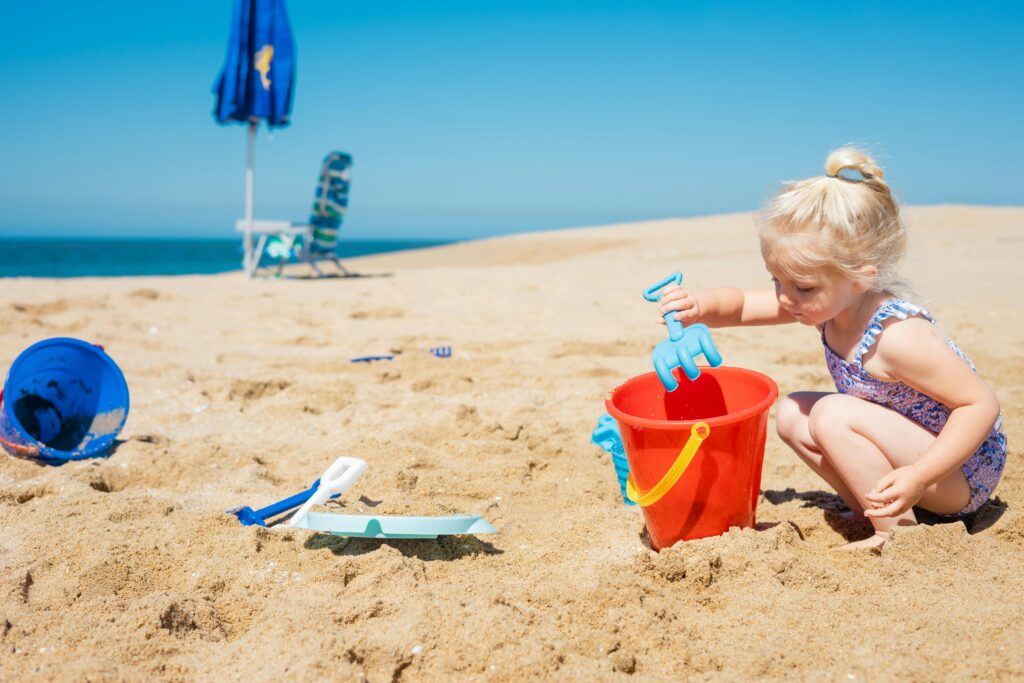
Rescue Efforts
As the sand engulfed Sloan and Maddox, immediate action was crucial. Beachgoers and the children’s father, Jason Mattingly, sprang into action, desperately digging to free the trapped siblings. Witness Harry Defina recounted the scene: “I could see the boy a little bit, but all I can see… was the top of the girl’s head. I saw the father was just beside himself.”
Emergency responders arrived swiftly. Pompano Beach Fire-Rescue crews utilized shovels and support boards to stabilize the collapsing sand as they worked to extricate the children. Despite their rapid response, Sloan remained buried for approximately 20 minutes before being freed. She was unresponsive upon extraction and was immediately transported to Broward Health Medical Center. Tragically, she was pronounced dead at the hospital.
Maddox, who was buried up to his chest, was rescued and hospitalized in stable condition. The swift actions of bystanders and rescue teams were commendable, but the unpredictable nature of sand collapses posed significant challenges, underscoring the inherent dangers of such incidents.
Outcome of the Rescue
Despite the valiant efforts of rescuers and bystanders, the outcome was devastating. Maddox, who had been buried up to his chest, was successfully freed and transported to a local hospital in stable condition. Tragically, Sloan, who had been completely submerged under the sand, was unresponsive upon rescue. She was rushed to Broward Health Medical Center, where, despite exhaustive medical efforts, she was pronounced dead.
The sudden loss of Sloan left her family and the community in profound grief. Her mother, Therese, poignantly expressed, “A freak accident happened yesterday while we are here on vacation and it took away our greatest 7.5 years.”
This heartbreaking incident underscores the unpredictable dangers that can arise from seemingly innocent activities, casting a somber shadow over what was intended to be a joyful family vacation.
Investigation Underway
Following the tragic incident, authorities initiated a comprehensive investigation to understand the circumstances leading to Sloan Mattingly’s death. The Broward County Sheriff’s Office (BSO) confirmed that the children were digging a hole in the sand when it collapsed, trapping them. Detectives noted that the family was on vacation from Indiana at the time.
Initial reports suggested that the hole was approximately five to six feet deep. However, a BSO deputy later clarified that the hole was only about three feet deep. Additionally, rumors circulated that another individual had dug the hole prior to the children’s involvement. BSO addressed these claims, stating, “At this time, they have no evidence that suggests a man dug the sand hole where the children were trapped prior to the incident.”
The investigation remains active, with authorities reviewing all available evidence, including video footage of the incident. BSO emphasized that the circumstances surrounding the case are still under scrutiny, aiming to provide a clear understanding of the events that led to this heartbreaking accident.
Risks of Sand Collapses
While building sandcastles and digging holes are cherished beach activities, they can pose significant, often underestimated, dangers. The tragic incident involving Sloan Mattingly underscores the potential hazards associated with sand collapses.
Understanding Sand Instability
Sand may appear stable, but its structural integrity is deceptive. Dry sand can only maintain a slope of approximately 33 degrees; when this angle is exceeded, or when additional weight is applied near the edge, the sand becomes prone to sudden collapse. Stephen Leatherman, a professor at Florida International University, explains, “Dry sand can only hold a 33-degree angle, and people dig these holes almost vertically.”
Statistics Highlighting the Danger
Between 1997 and 2007, the United States recorded 52 incidents of individuals being submerged due to collapsing sand holes, resulting in 31 fatalities. The victims ranged from 3 to 21 years old, with holes typically measuring between 2 to 15 feet in diameter and 2 to 12 feet in depth.
Challenges in Rescue Operations
Rescuing individuals trapped in collapsed sand holes is fraught with difficulties. The unstable nature of sand means that attempts to dig out victims can lead to further collapses, complicating rescue efforts. Moreover, the weight of the sand can cause suffocation within minutes, leaving a very narrow window for successful rescue.
Staying Safe at the Beach: Essential Tips
Enjoying a day at the beach is a cherished pastime, but it’s crucial to be aware of potential hazards to ensure a safe experience. The tragic incident involving Sloan Mattingly underscores the importance of understanding and mitigating risks associated with common beach activities.
1. Limit the Depth of Sand Holes
- Keep Holes Shallow: Avoid digging holes deeper than the knees of the shortest person in your group. Deeper holes are more prone to sudden collapses, posing significant risks. Experts recommend not exceeding a depth of two feet.
2. Supervise Children Closely
- Active Monitoring: Always keep a watchful eye on children as they play, especially when they’re digging or tunneling in the sand. Immediate adult supervision can prevent accidents before they occur.
3. Fill Holes Before Leaving
- Restore the Beach Surface: Before departing, ensure all holes are completely filled in. Unfilled holes can be hazardous to other beachgoers and can destabilize surrounding sand.
4. Recognize Unstable Sand Conditions
- Assess the Environment: Be cautious of areas with dry, loose sand or spots recently disturbed by tides or construction. These conditions can lead to unexpected collapses.
5. Educate Your Group
- Spread Awareness: Discuss the dangers of deep sand holes with family and friends. Awareness is a critical step in preventing accidents.
6. Be Prepared to Act
- Emergency Response: If someone becomes trapped, call emergency services immediately. Attempt to remove sand from around the victim’s head and chest to facilitate breathing, but avoid causing further collapses.
Lifeguard Presence and Family Response
The Role of Lifeguards in Preventing Tragedies
The absence of lifeguards on Lauderdale-by-the-Sea beach during the incident involving Sloan and Maddox Mattingly has raised significant concerns. Experts assert that trained lifeguards could have identified and mitigated the dangers associated with digging deep sand holes. Tom Gill, a spokesperson for the U.S. Life Saving Association, emphasized, “Every USLA lifeguard…is going to know about the dangers of sand collapse and they are going to warn people immediately upon seeing that.”
Lauderdale-by-the-Sea does not employ lifeguards on its beaches, a decision now under scrutiny. In response to the tragedy, town commissioners convened to discuss the potential implementation of lifeguard services and the establishment of safety ordinances. Commissioner Theo Poulopoulos expressed his concern, stating, “I feel a tremendous amount of guilt over this little girl’s death…I’m sitting here saying let’s do it.”
Family’s Heartfelt Response
The Mattingly family has been profoundly affected by the loss of Sloan. Her mother, Therese, described the incident as a “freak accident” and reflected on Sloan’s impact, saying, “We experienced the purest human being and we are forever changed by her.”
Sloan’s father, Jason, shared his grief on social media, writing, “Our baby is in heaven, love you too much Sloan.”
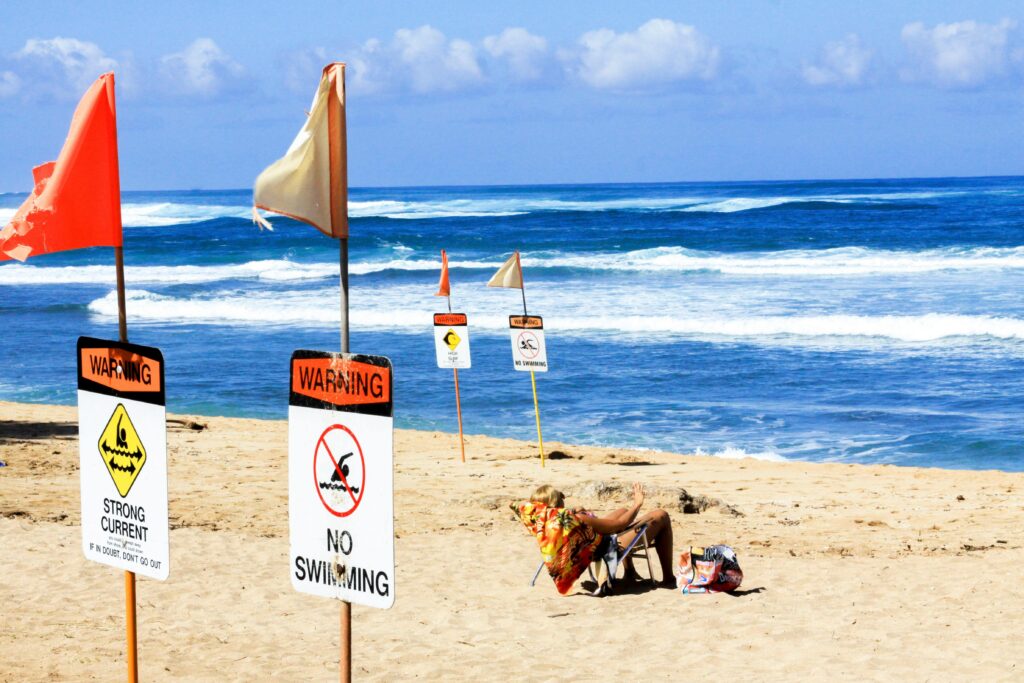
Sloan’s Story as a Lifesaving Lesson
The heartbreaking loss of 7-year-old Sloan Mattingly serves as a poignant reminder of the unforeseen dangers that can lurk beneath the surface of seemingly innocent beach activities. As her family grapples with the profound void left by her absence, they channel their grief into advocacy, striving to ensure that no other family endures a similar tragedy.
Their mission underscores a critical message: while beaches offer joy and relaxation, they also demand our respect and vigilance. By adhering to safety guidelines, educating ourselves and others, and fostering a community of awareness, we can transform our shores into safer havens for all.
As we honor Sloan’s memory, let her story inspire a collective commitment to beach safety, ensuring that future generations can enjoy the sun and sand without peril.
Awareness
He’s Been in Foster Care for Most of His Life. At 13, All Tim Wants Is a Chance to Be Someone’s Son.
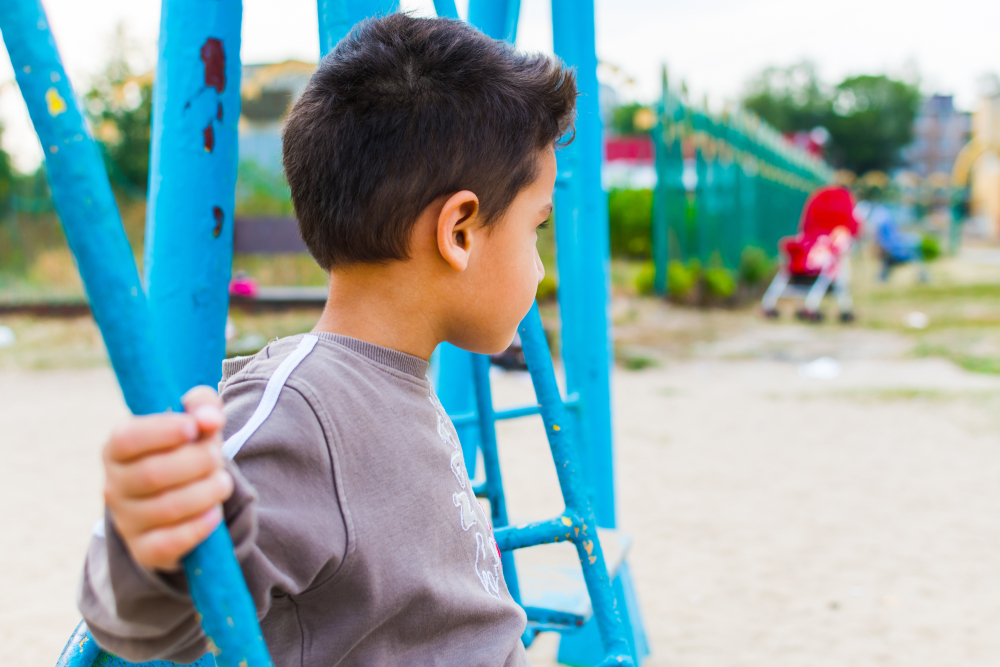
For most of us, the idea of family is a given—something we don’t often question or even think twice about. But for Tim, a 13-year-old boy who has spent nearly his entire life in foster care, family is a dream he has been chasing for a decade. His story isn’t just about longing; it’s about survival in a system that has yet to offer him the stability and love he craves.
Tim’s heartfelt plea is both simple and profound: he wants a chance to be someone’s son. Featured on Wednesday’s Child, a program highlighting children in need of adoption, Tim’s words carried the weight of years spent navigating uncertainty. His message was clear—a loving home isn’t just something he desires; it’s the freedom he’s never known.
Lost in the System: A Decade Without Roots
Tim entered foster care at just three years old, and in the decade since, he’s experienced an endless cycle of temporary placements. Now 13, he lives in a residential treatment center, a space that offers structure but little of the love and connection he craves. Each move feels like starting over, leaving Tim without a sense of stability or belonging.
To Tim, foster care feels like “a prison without walls,” a poignant metaphor that captures his reality. He explains how running away is futile when there’s nowhere to go, no family to run toward. This endless uncertainty has taken a toll, robbing him of restful nights and dimming the bright blue eyes that once shone with childhood innocence. Every placement reminds him of what’s missing—a home where he feels safe, wanted, and loved.
Despite everything, Tim hasn’t lost hope. He longs for adoption not just as an escape from the system, but as a chance to find something he’s never had: a family who will love him unconditionally. For Tim, being someone’s son isn’t just a dream—it’s the key to a life where he can finally put down roots and simply be a kid.
A Public Plea for Belonging
Tim’s story caught the attention of Wednesday’s Child, a program dedicated to helping foster children find permanent homes. In an extraordinary effort, his caseworker arranged for him to travel across the state to appear on the Dallas-based show. It was a rare opportunity for Tim to share his story with the hope that someone, somewhere, might see the boy behind the headlines and offer him the family he dreams of.
During his segment, Tim spoke with striking honesty about his longing for a home. “At home, I am an angel. Perfect,” he said, his voice carrying a mix of hope and exhaustion. He’s tired of the instability and the constant feeling of being unwanted. His caseworker shared a photo of him at seven years old, a time when his big blue eyes radiated curiosity and optimism. Now, years later, those same eyes reflect the toll of waiting too long for something as simple—and as profound—as love.
His plea was clear and heartbreakingly simple: Tim wants to be someone’s son. A family to him isn’t just about a roof over his head; it’s about trust, consistency, and the freedom to grow without fear of abandonment. With each word, Tim’s vulnerability shone through, leaving little doubt about the life-changing power of a loving home.
What Family Means to Tim

For Tim, family isn’t just a comforting idea—it’s the missing piece of his life. He dreams of a mother who cares deeply, someone who worries about him and always checks in. “Someone that cares, who’s always worried. I may seem embarrassed sometimes (by her worrying) but she’ll still be wondering if I’m OK. She’ll ask how my day is every time I walk through the door,” Tim said, describing the kind of connection he yearns for.
In a father, Tim imagines a hero, someone who can guide him and provide a sense of normalcy. “If I go outside, he’ll go outside with me. He’ll give me some normalcy,” he said, his voice revealing both hope and determination. Tim longs for a father figure who will not only teach him about life but also show him what it means to feel safe and supported.
Tim also dreams of having siblings—brothers or sisters to laugh with, learn from, and share his life. “Kind of gets boring playing by yourself,” he admitted with a small smile. To him, siblings would mean connection and companionship, a chance to be part of something larger than himself. For Tim, family isn’t just about people; it’s about trust, stability, and the freedom to finally belong.
The True Freedom of Being Someone’s Son

For Tim, adoption isn’t just about finding a home—it’s about reclaiming a sense of freedom he’s never truly known. “Freedom. Freedom to go out the door when I want and them not worrying about me coming back or not, because they know they can trust me,” he said, describing what having a family would mean to him. For a boy who has spent most of his life in the structured confines of foster care, freedom isn’t just physical—it’s emotional.
Currently, Tim’s life is shaped by rules and routines, often dictated by his placements in foster care. He explains that this rigid environment leaves little room for trust, both given and received. Adoption, to him, symbolizes the chance to escape that cycle. It’s not just about being free to explore the world, but also about being free to grow into himself without fear of rejection or uncertainty.
With a family, Tim imagines a life where trust is mutual and unconditional. It’s about knowing that his worth isn’t tied to how long he stays in one place but to the love and acceptance he receives. For Tim, being someone’s son is about far more than belonging—it’s about finally being free to just be a kid.
A Family’s Power to Rewrite a Life
Tim’s story isn’t just about a boy waiting for adoption—it’s a reminder of the resilience it takes to keep hoping after years of uncertainty. For Tim, the dream of a family isn’t about luxury or grand gestures. It’s about the little things: a mother who asks how his day went, a father who teaches him life lessons, and siblings to share laughter and companionship. These aren’t just wishes—they’re his vision of freedom.
“Freedom. Freedom to go out the door when I want and them not worrying about me coming back or not, because they know they can trust me,” Tim said, his words carrying the weight of someone who has spent too long without stability. For him, being someone’s son means more than just a roof over his head—it’s the chance to feel safe, valued, and truly seen for who he is.
A family has the power to give Tim more than a home—it can give him a future filled with possibility. It’s not just about providing stability; it’s about showing him that love and trust are things he can count on. For Tim, having a family would mean finally belonging, not just to a household but to a life where he can grow, thrive, and dream without limits.
Awareness
20 Early Signs Your Body is Fighting Cancer

The human body is an extraordinary machine, constantly working to maintain balance and protect itself from harm. However, when something as serious as cancer begins to develop, the body often sends subtle warning signals long before the disease progresses. These signals can be easy to dismiss—after all, who hasn’t felt unusually tired or experienced a minor ache and chalked it up to stress or aging? Yet, these seemingly insignificant changes can sometimes indicate that your body is fighting something far more serious.
Cancer, in its early stages, can often be silent, with symptoms that mimic everyday ailments. This is why awareness is so critical. Spotting early warning signs doesn’t just increase the chances of catching cancer before it spreads—it can also make treatment more effective and improve survival rates significantly. While not every symptom is a definitive sign of cancer, certain patterns or persistent issues deserve closer attention. Understanding these clues is a vital step in advocating for your health.
1. Unexplained Weight Loss
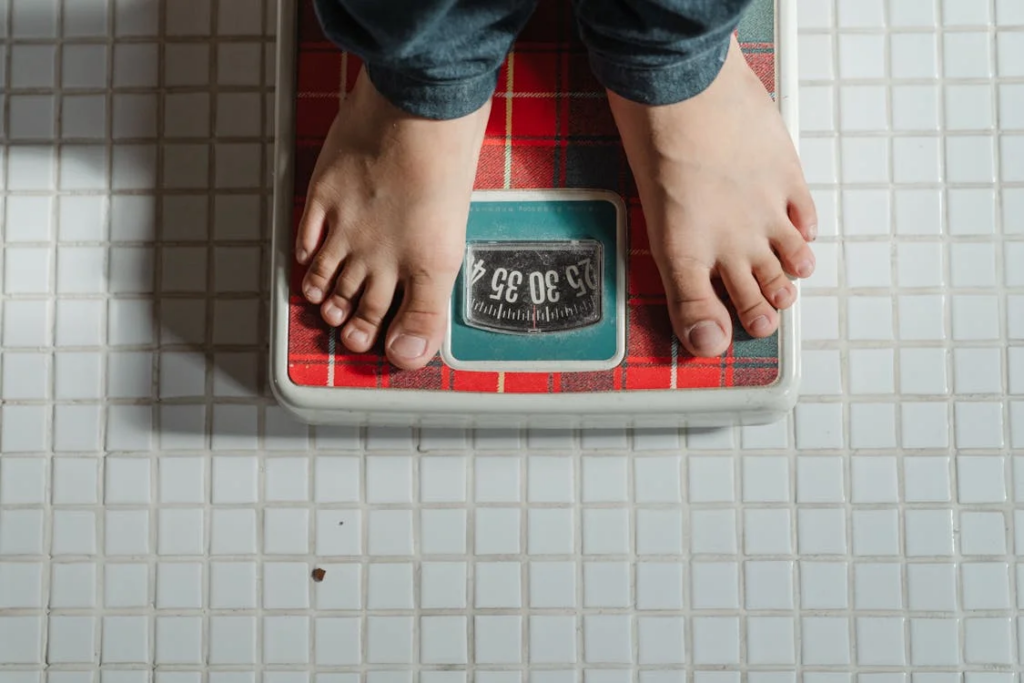
Shedding a few pounds without trying might seem like a welcome surprise, but it could also be one of the first signs your body is fighting cancer. Sudden and unexplained weight loss—typically defined as losing 10 pounds or more within a short period—can be caused by changes in your body’s metabolism. Cancer cells can hijack the body’s energy supply, causing a rapid breakdown of fat and muscle tissue. This process often goes unnoticed until the weight loss becomes significant.
Certain cancers are more commonly associated with this symptom, particularly those affecting the stomach, pancreas, lungs, or esophagus. For instance, pancreatic cancer can interfere with your body’s ability to digest nutrients, while stomach cancer may lead to a loss of appetite or difficulty eating. Lung cancer, on the other hand, may disrupt metabolic processes that lead to sudden weight changes.
It’s important to note that weight loss can happen for many reasons, including stress, changes in diet, or other health conditions. However, if the weight loss is rapid, persistent, and unaccompanied by changes in your lifestyle, it’s essential to consult a doctor. Catching this symptom early can help identify potential underlying issues, including the possibility of cancer, before it progresses further.
2. Persistent Fatigue
Everyone feels tired now and then, but cancer-related fatigue is different. This type of exhaustion doesn’t go away with rest and often feels overwhelming. Persistent fatigue can be caused by cancer cells draining the body’s energy or by the immune system working overtime to fight off the disease. This symptom is especially common in cancers like leukemia, where the body is actively battling abnormal blood cells, or colon and stomach cancers, which can cause internal bleeding and anemia.
The key distinction here is that this fatigue is unrelenting. It might feel like a heaviness in your body or an inability to focus or perform daily tasks. While fatigue is common in everyday life, when it persists without explanation and disrupts your normal routine, it’s worth getting checked out. Catching the cause early could uncover a hidden condition, including cancer.
3. Changes in Skin Appearance
The skin is one of the first areas of the body to show signs of internal issues, including cancer. Changes like yellowing (jaundice), darkening, redness, or a persistent rash can indicate something deeper is at play. For instance, jaundice is often linked to pancreatic cancer, while itchy, scaly patches might be associated with certain types of lymphoma.
Non-healing sores, particularly in sun-exposed areas, are another warning sign and could point to skin cancers like melanoma, basal cell carcinoma, or squamous cell carcinoma. Be especially cautious of new moles or changes to existing ones—such as irregular borders, multiple colors, or sudden growth—as these could indicate melanoma. Paying attention to these changes and seeking medical advice promptly can make a crucial difference.
4. Unusual Bleeding
Unexpected bleeding, whether it’s in the stool, urine, or from coughing, is a symptom that should never be ignored. Different types of cancers can lead to unusual bleeding. For example, colorectal cancer can cause blood in the stool, while bladder or kidney cancer might show up as blood in the urine. Persistent coughing with blood may indicate lung or throat cancer.
Sometimes, unusual bleeding is internal and not immediately noticeable, but symptoms like anemia, fatigue, or dark, tarry stools can point to hidden blood loss. If you notice any form of abnormal bleeding, even if it seems minor, seek medical attention. Early diagnosis can prevent further complications.
5. Persistent Cough or Hoarseness
A cough that won’t go away or a hoarse voice lasting for weeks might be linked to lung, throat, or thyroid cancer. Unlike a cold or seasonal allergies, cancer-related coughs are often dry and persistent. You may also notice blood-tinged phlegm, which should raise immediate concern.
Hoarseness, especially when accompanied by difficulty swallowing or persistent throat discomfort, could indicate cancer in the larynx or esophagus. These symptoms often overlap with other common conditions, so their persistence is a key warning sign to pay attention to.
6. Lumps or Swellings

Finding a lump or swelling in any part of your body—whether it’s the breast, neck, armpit, or groin—should prompt further investigation. These lumps could represent swollen lymph nodes, a common early sign of lymphoma or leukemia. In the breast, a lump could indicate breast cancer, particularly if it feels hard, immovable, and irregular in shape.
While not all lumps are cancerous, the texture, size, and location can provide critical clues. Regular self-examinations are vital for catching abnormalities early, as these growths are often painless in the early stages of cancer.
7. Changes in Bowel or Bladder Habits
Alterations in bathroom routines, such as chronic diarrhea, constipation, or blood in the stool, could signal colorectal cancer. Similarly, frequent urination, pain while urinating, or blood in the urine might indicate bladder or prostate cancer.
Sometimes, these changes occur gradually, making them easy to dismiss. However, persistent symptoms, especially when combined with pain or visible changes, should be assessed by a healthcare provider. Routine screenings like colonoscopies can be life-saving in catching these cancers early.
8. Difficulty Swallowing or Persistent Indigestion
Trouble swallowing or a constant feeling of food getting stuck in your throat could be linked to cancers of the esophagus or throat. Persistent indigestion or a burning sensation in the chest may point to stomach or gastrointestinal cancers.
While these symptoms can also be caused by conditions like acid reflux, the key difference is their persistence despite lifestyle changes or over-the-counter treatments. If eating becomes painful or you start avoiding certain foods due to discomfort, it’s time to seek medical advice.
9. Pain That Doesn’t Go Away

Pain that lingers without a clear cause is often the body’s way of signaling a problem. Persistent back pain, for example, may be linked to pancreatic or kidney cancer, while ongoing headaches might suggest a brain tumor. Bone pain, especially in the arms, legs, or pelvis, can be a symptom of bone cancer.
The nature of cancer-related pain is often deep, aching, and unrelieved by typical painkillers. If you’ve tried managing chronic pain without success, consult a doctor to rule out any underlying conditions, including cancer.
10. Fever Without Infection
A persistent fever with no obvious cause—such as a cold, flu, or other infection—can be an early sign of blood cancers like leukemia or lymphoma. Cancer-related fevers often occur at night and may be accompanied by chills or sweats.
While fever is the body’s natural response to fighting illness, its presence without a clear explanation should be taken seriously. It might indicate the immune system is battling something more severe, such as cancer.
11. Mouth Sores or White Patches
Sores in the mouth that don’t heal after a few weeks or white patches on the gums or tongue could be symptoms of oral cancer. This is especially common in smokers, heavy drinkers, or individuals with a history of chewing tobacco use.
Painful or persistent mouth sores, especially when accompanied by difficulty swallowing or jaw stiffness, should prompt immediate evaluation. Oral cancer, when detected early, is highly treatable.
12. Night Sweats

Waking up drenched in sweat, even in cool temperatures, could signal certain types of cancers, such as lymphoma. Night sweats associated with cancer are typically more severe than those caused by hormonal changes or common illnesses. They often occur alongside fever or unexplained weight loss, making them a symptom that should not be ignored.
13. Unexplained Swelling in the Face or Neck
Swelling in the face or neck could be a sign of a tumor pressing against blood vessels, reducing blood flow. This symptom is often linked to cancers of the lungs or chest, where growths can obstruct major veins. While swelling might seem minor at first, its persistence or recurrence warrants medical evaluation.
14. Frequent Infections
Cancers such as leukemia and lymphoma weaken the immune system, making the body more susceptible to frequent or lingering infections. If you find yourself constantly battling colds, respiratory issues, or other infections that seem unusually severe or long-lasting, it may indicate an underlying condition affecting immune function.
15. Changes in Nails

Unusual changes in your nails can be an early cancer indicator. Dark streaks or spots under the nails may point to skin cancer, while excessively pale or white nails could be linked to liver issues or anemia, sometimes associated with underlying cancers. Clubbing of the fingers—where the tips enlarge and nails curve downward—can signal lung cancer.
16. Persistent Bloating
Persistent bloating, especially in women, is often associated with ovarian cancer. Unlike typical bloating that fluctuates, cancer-related bloating tends to be constant and accompanied by other symptoms like pelvic pain or changes in appetite. Men may experience similar issues if gastrointestinal cancers are present.
17. Persistent Headaches
Chronic headaches that don’t respond to over-the-counter medication could be a symptom of a brain tumor. These headaches often worsen over time and may be accompanied by nausea, vision changes, or difficulty focusing. While not all headaches are linked to cancer, their persistence and severity should be monitored.
18. Vision Change
Blurred vision, double vision, or sudden vision loss can indicate certain types of cancers, particularly brain or eye cancer. These changes often occur due to tumors pressing on nerves or interfering with the brain’s visual processing centers.
19. Persistent Itchiness

Chronic, unexplained itching might be more than just a skin condition. Certain cancers, like lymphoma or liver cancer, can cause systemic itching due to the release of chemical compounds in the bloodstream. This itching is often intense and doesn’t respond to typical treatments.
20. Difficulty Breathing or Chest Pain
Shortness of breath, chest pain, or wheezing can be an early sign of lung cancer or cancer that has spread to the chest cavity. These symptoms may also occur if tumors press against airways or blood vessels. Persistent respiratory discomfort, particularly if it worsens over time, is a clear signal to seek medical advice.
Stay Vigilant, Stay Empowered
Cancer doesn’t always shout; often, it whispers through subtle, persistent symptoms that are easy to dismiss. By tuning into your body and recognizing these warning signs early, you’re taking a crucial step toward protecting your health. Awareness is the first line of defense, and knowledge empowers you to act swiftly when something feels off.
Remember, not every unusual symptom is a sign of cancer, but persistence and patterns matter. If you’ve noticed unexplained changes—whether it’s weight loss, fatigue, or something as simple as skin discoloration—don’t ignore them. Trust your instincts and consult a healthcare professional. Early intervention saves lives, and what might seem like a minor concern could hold the key to catching a condition early.
Your health is your greatest asset, and staying informed is the best way to safeguard it. By understanding these early signs and advocating for yourself, you’re not just reacting—you’re taking charge. Pay attention, ask questions, and don’t hesitate to seek answers. When it comes to your well-being, every moment counts.
Ancient History
The Strangest Yet Most Common Superstitions From Around the World

Superstitions are like hidden threads woven into the fabric of cultures around the world. They may seem strange, quirky, or downright bizarre, yet they offer a fascinating glimpse into the fears and hopes that people have carried for centuries. From ancient rituals to unusual habits passed down through generations, these beliefs are more than just old wives’ tales—they reveal how deeply tradition influences everyday life, even in the modern world.
Why do people still avoid walking under ladders, refuse to open umbrellas indoors, or cringe at the sight of black cats? These customs may seem arbitrary, but each one holds a piece of cultural history, rooted in stories of protection, fortune, and misfortune. In fact, many superstitions developed from practical beliefs, such as the need to ward off evil spirits or protect one’s family from harm. Passed along through generations, they remain as curious yet persistent elements in everyday life.
Europe’s Old Wives’ Tales and Fears of the Unknown

Europe, with its deep-rooted history and folklore, is a treasure trove of superstitions. These traditions reveal much about the continent’s collective fears and hopes, many of which have been passed down over generations. While some superstitions may seem like playful quirks, others reflect age-old concerns about fate, safety, and luck.
- Birthday Wishes in Germany – In Germany, wishing someone a happy birthday before the actual day is considered bad luck. This belief comes from the idea that demons or evil spirits could hear the early wishes and try to prevent them from happening.
- Eye Contact When Toasting – Germans also believe it’s essential to make eye contact when clinking glasses during a toast. This custom originates from historical concerns about poisoning and is said to prevent seven years of romantic misfortune if ignored.
- Greeting a Lone Magpie in Great Britain – In the UK, it’s common to greet a lone magpie with, “Good morning, Mr. Magpie. How is your lady wife today?” Because magpies are often seen in pairs, a solitary magpie is seen as a symbol of sorrow. The greeting is thought to ward off bad luck associated with seeing a lone magpie.
These customs, while unique to each culture, echo universal themes of respect for unseen forces and the desire to shape one’s own fortune. From avoiding early birthday wishes to greeting lone magpies, European superstitions are enduring reminders of the continent’s fascinating cultural heritage.
Latin American Beliefs: Rituals and Symbolism in Everyday Life

In Latin America, superstitions are a blend of indigenous traditions and colonial influences, creating a rich tapestry of beliefs aimed at offering protection and balancing luck and misfortune. These superstitions reveal how intertwined cultural heritage and spiritual practices are in everyday life.
- Crossing Oneself When Passing a Graveyard in Brazil – In Brazil, it’s customary to make the sign of the cross when passing a graveyard. This gesture, adopted from European Christian customs, is believed to protect against bad spirits or misfortune.
- Avoiding Pointing at Stars – Another Brazilian superstition warns against pointing at stars, as it’s thought to bring misfortune in the form of warts, particularly on children’s fingers. This belief has its roots in indigenous traditions, where stars were seen as symbols deserving of respect.
- Tuesday the 13th in Spain – Unlike the widely known Friday the 13th, in Spain, Tuesday the 13th is considered an unlucky day. Linked to Mars, the god of war, it’s seen as a day to avoid major events, such as weddings or travel. The superstition is so prevalent that some Spanish buildings skip the 13th floor altogether.
These beliefs, shaped by local traditions and religious symbolism, continue to influence Latin American culture. They demonstrate a strong sense of reverence for forces beyond one’s control and a belief in taking steps to ensure safety and fortune.
Asian Superstitions: Spirits, Numbers, and Symbolism
Across Asia, superstitions often reflect a deep spiritual connection to ancestors and beliefs in the power of numbers, colors, and actions to influence fortune. These customs highlight the region’s unique way of interpreting and respecting unseen forces.
- Avoiding the Number 4 in Japan – In Japan, the number 4 is avoided because it’s pronounced similarly to the word for “death” (shi). As a result, the number is often skipped in hospital rooms, apartment floors, and even gift sets to avoid associations with bad luck. The number 9 is also shunned, as its pronunciation (ku) sounds like the word for suffering or torture.
- Whistling at Night in South Korea – In South Korea, whistling at night is believed to attract ghosts and malicious spirits. This superstition likely comes from the association of nighttime sounds with summoning unwanted forces.
- Writing Names in Red Ink – In South Korea, writing someone’s name in red ink is highly taboo. Red is traditionally used for names on graves and tombstones, so writing a living person’s name in red is seen as inviting misfortune or death upon them.
These superstitions continue to shape everyday behavior in Asia, where respect for spiritual traditions runs deep. They serve as reminders to honor cultural beliefs about fortune and to navigate life cautiously.
The Middle Eastern and Eastern European Perspectives on Curses and Protection
In the Middle East and Eastern Europe, many superstitions focus on protection and respect for the dead. These beliefs, passed down through generations, reveal a shared cultural emphasis on safeguarding oneself and honoring spirits.
- Handing Sharp Objects in Turkey – In Turkey, it’s believed that handing someone a knife or scissors directly may lead to conflict or even enmity. Instead, people place these items on a surface rather than passing them hand-to-hand, as sharp objects symbolize division and the severing of relationships.
- Planting Fig Trees as a Curse – Another Turkish superstition holds that planting a fig tree outside someone’s home is a curse, believed to bring bad fortune to the household. The fig tree is thought to symbolize unwelcome intrusion and disruption.
- Delaying Funerals in Poland – In Poland, it’s thought that delaying a funeral past the following Sunday may bring about another death in the family. This belief underscores the importance of prompt respect for the deceased and is rooted in a fear of misfortune resulting from neglect.
- Returning for Forgotten Items in Russia – In Russia, going back for something forgotten after leaving the house is seen as bad luck unless you look in a mirror before leaving again. This action is thought to confuse lurking spirits, preventing them from following you out and bringing misfortune.
These superstitions reflect a deep cultural respect for protective customs and beliefs about unseen forces, serving as both practical and symbolic ways to ensure well-being and harmony.
A Modern Take on Superstitions: Cultural Relevance in a Globalized World

In today’s world, superstitions continue to fascinate and often thrive, despite modern advancements and a general move toward scientific reasoning. Interestingly, globalization has spread and transformed these beliefs, making them accessible to people from different backgrounds who find them both intriguing and strangely relatable.
Even with widespread education and technological development, superstitions still offer comfort to people, acting as rituals that give a sense of control over uncertain situations. This is especially true in global cities where diverse cultures intersect, bringing their unique superstitions along. For instance, tourists in Japan might adopt the avoidance of the number 4 out of respect for the local customs, while some people in Western countries may start saying “good morning” to magpies as a playful nod to British lore. The internet and social media have also popularized superstitions, creating a sort of virtual folklore that adds to the allure of these age-old beliefs.
Additionally, these superstitions often reflect universal concerns: the desire for health, love, prosperity, and protection. It’s this timeless relevance that helps them endure, reminding us that, no matter where we come from, superstitions offer a sense of connection to something larger than ourselves.
Why We Cling to the Bizarre—Superstitions as Cultural Windows
Superstitions may seem strange on the surface, yet they connect us to our history, values, and cultural identity. Despite being centuries old, these beliefs continue to thrive as symbolic gestures and cautionary tales, passed down through generations. They remind us that, regardless of scientific progress, the human desire for control and protection in the face of life’s uncertainties remains universal.
In exploring these superstitions from around the world, we gain insight not only into cultural diversity but also into shared human experiences. We’re all, in a way, united by these quirks—these seemingly odd habits that reflect our hopes and fears, our desire to bring good luck, and our wish to ward off misfortune. Perhaps superstitions, no matter how bizarre, are simply humanity’s way of saying: “Better safe than sorry.”
Awareness
Why the Media Keeps Getting It Wrong About Climate Change
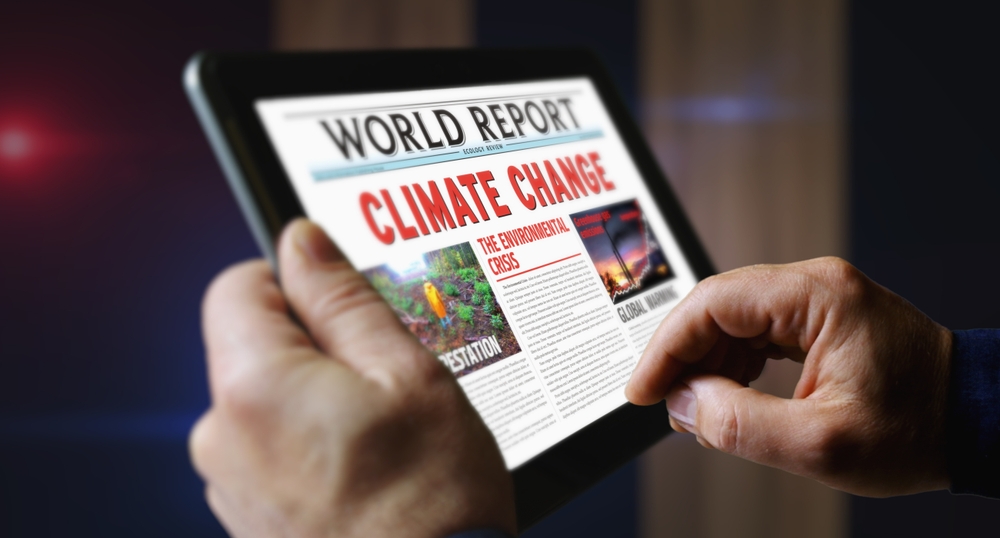
Climate change is one of the most pressing issues of our time, yet the mainstream media continues to stumble in its coverage, leaving the public inadequately informed. At a time when every day brings news of intensifying natural disasters, rising temperatures, and shifting ecosystems, the role of media in shaping our understanding—and urgency—around climate action is vital. Yet, the reality is that many media outlets still aren’t giving this issue the spotlight it deserves.
While some publications have increased their climate coverage, they often fail to convey the scope of the crisis or the solutions that could help mitigate it. From downplaying the severity to avoiding uncomfortable truths about root causes, media coverage has often missed the mark.
Downplaying the Crisis—Language and Framing Tactics
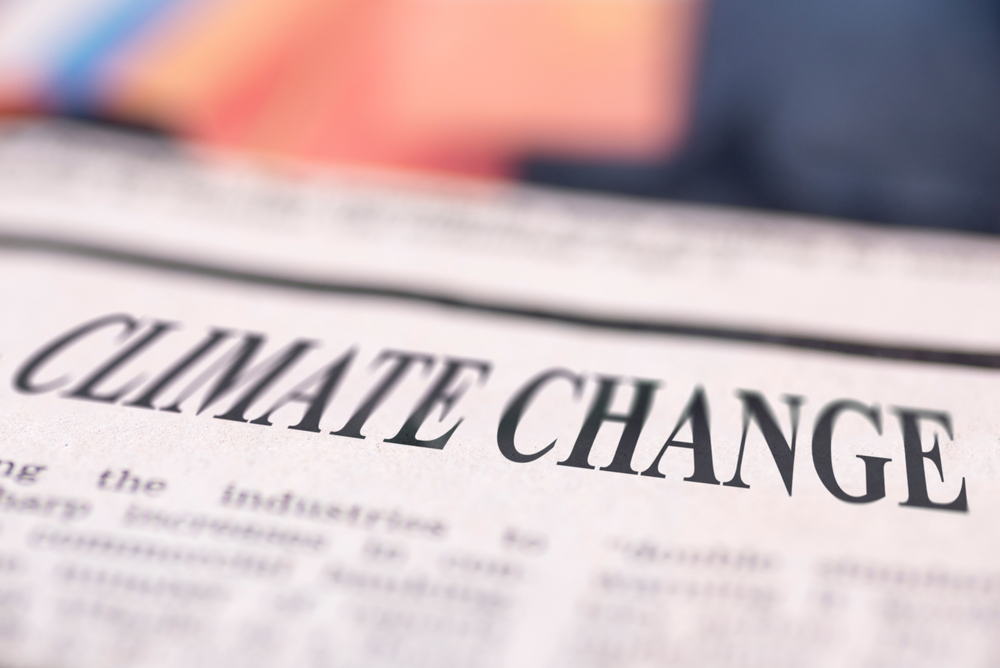
The way the media talks about climate change can have a huge impact on how we feel about it—and whether we feel like it’s something we need to act on. Words matter. For example, calling it a “climate crisis” gives off a sense of emergency. But saying “climate change”? It sounds almost gentle, like it’s just a shift in weather, nothing we need to worry about. This kind of language can make it easy for people to think it’s not a real, immediate threat.
Then there’s the way stories are framed. We often see headlines like “unexpected weather” or “unusual events” without any link to long-term climate trends. Headlines like these don’t tell us that these events are part of a bigger, ongoing problem. Or take the term “natural disaster”—it sounds random, right? But many of these disasters, like wildfires or floods, are now happening more frequently because of human-driven climate factors. If the media doesn’t make that connection clear, it’s easy for people to think these are isolated incidents, rather than seeing them as part of the bigger picture of climate change.
And this kind of language doesn’t just shape how we think; it affects how we act. When the media uses softer, vague words to describe what’s happening, it makes the crisis feel distant, even unimportant. If the news made it clear that these are urgent problems tied directly to climate change, people might feel a lot more inclined to push for action. The media has a huge influence here—they can help people understand that this is a serious, immediate crisis. All it takes is clearer, more straightforward language that doesn’t downplay the stakes.
False Balance and the Myth of “Both Sides” in Climate Reporting
One big way that climate reporting often goes wrong is by trying to give “both sides” of the issue equal airtime, even when there really aren’t two valid sides. You’ve probably seen this before: a climate scientist, someone who’s dedicated years to studying the crisis, is paired with a climate skeptic, as if their opinions are equally credible. But here’s the thing—more than 99% of scientists agree that climate change is real and mainly caused by human activities. There’s no real debate among experts.
So why does the media keep presenting it like there is? Giving skeptics the same platform makes it look like the science isn’t settled, like there’s still doubt about what’s causing climate change. But the science is as clear as it can be. This “both sides” approach just confuses people, making them think that climate change is still an open question, which can lead to inaction.
And this confusion has real consequences. Studies show that when people see climate change framed as a “debate,” they’re less likely to trust climate science or feel that urgent action is needed. If the media treated climate science the same way they treat topics like gravity or smoking, we’d probably see a lot more support for climate solutions. Climate reporting doesn’t need to give equal weight to skeptics—it needs to show the reality of what scientists know so people can see the full picture.
Missing Narratives—Underrepresented Voices and Stories

Another big gap in climate reporting is whose stories we actually hear. When we talk about climate change, the voices that often get the spotlight are from big cities or wealthier countries. Meanwhile, the people who are already dealing with the worst effects—communities in the Global South, Indigenous groups, and others on the frontlines—don’t get nearly as much attention. These are the people facing things like rising sea levels, intense droughts, and food shortages right now, but their stories don’t always make it into mainstream media.
This lack of coverage matters. When we don’t hear from people who are directly affected, it’s easy to think of climate change as a future problem or as something happening somewhere far away. But for many communities, climate change is already reshaping their daily lives. Hearing these stories would help everyone understand the crisis as something real and immediate, not just as an abstract idea.
There’s also a big piece missing when it comes to climate activists, especially young activists and those from marginalized communities. These are the people leading movements and pushing for real change, but they’re often sidelined or reduced to quick soundbites. By focusing more on these voices, media could give a fuller picture of both the problem and the solutions being fought for right now.
The Role of Individual Action Narratives and Fossil Fuel Advertising
One thing you’ll notice in a lot of climate coverage is how much it talks about what we, as individuals, should be doing—like recycling, using less plastic, or driving less. Now, those things do help, but when the focus is only on personal actions, it misses a huge part of the picture. Climate change isn’t just about individual choices; it’s mainly driven by a handful of big industries and companies with massive carbon footprints.
This is where fossil fuel companies get pretty crafty. They put out ads that make them look like they’re helping to fight climate change, with messages about renewable energy or planting trees. But the truth is, those “green” projects are often a tiny part of what they actually do. Most of their money is still poured into oil, gas, and coal. These ads make them look like climate heroes, even though they’re some of the biggest contributors to the problem.
So when the media focuses too much on what individuals can do, it can almost feel like a distraction. It makes us think that if we just bring our own bags to the store, we’re doing our part, while the real drivers of climate change keep on doing business as usual. If we’re going to get serious about climate solutions, we need media coverage that puts more pressure on these big polluters, not just on everyday people trying to make a difference with small changes.
Shaping a New Climate Narrative

If we’re serious about tackling climate change, the media has to get serious about how it covers it, too. Right now, a lot of climate coverage is falling flat. We see a focus on small personal actions, or we get stories that make it sound like the science isn’t totally clear—when it actually is. This type of coverage doesn’t just leave people confused; it makes the whole issue feel less urgent than it really is.
The media has a huge role to play in getting people to understand that climate change isn’t some distant, abstract problem—it’s here, and it’s impacting us now. By putting more focus on the big drivers of climate change, lifting up voices from communities on the frontlines, and stopping the fossil fuel ads that just muddy the waters, the media could give us a way clearer view of what’s really going on. People deserve reporting that’s upfront about the stakes, that doesn’t sugarcoat the problem or treat it like it’s just one of many issues we face. When the media is clear, honest, and talks about real solutions, it gives people a sense of direction—and shows that taking action is not only possible but necessary right now.
And hey, we can help push things in the right direction, too. We can support the outlets that take climate coverage seriously, call out misleading stories when we see them, and keep asking for better, more honest reporting. The more we demand transparency, the harder it’ll be for the media to ignore the real story.
Awareness
The Real Cost of Climate Change: These Countries Could Become Uninhabitable By 2050
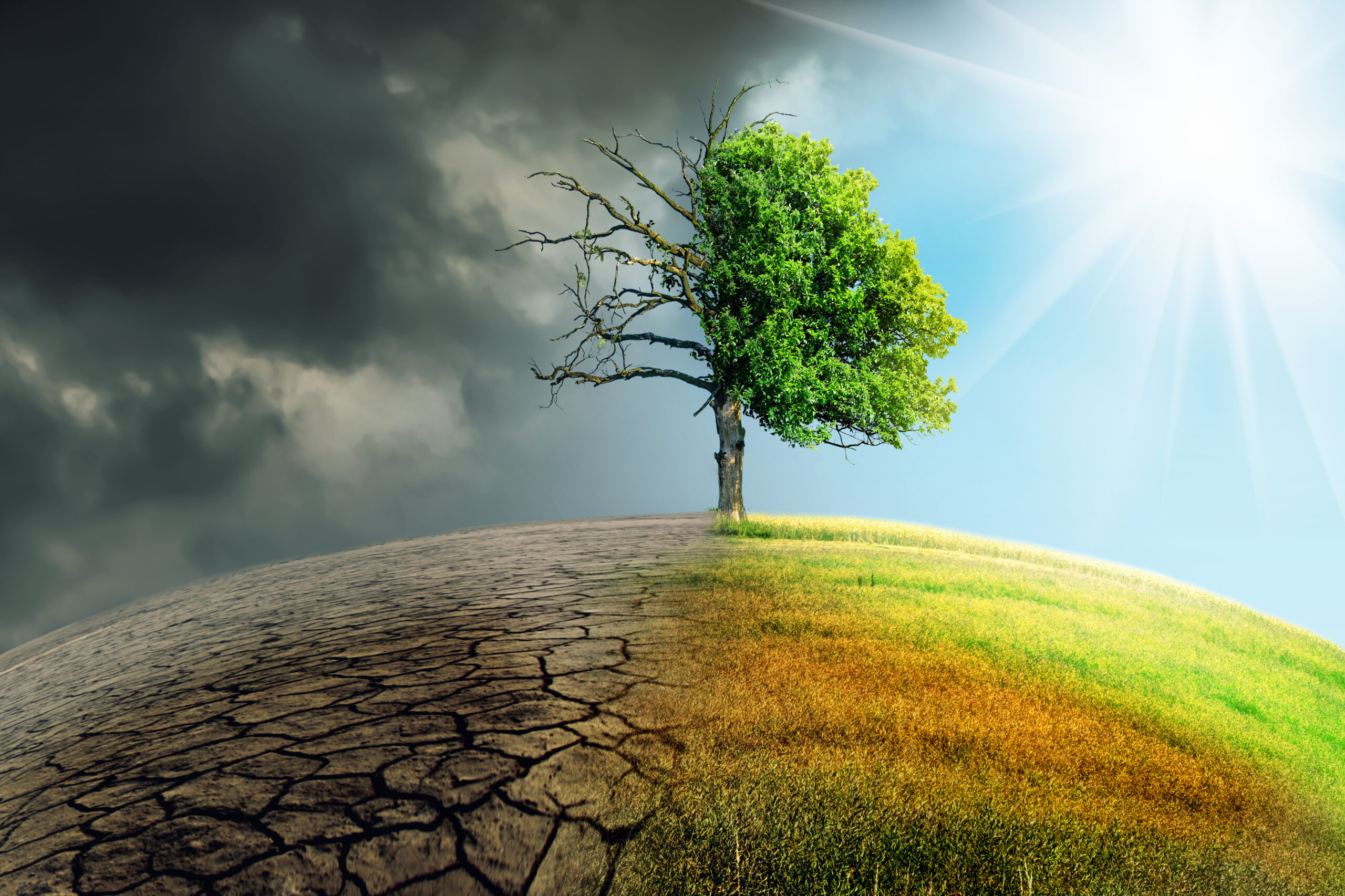
Imagine entire communities moving not because they want to, but because they have to. Climate change is quickly reshaping our world, and for many people, staying in their homes is becoming a distant dream. Rising sea levels, harsher droughts, and unpredictable storms are making certain places less livable every year, pushing people to pack up and leave.
Experts predict that by 2050, up to 1.2 billion people could be displaced due to climate impacts. These aren’t just numbers—they represent real people facing a difficult reality. This article dives into the predictions for our climate future and explores which regions are most at risk for mass migration. From small island nations to urban centers in developing countries, we’ll look at the looming challenges and what might be done to help those caught in the path of climate change.
How Climate Predictions Point to a Migration Crisis
To see why climate change might force so many people to move, let’s look at the science behind these predictions. Scientists use climate models—basically, advanced simulations—to forecast how things like temperature, rainfall, and sea levels will change over time. These models rely on years of data and reveal the patterns that give us a glimpse into the future.
But it’s not just about numbers. When scientists study these models, they’re seeing real-life consequences. Rising sea levels threaten to swallow coastlines, and severe droughts are already drying up farmland in some areas. For the people living in these places, that could mean losing their homes, jobs, and access to basic needs like food and water. Many will have little choice but to leave.
For example, some low-lying areas along coastlines are expected to experience frequent flooding, while other regions will face recurring droughts that make farming almost impossible. As more of these areas become unlivable, people may be forced to pack up and find somewhere safer. These climate predictions are painting a picture of what could be one of the biggest migration waves we’ve ever seen.
Global Hotspots of Climate Migration
Certain regions around the world are emerging as climate migration hotspots, where environmental degradation is driving mass displacement at alarming rates. Vulnerable due to geographic exposure, socio-economic challenges, or both, these areas serve as critical case studies for understanding how climate change forces entire populations to move.
1. South Asia: Rising Seas and Floods
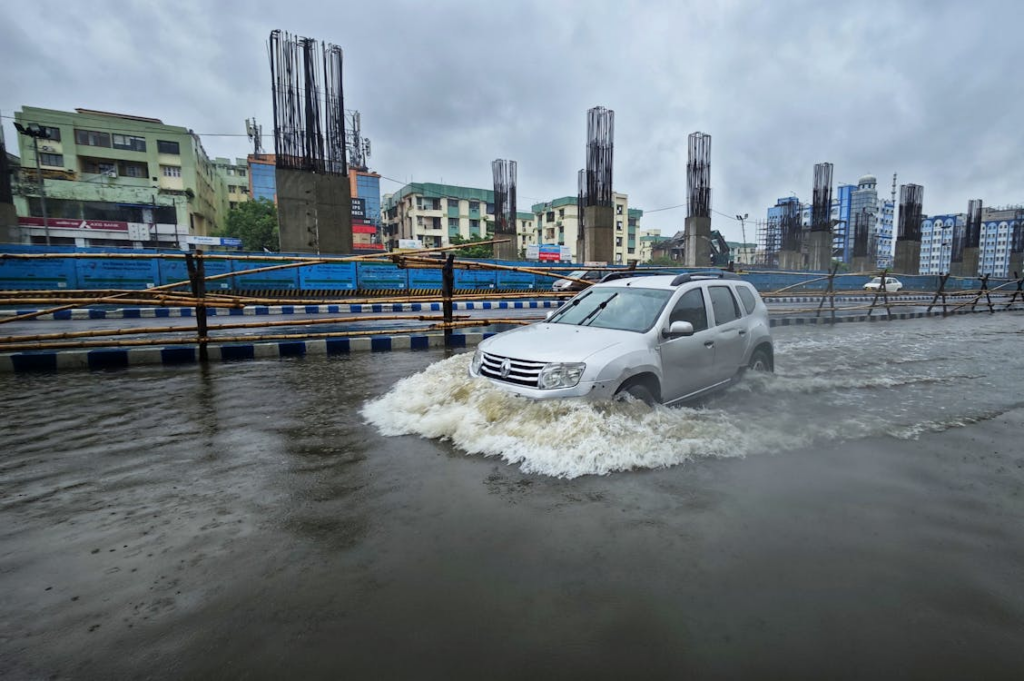
In South Asia, the impacts of climate change are severe, with flooding and sea-level rise posing significant threats. Bangladesh, for instance, sits less than five meters above sea level on average, making it highly susceptible to the encroaching waters. A study by the World Bank predicts that by 2050, around 13 million people in Bangladesh alone could be displaced by rising sea levels and intensified flooding. As the original article notes, “Bangladesh floods caused by cyclones have increased the salinity of 53 percent of farmland,” leading to crop failures and forcing farmers to either adapt or relocate. To counter these challenges, initiatives like the Dutch Salt Solution project are teaching farmers to grow salt-tolerant crops, though resources for such adaptive solutions remain limited.
Another South Asian country facing growing climate displacement is India. Severe droughts in central India have repeatedly led to crop failures, forcing many agricultural workers to abandon their farms and migrate to urban centers for employment. These shifts place considerable strain on India’s urban infrastructure, raising concerns about unplanned urbanization and the spread of informal settlements in flood-prone areas. Studies indicate that as many as 40 million Indians could be displaced by climate impacts by mid-century if current trends continue.
2. Sub-Saharan Africa: Desertification and Water Scarcity
Sub-Saharan Africa is another region heavily impacted by climate-induced migration, primarily due to desertification and water scarcity. In areas like the Sahel, rising temperatures and prolonged droughts have drastically reduced agricultural output and livestock survival rates. This phenomenon is particularly evident around Lake Chad, a vital water source that has shrunk by over 90% in recent decades. According to the United Nations, “When temperatures rise in a country, it can reduce water availability and water quality… This may increase the likelihood of drought leading to crop failures that will reduce incomes and food supplies.”
As arable land diminishes, communities in countries such as Nigeria, Niger, and Chad are compelled to move, either to urban centers or across borders in search of sustainable living conditions. The International Organization for Migration (IOM) warns that the Sahel’s environmental degradation, combined with socio-political instability, is fueling a migration crisis that affects millions. A study published by the Institute for Economics and Peace (IEP) underscores this, projecting that up to 86 million people in Sub-Saharan Africa could become climate migrants by 2050 if climate resilience measures are not put in place.
3. Pacific Islands: Sea-Level Rise and Coastal Erosion

In the Pacific Islands, where much of the land is situated mere feet above sea level, climate migration is becoming inevitable. Countries like Kiribati and the Maldives are on the front lines, facing an existential threat as rising oceans steadily encroach on their territory. Kiribati’s government has even taken the extraordinary step of purchasing land in Fiji as a potential relocation site for its people, a stark indication of the seriousness of the situation. A report by the United Nations University suggests that the entire population of some low-lying island nations may need to relocate within decades if current sea-level rise projections hold true.
Efforts are underway to stabilize vulnerable land by planting fast-growing trees to slow down coastal erosion and reduce landslide risks. However, while helpful, these solutions don’t fully address the longer-term threat of rising seas for island nations.
4. Latin America: Drought and Agricultural Collapse
In Latin America, climate migration is driven by recurring droughts and the decline of traditional agricultural livelihoods. Countries such as Honduras, Guatemala, and El Salvador, which are part of the Central American “Dry Corridor,” face prolonged dry spells that have devastated crop yields. As livelihoods disappear, many residents are forced to migrate northward in search of stability and food security. According to the Intergovernmental Panel on Climate Change (IPCC), up to 17 million people in Latin America may be displaced by climate impacts by 2050, with the majority migrating internally or across borders.
In South America, the Andes region faces its own unique climate challenges. Melting glaciers, which have shrunk significantly over the past 40 years, threaten the water supply for cities and agricultural zones. A study conducted by the Andean Development Corporation found that over 30% of Andean glaciers have disappeared, jeopardizing the drinking water and irrigation sources for millions in Peru, Ecuador, and Bolivia. These changes, compounded by temperature increases and extreme weather, could lead to substantial rural-to-urban migration.
Understanding the Global Patterns
While these regions face unique climate pressures, the patterns of migration they exhibit reveal broader global trends. Resource scarcity, compounded by socio-political instability, drives people from rural areas to urban centers or across borders, often resulting in informal settlements with inadequate infrastructure. Rahman’s observation that “climate change knows no borders” aptly captures the interconnected nature of these challenges, underscoring the need for coordinated international responses.
What Happens When Climate Migrants Move In

When people are forced to leave their homes because of climate change, they usually don’t go far—they head to nearby towns or cities hoping to start over. But when large numbers arrive at once, the places they move to can feel the impact in big ways.
Crowded Cities and Limited Resources
Imagine a city already dealing with limited housing, crowded schools, and busy hospitals. Now add thousands of newcomers who also need homes, jobs, and places for their kids to learn. Suddenly, everything feels squeezed. There aren’t enough houses, jobs become harder to find, and public services get stretched thin. When resources are tight, both locals and newcomers can start to feel the strain.
With so many new faces, some locals worry about how their town is changing. When people from different backgrounds mix, it can lead to misunderstandings. But it doesn’t have to. If cities get the support they need, they can help newcomers settle in and thrive, making communities stronger and more vibrant.
The Bigger Picture
The effects of climate migration can ripple out, especially in places already struggling. Competition over resources like land and water can create real tension. It’s a reminder that to handle climate migration, we need smart planning—policies that support both migrants and the communities welcoming them. With the right steps, we can help everyone have a fair shot at a safe, stable future.
The Legal and Humanitarian Gaps for Climate Migrants
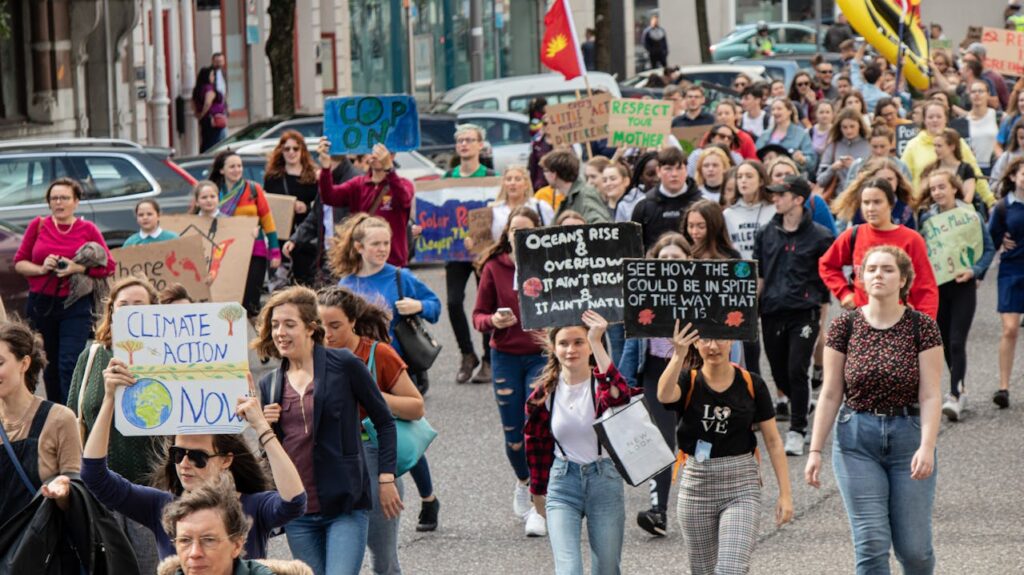
When people have to leave home because of climate disasters, they often find themselves with little support and few rights. Right now, most countries don’t recognize “climate refugees,” so people forced out by floods, droughts, or rising seas are often left without the legal protections that other refugees get.
No Official Status, No Help
Under current refugee laws, only people fleeing war or persecution qualify for certain protections, like asylum or legal residency. Climate migrants, however, don’t fit into those categories, which means they don’t get the same rights or support. For them, it’s like being stuck in a legal limbo—they’re escaping a life-threatening situation, but without official status, they’re often on their own.
Even within their own countries, many climate migrants face tough conditions. Some end up in makeshift camps or crowded areas with limited access to basics like clean water, food, and healthcare. With so many people in need, local resources often fall short, leaving migrants to live in challenging, sometimes unsafe, conditions.
As climate-driven migration grows, there’s a real need to rethink how we protect and support these migrants. Some experts suggest changing refugee laws to include climate migrants, while others push for new visa options or temporary protections. If nothing changes, millions will be left navigating an uncertain future—caught between a home they can’t return to and a new place that doesn’t recognize their need for safety.
Preparing for a Future of Climate Migration
As climate change reshapes the world, more people are finding they have no choice but to leave their homes. For some, it’s the rising seas; for others, it’s relentless droughts or devastating storms. And while the impacts are felt most immediately in certain hotspots, the ripple effect touches us all. From crowded cities to strained resources, climate migration is becoming an issue we all share.
To face this reality, we need to think ahead. This means updating our laws to protect climate migrants, supporting communities that welcome them, and helping at-risk areas adapt so people can stay if they choose. The way we respond now will shape the lives of millions and define how we handle the challenges ahead. With smart planning and compassion, we can build a future where everyone—whether staying put or starting fresh—has the chance at a safe, stable life.
Activism
Prayers Are Needed for Steve Irwin’s Daughter Bindi. She Is on Her Way to Recovery but Prayers Will Help a Lot

Bindi Irwin, celebrated for her dedication to wildlife conservation and carrying on her father Steve Irwin’s legacy, is no stranger to facing challenges in the public eye. From working with dangerous animals to maintaining her family’s work, she has always shown strength. Yet, behind her contagious smile and commitment to the natural world, Bindi has quietly been fighting a personal health battle, away from the limelight, for over ten years.
Recently, Bindi revealed her struggle with a condition that affects millions of women. This courageous step not only exposed the reality of her own experience but also opened up critical discussions about a topic that often remains misunderstood.
As she continues her journey to recovery, Bindi’s story has become one of hope and resilience. It’s a powerful reminder of the importance of raising awareness and advocating for those who suffer in silence. So, what has this journey been like for her, and how has it shaped the person she is today?
Bindi’s Ten-Year Battle for Diagnosis
For over a decade, Bindi Irwin quietly endured overwhelming pain, fatigue, and nausea, all without knowing the real cause. Like many women, her symptoms were brushed off by doctors, with some telling her that the pain was just “part of being a woman.” One doctor even told her to simply “deal with it.” These dismissals left her struggling not just physically but emotionally, as she was left without answers and continued suffering.
Bindi didn’t give up, though. She underwent numerous tests for everything from tropical diseases to cancer, but nothing explained her pain. It wasn’t until a close friend encouraged her to see a specialist that she finally found some clarity. In 2022, after another intense episode of pain left her curled up in a fetal position, Bindi had a laparoscopy—an important procedure that allows doctors to get a clearer look inside the abdomen. What they found was shocking: 37 lesions, some deeply embedded, and a “chocolate cyst” on one of her ovaries.
Hearing her doctor say, “How did you manage to live with this much pain?” was a moment of validation. Finally, she had the answers she had been seeking for so long. Sadly, Bindi’s story isn’t unique—many women with endometriosis face years of being ignored or misdiagnosed before getting proper help.
How Endometriosis Affected Bindi’s Life and Career
Bindi Irwin’s battle with endometriosis didn’t just cause physical pain—it impacted every aspect of her life. For more than ten years, she dealt with exhaustion, constant discomfort, and nausea. Despite these struggles, she continued her work as a conservationist, public figure, and a new mom to her daughter, Grace. But behind the scenes, things were far more difficult than most people knew. As Bindi once said, “Every part of my life was being torn apart because of the pain.”
The symptoms of endometriosis—like severe pelvic pain, painful periods, and fatigue—were always present, making it hard for her to keep up with her busy career. Her days at Australia Zoo, where she works alongside her family, became more challenging as she struggled to manage both her work and her health. Even simple social events had to be put on hold, as she funneled every bit of energy into just getting through each day. This invisible battle made it difficult for others to truly understand how much she was suffering.
Beyond the physical toll, the emotional burden was just as heavy. Like many women with chronic conditions, Bindi often felt isolated and frustrated by the lack of understanding from the medical community. One doctor even told her to “just deal with it,” a common experience for women whose pain is often dismissed.
Bindi’s story mirrors the experiences of many women dealing with endometriosis—struggling in silence while trying to maintain their personal and professional lives. It’s not just a physical condition; it affects your entire world.
Speaking Up: Turning Pain Into Purpose
After years of silently struggling, Bindi Irwin made the courageous choice to open up about her experience with endometriosis. In March 2023, just after her surgery, she shared her story on social media, letting the world in on her personal battle. Her message was heartfelt and honest, connecting deeply with women who had faced similar challenges. “There’s a stigma around this awful disease,” Bindi wrote. “I’m sharing my story for anyone who’s quietly dealing with pain and still searching for answers.”
By speaking out, Bindi didn’t just shed light on her own pain—she highlighted an issue that affects millions of women but often goes unnoticed. Endometriosis is more than just bad cramps; it’s a condition that can take over your life. Bindi’s openness helped start important conversations about how we need better education, awareness, and support for those dealing with this condition.
When Bindi received the Endometriosis Foundation of America’s Blossom Award, she made her mission clear: “I’ll spend the rest of my life raising awareness and helping others who are fighting this same battle.” Her willingness to speak up has given a voice to so many who feel overlooked or misunderstood.
Bindi’s story is a powerful reminder that sometimes, sharing your pain can help others find their own strength. She’s not just fighting for herself—she’s fighting for every woman who’s been told her pain doesn’t matter.
Coping with Endometriosis

Dealing with endometriosis is tough, but there are little things you can do to make life more manageable. Sometimes it’s as simple as taking a break to breathe deeply or stretch. Even a few minutes of calm can help ease stress, which often makes the pain worse. Writing down how you feel each day can also be helpful—it lets you spot patterns and helps your doctor find better ways to treat your symptoms.
Moving your body, even if it’s just taking a short walk or doing some light stretching, can help a lot. It gets your blood flowing and can make you feel a bit better. Eating more fresh foods—like fruits, veggies, and whole grains—may also lower inflammation, which could ease some of the symptoms. And on those really rough days, using a heating pad or soaking in a warm bath can bring quick relief.
But above all, don’t go through this alone. Talk to someone—a friend, a family member, or even a support group. Just having people around who understand what you’re going through can make a huge difference when things get hard.
Bindi’s Journey of Healing and Advocacy
Bindi Irwin’s journey with endometriosis is a story of strength and determination. After years of quietly enduring pain, she’s now using her experience to help others. By opening up about what she’s been through, Bindi is giving a voice to so many women who’ve felt ignored or brushed aside. Her message is clear: your pain is real, and it deserves to be taken seriously.
Bindi’s honesty is already making a difference. She’s sparking conversations that are much needed, shining a light on how often women’s health issues get overlooked. And she’s showing that speaking up can lead to real change—not just for herself, but for so many others.
As Bindi moves forward, she’s balancing her life as a mom, a conservationist, and now, an advocate for women’s health. Her story is a reminder that, even when things seem impossible, there’s always hope. By sharing her journey, she’s letting others know they’re not alone and that better days are ahead. No matter how tough the fight, Bindi’s courage shows us that healing is possible, and there’s always hope on the horizon.
Awareness
11 Things You Really Need to Stop Recycling
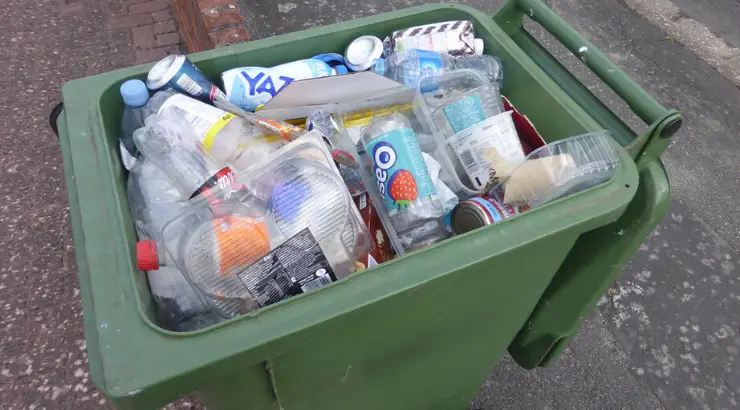
(TMU Op-Ed) — Since most of us were kids we’ve heard the phrase Reduce, Reuse, Recycle repeated ad nauseam everywhere from on TV to ads plastered on the sides of buses, on recycling bins, on coloring pages, and a host of other places.
However, over the years it seems something was lost in translation. With less focus placed on reducing and reusing, our recycling bins are overflowing week after week. Sure, it might be better to have an overflowing recycling bin than it is to have an overflowing trash bin, but how much better is it really?
At the same time we’re finally seeing an increase of recycling outside of the home at places like schools, gas stations, airports, etc. we’re also seeing a dramatic cutting back of the acceptance of recyclables created in the United States. China recently started restricting the import of recyclable waste including mixed paper and most plastics. The news of this happening was the first time that many people in the United States became aware that a lot of our recycling isn’t actually recycled here. For an act billed as a necessity to saving the environment, the fact that it uses an overwhelming amount of time and resources including fuel to ship it overseas is a little concerning.
But more than that, recycling is only a thing because recyclables are valuable. According to a press release, “The global waste management market size is expected to reach $484.9 billion by 2025.” This means that when you toss something into your recycling bin and it is not able to turn a profit it won’t be recycled. Unfortunately this isn’t rare.
Then there’s also the people that are too hopeful about the abilities of the recycling industry and as a result they toss everything in the bin regardless of what the code on the bottom of the item says or what their local rules say. It only takes a little bit of the wrong thing from a “wishful” recycler to ruin an entire batch of recyclable material. And this too isn’t rare. In fact, according to Waste Management one out of every four items that ends up in recycling bins doesn’t actually belong there.
Here are 11 things that “wishful” recyclers tend to toss in the bin:
- Plastic Bags — To some it may be common knowledge that plastic shopping bags, bubble wrap, cereal bags, food wrap, and more cannot be recycled in your home bin but they still find their way into municipal recycling facilities far too often. These bags can clog up machines and workers must remove them by hand. Thankfully plastic bags are accepted at many stores including local co-ops and chains like Target and Trader Joes.
- Receipts — Unfortunately, most receipts that you receive while shopping are coated in Bisphenol A (BPA). While yes they are paper, the fact that they are coated in BPA means that it contaminates the paper product being made when they get mixed in with the pulp. If you don’t need a receipt just decline it at the store since you can’t recycle it and more importantly because the BPA coating comes off onto your hands and other surfaces. This is especially important information for parents who often hand receipts off to antsy kids during shopping trips. Skip the receipts if you can and if you can’t be sure to wash your hands after handling them.
- Pizza Boxes — Takeout and delivery pizza boxes can’t be recycled, despite their obvious cardboard construction. Any paper product with even the smallest amount of food strains cannot be recycled and this always includes pizza boxes. Thankfully many pizza boxes are now made to be compostable and will say so on the box but remember: compostable does not equal recyclable.
- Bits of Food — Just because you can recycle something doesn’t mean you can recycle it dirty. Rinse out glass and plastic before tossing it in the bin and if the container is still greasy use some soap and water. Even a little bit of food can ruin an entire load of recycling.
- Coffee Cups — Even the greenest among us find ourselves out and about without our own cup when we crave a cup of coffee. Unfortunately, while those cups are paper, they’re lined with plastic film to keep the liquid from soaking into and then out of it which makes them impossible to recycle. The lids and the paper sleeves are recyclable but the cups never are. Next time you’re out without your own reusable cup, ask the barista for a “here” cup and finish your drink before leaving.
- Wrapping Paper — Some municipalities accept wrapping paper but it is important to check your local rules. However, the popular shiny and metallic papers are never recyclable. If you are able to recycle basic, matte wrapping paper be sure to remove ribbons and bows. In lieu of using store bought gift wrap, try transitioning into using newspaper, paper bags, or the brown paper that sometimes comes inside of shipping packages.
- Shredded Paper — There are good reasons to shred certain documents at home but unless you compost it’s better to stick to shredding only that which must be shredded because recycling centers just can’t handle those tiny strips of paper. In fact they can clog up the equipment because they’re so small! Thankfully shredded paper can be composted but make sure not to include envelopes with plastic windows or anything else that isn’t paper. However, some municipalities will accept shredded paper but only if it’s placed in a paper bag and stapled close so please check your local rules for this one.
- Broken Things — Broken plates and glass shouldn’t be placed in your recycling for various reasons. One of the biggest is that they pose a hazard to sanitation workers. If you have broken items wrap them in plastic and carefully put them in the trash.
- Old Dishes — Plates and glassware are not recyclable. If you have items that are in good condition take them to a thrift store instead of throwing them away. Bakeware has a much different melting point and chemical composition than normal recyclable glass.
- Bits of Metal — Some things are too small to recycle. Just like how a piece of paper is recyclable but shredded paper is not, the tab from a metal can isn’t recyclable by itself even though an entire can is. And it’s for the same reason—these small things can clog up the machinery and slow down the entire recycling process. If a soda can tab does fall off, place it inside the can when you’re done. If you have little bits of tinfoil, keep it somewhere safe and add to it until it becomes a big ball.
- Food Boxes and Containers — Most freezer food boxes are coated in plastic, much like coffee cups. And just like coffee cups it makes these otherwise paper products not recyclable. Unfortunately this is the same for cartons that contain nut milk, oat milk, juice, soups, and more. Some municipalities currently accept these cartons but it is not the norm. You can find out more about how to recycle those containers here.
Remember: when in doubt, throw it out. It’s better to mistakenly throw something away that could be recycled than be an aspirational recycler and ruin an entire truck load of recycling. And always check with your local municipality at least once a year to stay up to date on the rules where you live.
Reduce, reuse, recycle—in that order.
Opinion
The Origins of Thought Police — and Why They Scare Us

(FEE Opinion) — There are a lot of unpleasant things in George Orwell’s dystopian novel 1984. Spying screens. Torture and propaganda. Victory Gin and Victory Coffee always sounded particularly dreadful. And there is Winston Smith’s varicose ulcer, apparently a symbol of his humanity (or something), which always seems to be “throbbing.” Gross.
None of this sounds very enjoyable, but it’s not the worst thing in 1984. To me, the most terrifying part was that you couldn’t keep Big Brother out of your head.
Unlike other 20th-century totalitarians, the authoritarians in 1984 aren’t that interested in controlling behavior or speech. They do, of course, but it’s only as a means to an end. Their real goal is to control the gray matter between the ears.
“When finally you surrender to us, it must be of your own free will,” O’Brien (the bad guy) tells the protagonist Winston Smith near the end of the book.
We do not destroy the heretic because he resists us: so long as he resists us we never destroy him. We convert him, we capture his inner mind, we reshape him.
Big Brother’s tool for doing this is the Thought Police, aka the ThinkPol, who are assigned to root out and punish unapproved thoughts. We see how this works when Winston’s neighbor Parsons, an obnoxious Party sycophant, is reported to the Thought Police by his own child, who heard him commit a thought crime while talking in his sleep.
“It was my little daughter,” Parsons tells Winston when asked who it was who denounced him. “She listened at the keyhole. Heard what I was saying, and nipped off to the patrols the very next day. Pretty smart for a nipper of seven, eh?”
Who Are These Thought Police?
We don’t know a lot about the Thought Police, and some of what we think we know may actually not be true since some of what Winston learns comes from the Inner Party, and they lie.
What we know is this: The Thought Police are secret police of Oceania—the fictional land of 1984 that probably consists of the UK, the Americas, and parts of Africa—who use surveillance and informants to monitor the thoughts of citizens. The Thought Police also use psychological warfare and false-flag operations to entrap free thinkers or nonconformists.
Those who stray from Party orthodoxy are punished but not killed. The Thought Police don’t want to kill nonconformists so much as break them. This happens in Room 101 of the Ministry of Love, where prisoners are re-educated through degradation and torture. (Funny sidebar: the name Room 101 apparently was inspired by a conference room at the BBC in which Orwell was forced to endure tediously long meetings.)
The Origins of the Thought Police
Orwell didn’t create the Thought Police out of thin air. They were inspired to at least some degree by his experiences in the Spanish Civil War (1936-1939), a complicated and confusing affair. What you really need to know is that there were no good guys, and it ended with left-leaning anarchists and Republicans in Spain crushed by their Communist overlords, which helped the fascists win.
Orwell, an idealistic 33-year-old socialist when the conflict started, supported the anarchists and loyalists fighting for the left-leaning Second Spanish Republic, which received most of its support from the Soviet Union and Josef Stalin. (That might sound bad, but keep in mind that the Nazis were on the other side.) Orwell described the atmosphere in Barcelona in December 1936 when everything seemed to be going well for his side.
The anarchists were still in virtual control of Catalonia and the revolution was still in full swing … It was the first time that I had ever been in a town where the working class was in the saddle,
he wrote in Homage to Catalonia.
[E]very wall was scrawled with the hammer and sickle … every shop and café had an inscription saying that it had been collectivized.
That all changed pretty fast. Stalin, a rather paranoid fellow, was bent on making Republican Spain loyal to him. Factions and leaders perceived as loyal to his exiled Communist rival, Leon Trotsky, were liquidated. Loyal Communists found themselves denounced as fascists. Nonconformists and “uncontrollables” were disappeared.
Orwell never forgot the purges or the steady stream of lies and propaganda churned out from Communist papers during the conflict. (To be fair, their Nationalist opponents also used propaganda and lies.) Stalin’s NKVD was not exactly like the Thought Police—the NKVD showed less patience with its victims—but they certainly helped inspire Orwell’s secret police.
The Thought Police were not all propaganda and torture, though. They also stem from Orwell’s ideas on truth. During his time in Spain, he saw how power could corrupt truth, and he shared these reflections in his work George Orwell: My Country Right or Left, 1940-1943.
…I saw newspaper reports which did not bear any relation to the facts, not even the relationship which is implied in an ordinary lie. I saw great battles reported where there had been no fighting, and complete silence where hundreds of men had been killed. I saw troops who had fought bravely denounced as cowards and traitors, and others who had never seen a shot fired hailed as the heroes of imaginary victories; and I saw newspapers in London retailing these lies and eager intellectuals building emotional superstructures over events that had never happened.
In short, Orwell’s brush with totalitarianism left him worried that “the very concept of objective truth is fading out of the world.”
This scared him. A lot. He actually wrote, “This kind of thing is frightening to me.”
Finally, the Thought Police were also inspired by the human struggle for self-honesty and the pressure to conform. “The individual has always had to struggle to keep from being overwhelmed by the tribe,” Rudyard Kipling once observed.
The struggle to remain true to one’s self was also felt by Orwell, who wrote about “the smelly little orthodoxies” that contend for the human soul. Orwell prided himself with a “power of facing unpleasant facts”—something of a rarity in humans—even though it often hurt him in British society.
In a sense, 1984 is largely a book about the human capacity to maintain a grip on the truth in the face of propaganda and power.
More Prophetic Than He Knew?
It might be tempting to dismiss Orwell’s book as a figment of dystopian literature. Unfortunately, that’s not as easy as it sounds. Modern history shows he was onto something.
When the Berlin Wall came down in November 1989, it was revealed that the Stasi, East Germany’s secret police, had a full-time staff of 91,000. That sounds like a lot, and it is, but what’s frightening is that the organization had almost double that in informants, including children. And it wasn’t just children reporting on parents; sometimes it was the other way around.
Nor did the use of state spies to prosecute thoughtcrimes end with the fall of the Soviet Union. Believe it or not, it’s still happening today. The New York Times recently ran a report featuring one Peng Wei, a 21-year-old Chinese chemistry major. He is one of the thousands of “student information officers” China uses to root out professors who show signs of disloyalty to President Xi Jinping or the Communist Party.
The New Thought Police?
The First Amendment of the US Constitution, fortunately, largely protects Americans from the creepy authoritarian systems found in 1984, East Germany, and China; but the rise of “cancel culture” shows the pressure to conform to all sorts of orthodoxies (smelly or not) remains strong.
The new Thought Police may be less sinister than the ThinkPol in 1984, but the next generation will have to decide if seeking conformity of thought or language through public shaming is healthy or suffocating. FEE’s Dan Sanchez recently observed that many people today feel like they’re “walking on eggshells” and live in fear of making a verbal mistake that could draw condemnation.
That’s a lot of pressure, especially for people still learning the acceptable boundaries of a new moral code that is constantly evolving. Most people, if the pressure is sufficient, will eventually say “2+2=5” just to escape punishment. That’s exactly what Winston Smith does at the end of 1984, after all. Yet Orwell also leaves readers with a glimmer of hope.
“Being in a minority, even a minority of one, did not make you mad,” Orwell wrote. “There was truth and there was untruth, and if you clung to the truth even against the whole world, you were not mad.”
In other words, the world may be mad, but that doesn’t mean you have to be.
By Jon Miltimore | FEE.org | Republished with permission
The views in this article may not reflect editorial policy of The Mind Unleashed.
Awareness
The ADHD Overdiagnosis Epidemic: What You Need to Know
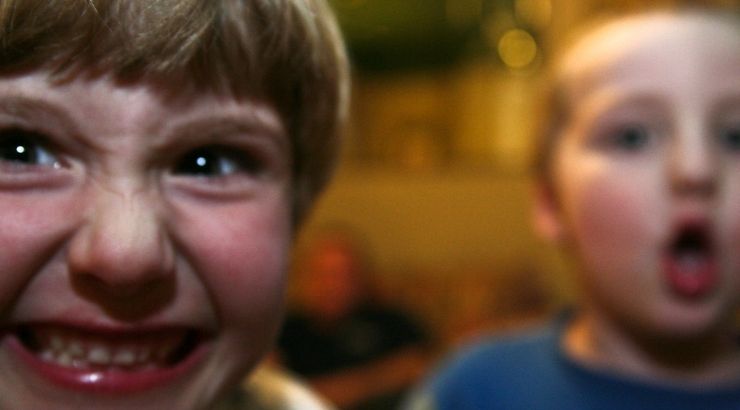
(FEE) — Childhood exuberance is now a liability. Behaviors that were once accepted as normal, even if mildly irritating to adults, are increasingly viewed as unacceptable and cause for medical intervention. High energy, lack of impulse control, inability to sit still and listen, lack of organizational skills, fidgeting, talking incessantly—these typical childhood qualities were widely tolerated until relatively recently. Today, children with these characteristics are being diagnosed with, and often medicated for, Attention-Deficit/Hyperactivity Disorder (ADHD) at an astonishing rate.
The ADHD Medical Dragnet
While ADHD may be a real and debilitating ailment for some, the startling upsurge in school-age children being labeled with and medicated for this disorder suggests that something else could be to blame. More research points to schooling, particularly early schooling, as a primary culprit in the ADHD diagnosis epidemic.
Over the last several decades, young people are spending more time in school and school-like activities than ever before. They are playing less and expected to do more at very young ages. When many of us were kids, kindergarten was mellow, playful, and short with few academic expectations. Now, 80 percent of teachers expectchildren to learn to read in kindergarten. It’s not the teachers’ fault. They are responding to national curriculum frameworks and standardized testing requirements that over the past two decades have made schooling more oppressive—particularly for young children.
The youngest children are the ones most often caught in the ADHD medical dragnet. Last fall, Harvard researchers found that early school enrollment was linked to significantly higher rates of ADHD diagnosis. In states with a September 1 school enrollment age cutoff, children who entered school after just turning five in August were 30 percent more likely to be diagnosed with ADHD than children born in September who were about to turn six. Immaturity, not pathology, was the real factor.
The ADHD Fallacy
Marilyn Wedge, author of A Disease Called Childhood: Why ADHD Became An American Epidemic, sounds the alarm on ADHD overdiagnosis. In a Time Magazine article called “The ADHD Fallacy,” she writes:
By nature, young children have a lot of energy. They are impulsive, physically active, have trouble sitting still, and don’t pay attention for very long. Their natural curiosity leads them to blurt out questions, oblivious in their excitement to interrupting others. Yet we expect five- and six-year-old children to sit still and pay attention in classrooms and contain their curiosity. If they don’t, we are quick to diagnose them with ADHD.
According to the US Centers for Disease Control and Prevention (CDC), the percent of very young children (ages two to five) who were diagnosed with ADHD increased by over 50 percent between 2007/2008 and 2011/2012. As of 2016, data show that 9.4 percent of all American children, or over six million kids, had been diagnosed with ADHD, and almost two-thirds of current ADHD-diagnosed children were taking medication for it. A March 2019 report on ADHD by Blue Cross and Blue Shield found that among commercially insured children of all ages, ADHD diagnosis rates increased 30 percent in just eight years.
While the symptoms of ADHD may be troublesome, looking first at the environment, rather than the child, may be an important step toward curbing the ADHD diagnosis epidemic. In his book, ADHD Does Not Exist, Dr. Richard Saul, a Chicago behavioral neurologist, explains that individuals diagnosed with ADHD either have external factors that exacerbate normal symptoms or have some other underlying condition that should be identified and treated. In the latter instance, he finds that once the underlying condition is discovered and treated, the ADHD symptoms usually disappear. In the former instance, changing the environment is a key step toward improvement. This is true for both children and adults with an ADHD diagnosis. Dr. Saul writes:
Like many children who act out because they are not challenged enough in the classroom, adults whose jobs or class work are not personally fulfilling or who don’t engage in a meaningful hobby will understandably become bored, depressed and distracted. In addition, today’s rising standards are pressuring children and adults to perform better and longer at school and at work.
An Environmental Mismatch
Addressing an environmental mismatch for ADHD-diagnosed adults could mean switching one’s job or field of study or pursuing a true passion. Maybe you’re an accountant who wants to be a carpenter or a nurse who wants to be an entrepreneur. For ADHD children, changing the environment could mean removing children from restrictive schooling altogether. As Boston College psychology professor Peter Gray writes:
What does it mean to have ADHD? Basically, it means failure to adapt to the conditions of standard schooling. Most diagnoses of ADHD originate with teachers’ observations.
Jennifer Walenski saw firsthand how transformative removing her ADHD-diagnosed child from standard schooling could be. She shares her family’s journey at The Bus Story and told me:
Our kids were actually in public school originally. Our son also was diagnosed with both ADHD and autism while he was in the school system. And they wanted to medicate him. But we said no. Then we took him and his sister out of school and began homeschooling them. Fast forward several years, he has absolutely no need at all for medication. He is just a normal boy who did not belong in that kind of environment. And most of us don’t. Think about it.
Walenski’s experience echoes that of other parents who removed their ADHD-diagnosed children from standard schooling. In an informal survey analysis, Gray discovered that when ADHD-labeled children left school for homeschooling, most of them no longer needed medication for ADHD symptoms. Their ADHD characteristics often remained but were no longer problematic outside of the conventional classroom.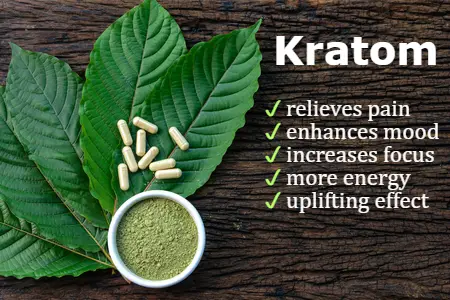
Self-Directed Learning
Gray’s analysis also revealed that the ADHD-labeled young people who fared best outside of standard schooling were those who were able to learn in a more self-directed way. He found that the
few kids in this sample who were still on ADHD medications during homeschooling seemed to be primarily those whose homeschooling was structured by the parent and modeled after the education one would receive in a conventional school.
Replicating school-at-home can also replicate the problematic behaviors found at school, whereas moving toward unschooling, or self-directed education, can give young people the freedom to flourish.
Ending the ADHD overdiagnosis epidemic depends on a societal reality check where we no longer pathologize normal childhood behaviors. Much ADHD-labeling originates from forced schooling environments with learning and behavioral expectations that are developmentally inappropriate for many children. Freeing young people from restrictive schooling and allowing them to learn and grow through their own self-directed curiosity can lead to happier and healthier families and children.
By Kerry McDonald | FEE.org
The views in this article may not reflect editorial policy of The Mind Unleashed.
-
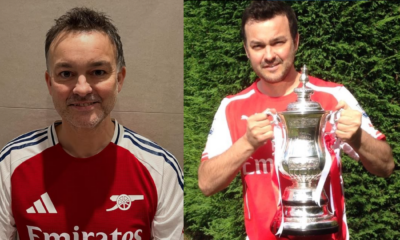
 Awareness4 days ago
Awareness4 days agoMarathon runner diagnosed with terminal cancer urges people not to dismiss small symptom he experienced
-

 News1 week ago
News1 week ago9 Eerie Stories Of Third Man Syndrome, When People Claimed An Unseen Presence Helped Them Survive A Disaster
-

 Entertainment2 weeks ago
Entertainment2 weeks agoJames Franco Explained How Life Is Now Different After Being ‘Cast Out’ of Hollywood
-

 Awareness2 weeks ago
Awareness2 weeks ago‘Bleeding Eye’ Virus Sparks Travel Warning and Worldwide Concern – What Is the Incurable Disease?

